It seems we can’t find what you’re looking for. Perhaps searching can help.
Sign Up for newsletter!
Subscribe to get the latest eBook!
Hotline






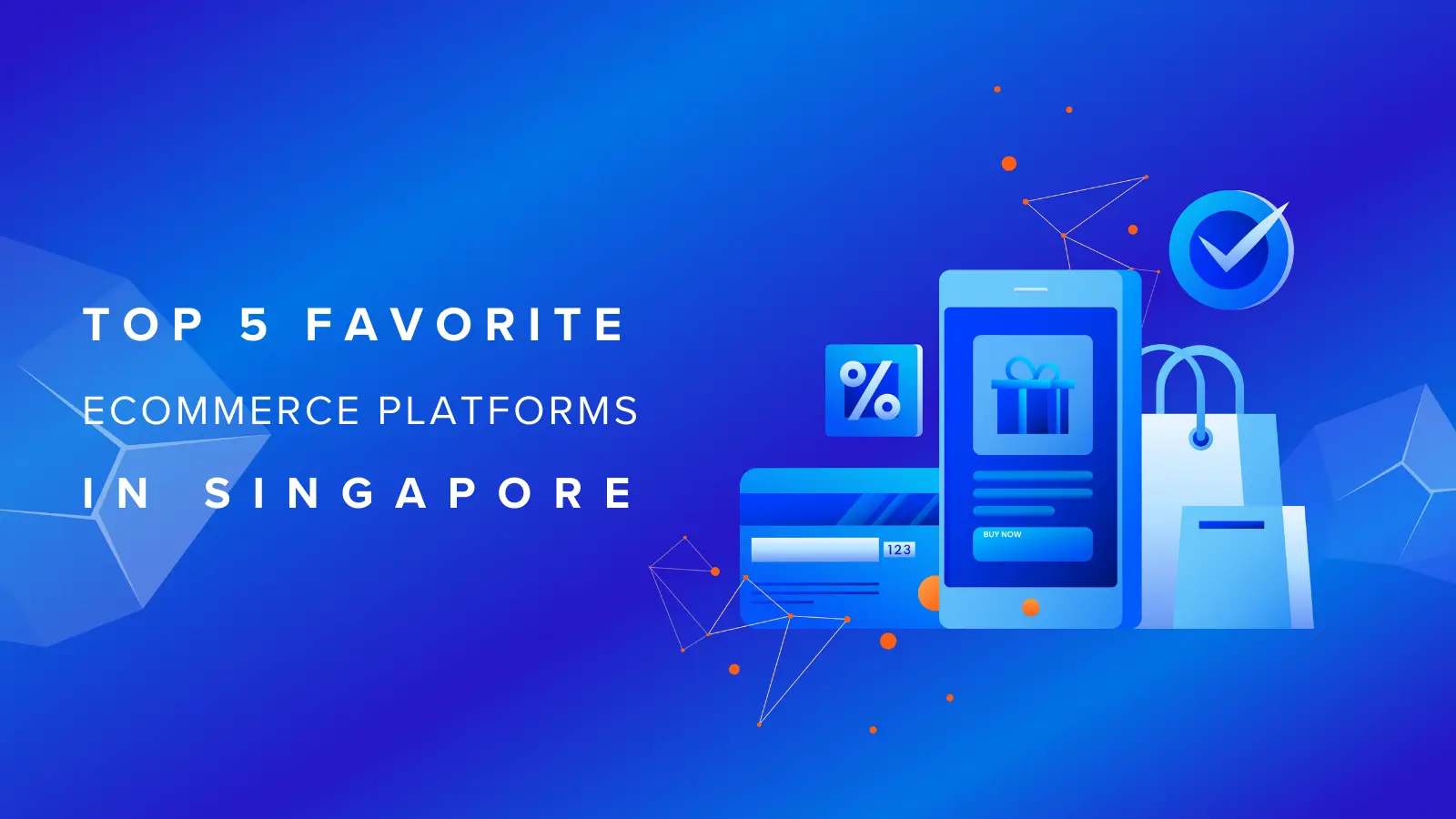
eCommerce in Singapore is continuously evolving with the emergence of new technological solutions. As a result, the options for eCommerce platforms are becoming increasingly abundant and diverse. This presents both opportunities and challenges for every merchant, as selecting the right platform to build an eCommerce website is a crucial first step.
Here are the five most commonly used eCommerce platforms in the Lion City.

Shopify is a popular SaaS eCommerce platform with over 4.8 million active websites. In Australia alone, over 8 thousands live stores are operating on the Shopify platform.
Recently, the premium version of Shopify, ‘Plus,’ has garnered attention from businesses across various sectors in Singapore. These merchants may have previously deployed different eCommerce platforms and later switched to Shopify Plus to seek a superior solution. Some merchants initially launched websites with standard Shopify packages and later upgraded to ‘Plus’ to optimize their operations.
Key features:
Pros:
Cons:
Shopify Pricing
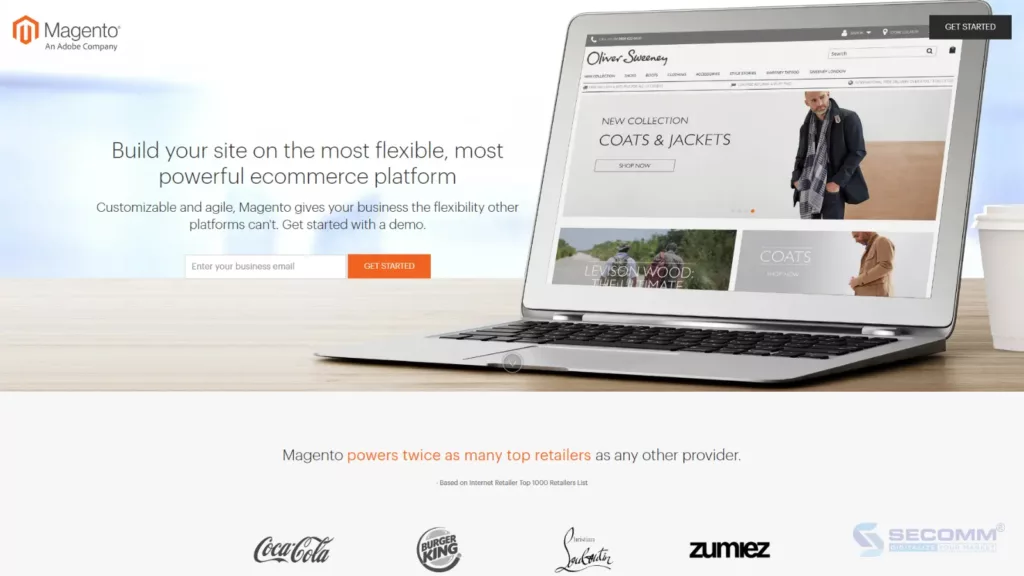
Magento is a globally popular open-source platform, and its prevalence extends to Australia as well. According to BuiltWith, there are currently about 661 e-commerce websites operating on the Magento platform in the Lion Island.
With its high flexibility, merchants can effortlessly tailor features and scale the system according to their unique business requirements.
Presently, Magento provides two versions: Open Source (Free) and Adobe Commerce (Paid).
Key features:
Pros:
Cons:
Pricing:

WooCommerce, a free and open-source WordPress plugin, enables brands to integrate eCommerce functionality into their existing WordPress websites. With just a few clicks, the WooCommerce plugin helps convert a standard WordPress site into a fully-featured eCommerce platform, complete with essential features and easy customization. At the time of writing, there are over 13,000 WooCommerce eCommerce websites operating effectively in Singapore.
Key features:
Pros:
Cons:
Pricing: Free to use. However, some integrations with other plugins may incur charges.
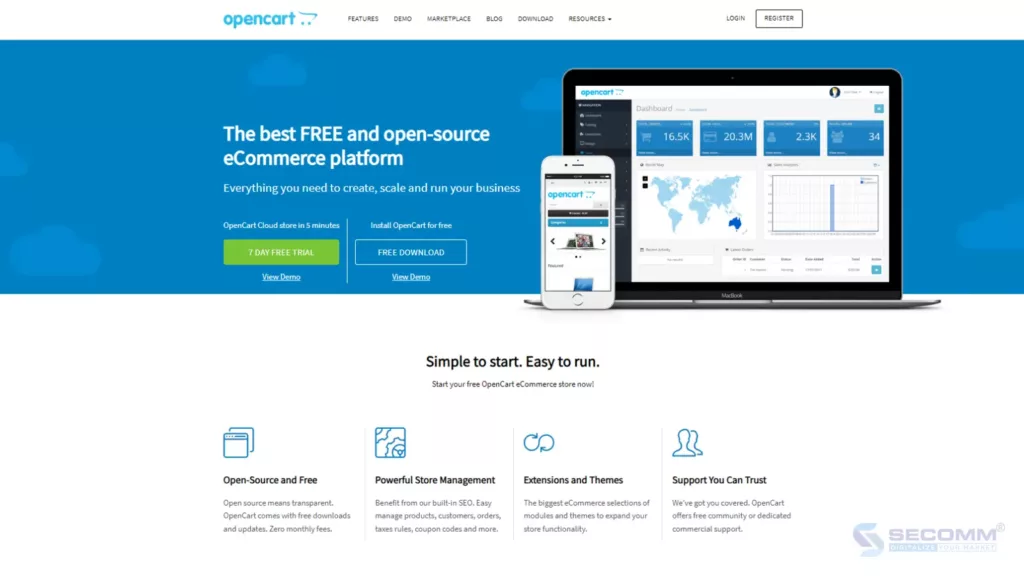
OpenCart is a globally popular open-source eCommerce platform, powering over 900 thousand active websites worldwide. In Singapore, it has gained popularity with more than 1,600 live OpenCart sites, establishing itself as a favored open-source platform in the country, following Magento.
Founded by Daniel Kerr in 1998, OpenCart operates as open-source software, utilizing the PHP programming language. It currently offers two versions: Free (Free-to-use version) and Cloud Store (Paid version).
Key features:
Pros:
Cons:
Pricing:
Free for the Free version. For the Cloud Store version, the specific costs are as follows:
The ‘Cloud Store’ version pricing plan

Another open-source platform that is equally popular in Singapore is PrestaShop, with over 270 eCommerce websites currently in operation. The strength of PrestaShop lies in its flexibility and high customization capabilities, allowing users to easily adjust functionalities and interfaces to meet their specific needs. Additionally, with a vibrant developer community and thousands of available modules and themes, PrestaShop not only provides a comprehensive eCommerce solution but also continuous support to ensure that websites run smoothly and efficiently.
Key features:
Pros:
Cons:
Pricing: Free to use, but charges apply for complex requirements
These are the five popular eCommerce platforms in Singapore that many merchants choose to build their eCommerce websites. Depending on specific implementation needs, businesses can consider the most suitable platform.
Need more advice? Contact SECOMM today!
 2
2
 1,591
1,591
 0
0
 1
1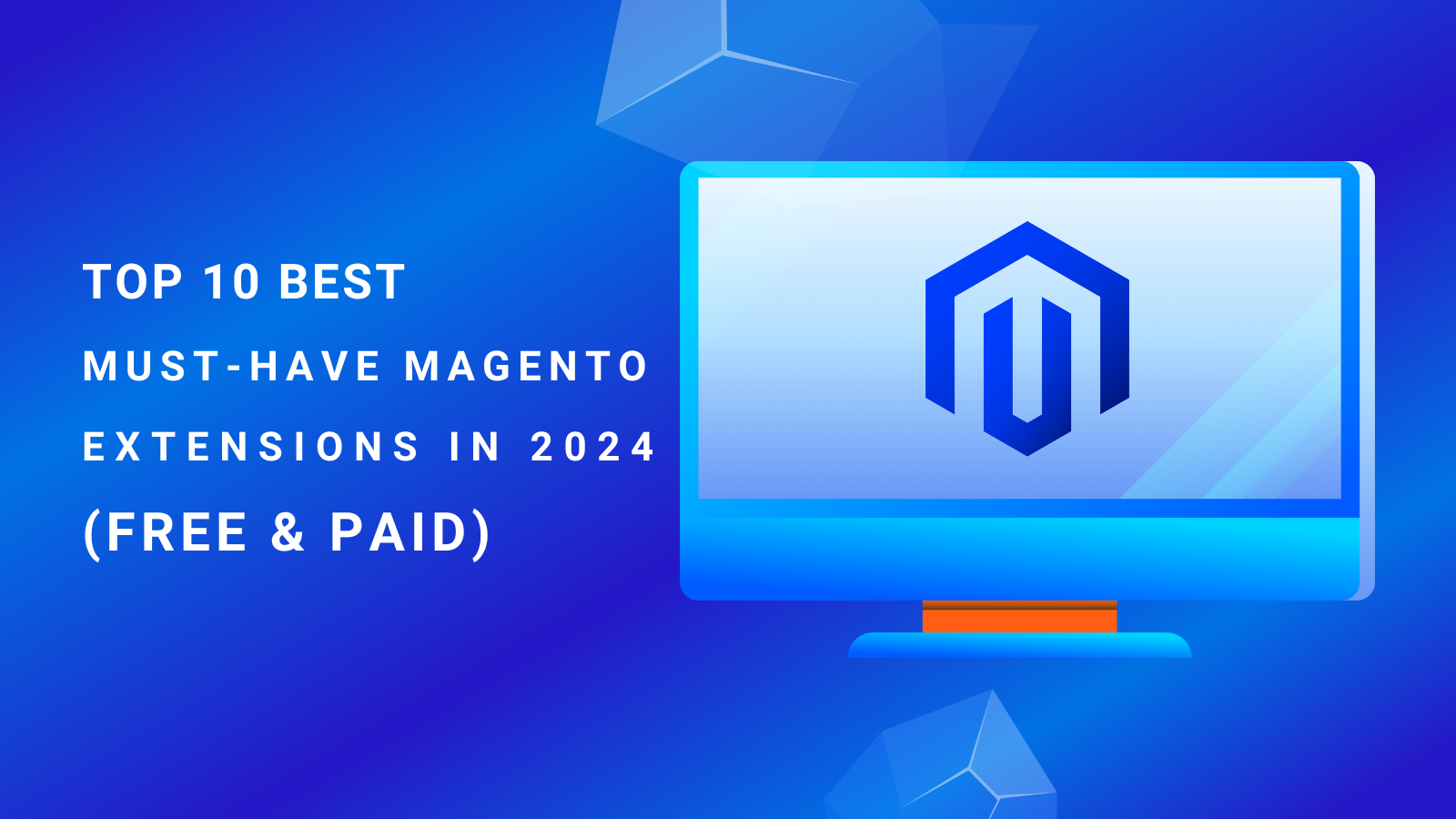
Using Magento extensions isn’t just a trend; it’s a critical factor for the success of an eCommerce website. With the ever-growing market, delivering an optimized online shopping experience has become a must for attracting and retaining customers.
In this context, integrating best-suited Magento extensions into the website system will enhance performance, streamline management, and enrich customer engagement. Let’s explore the top 10 Magento extensions worth integrating to ensure your eCommerce website stands strong amidst fierce competition.
Before delving into the list of top Magento extensions, let’s gain a deeper understanding of this concept. Magento extensions are simply additional software integrated into the Magento platform to extend the functionality and capabilities of Magento websites. These extensions can provide new features, enhance user experience, optimize management, and upgrade core functions such as marketing, payments, shipping, and more.
These extensions are developed by the Magento community, including software development companies and eCommerce service providers. Most of them are available in both free and paid versions. While the free versions typically offer basic features, the paid versions often include advanced features and deeper support services.
Choosing the right Magento extensions is a crucial part of building and managing a successful eCommerce website on the Magento platform. Let’s explore four benefits that using Magento extensions brings:
Extensions help expand the functionality of Magento websites by adding new features and capabilities that the core system doesn’t provide. For example, businesses can integrate advanced search features to make it easier for customers to find products, add filters for customers to sort products based on various criteria, or integrate social features to encourage sharing and interaction on social media. As a result, Magento websites can offer a more engaging shopping experience, retaining and attracting more customers.
One of the significant challenges of managing eCommerce websites in general and Magento websites in particular is efficiently managing inventory, orders, and customer information. Magento extensions provide smart inventory management tools, user-friendly order management interfaces, and integration with customer relationship management (CRM) systems. Thus, businesses can save time and effort in managing daily business operations and focus on more critical development goals.
eCommerce websites are not just places for online shopping but also forums where customers can interact with each other and with the brand. Magento extensions offer interaction features such as product review and rating systems, loyalty points programs for loyal customers, and CRM software, helping businesses create a rich and engaging online shopping space.
Lastly, using Magento extensions helps improve business performance by enhancing conversion rates, increasing sales revenue, and optimizing marketing strategies. Thanks to the flexibility and diversity of these extensions, businesses can customize and adjust their business strategies to meet market needs and achieve sustainable growth.
At the time of writing, the Magento platform offers over 4000 eCommerce extensions across a range of functions including marketing, payment processing, shipping, reporting, and analytics. Here are the top 10 most powerful extensions to consider adding to your Magento website:
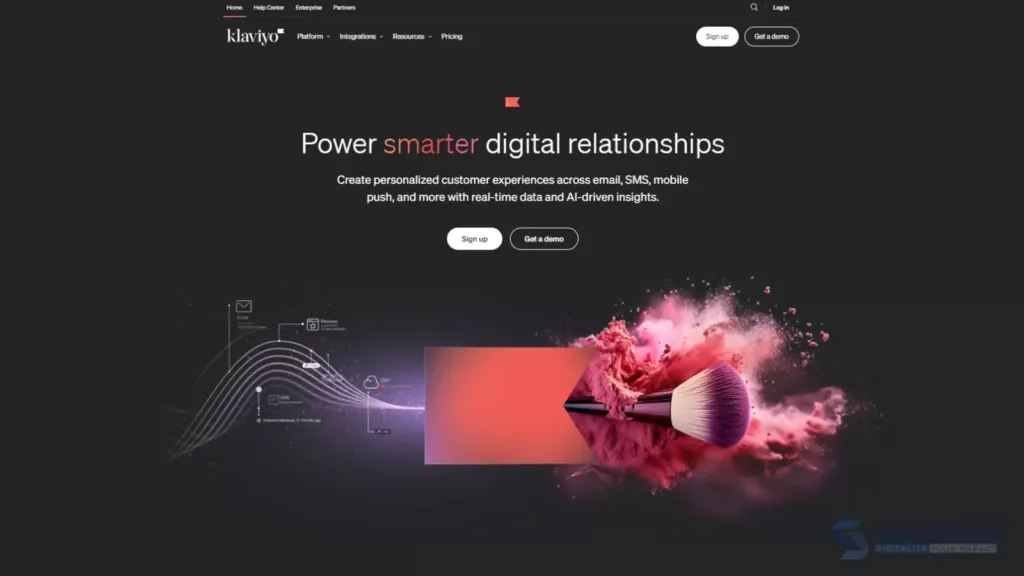
Klaviyo is a powerful tool for email and SMS marketing. With Klaviyo, businesses can create custom and automated email campaigns based on customer behavior, track performance, and interactions to optimize conversion rates and establish closer customer relationships.
Key features:
Pricing:
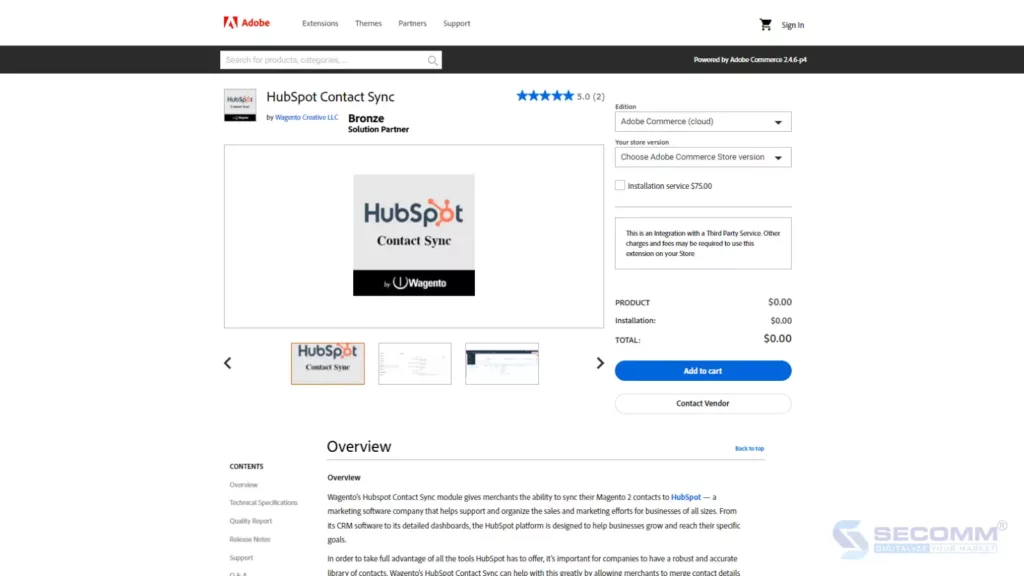
This extension integrates Magento with HubSpot CRM, allowing businesses to automatically synchronize customer information between the two platforms. This facilitates more efficient tracking and management of customer information and enables optimized marketing campaigns.
Key features:
Pricing: Free to use
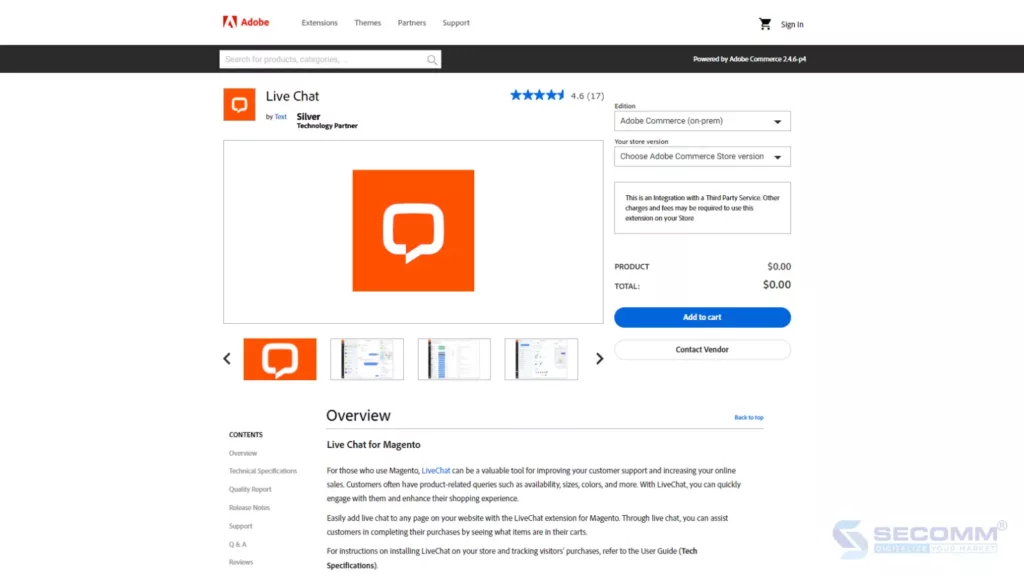
LiveChat is a powerful online customer care solution for Magento. LiveChat helps businesses enhance interaction and provide quick and professional support. This helps businesses improve the shopping experience for customers and increase conversion rates.
Key features:
Pricing:
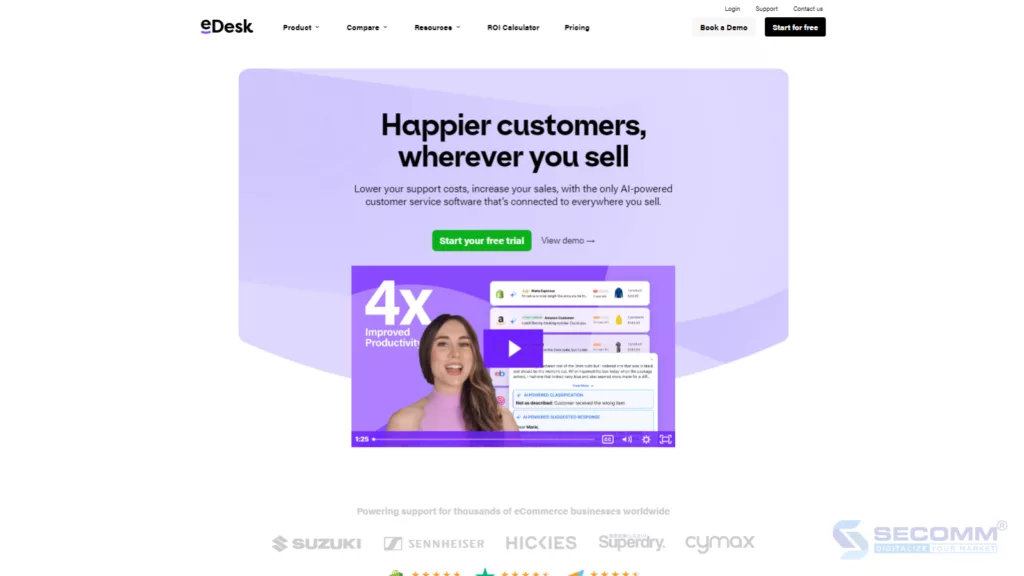
eDesk is a preferred centralized customer service and support management platform by many Magento businesses. This tool helps efficiently manage and respond to customer inquiries in an automated manner. This improves the efficiency of customer service teams and enhances customer satisfaction.
Key features:
Pricing:
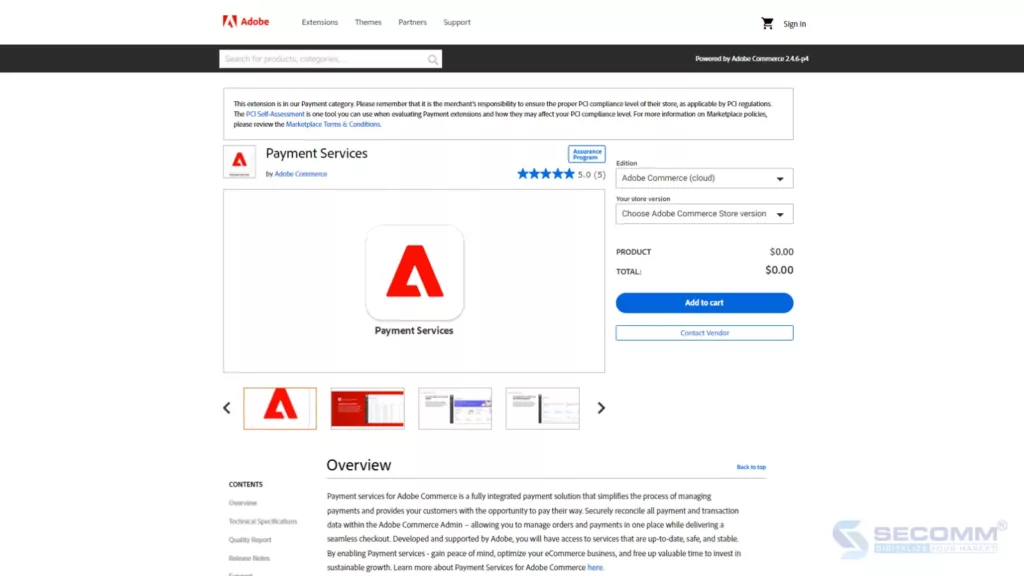
This is an Adobe Commerce extension that simplifies the payment process for businesses and allows customers to pay for orders the way they prefer. This extension ensures security for payment data and transactions, allowing admins to manage orders and payments in one central location while still providing a seamless payment experience.
Key features:
Pricing: Free to use
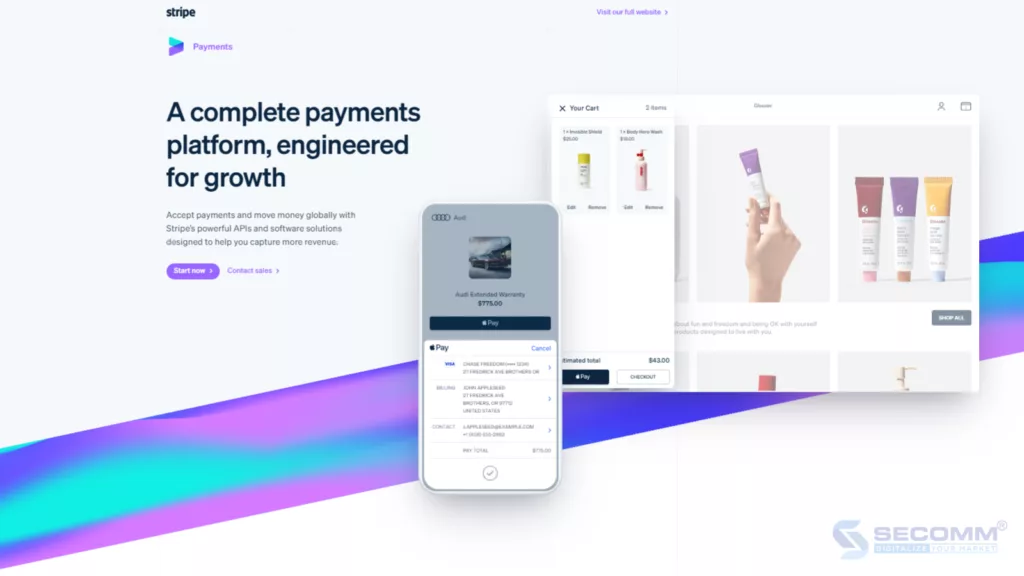
Stripe Payments is a prominent extension of the Magento platform, allowing for easy and secure online payment integration via Stripe, one of the leading payment gateways in the market. Stripe enables businesses to accept various forms of payment, providing convenience and flexibility for both customers and businesses.
Key features:
Pricing:
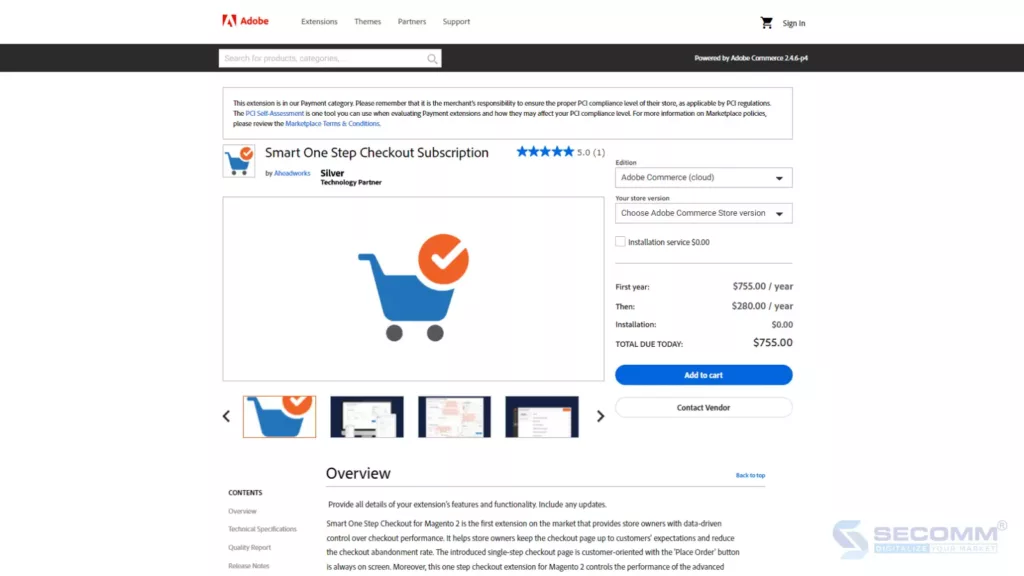
This extension provides a quick and convenient payment experience for customers, helping to reduce the time and steps required to complete an order. This contributes to increasing order completion rates and reducing cart abandonment rates.
Key features:
Price:
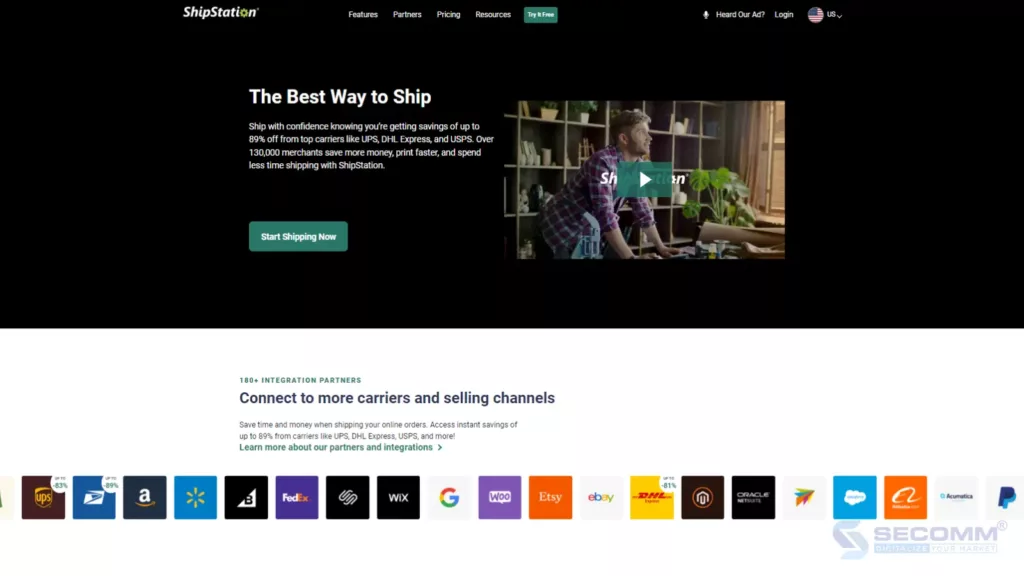
ShipStation is an integrated shipping platform that helps businesses easily manage and ship orders from various sources. By automatically integrating with leading carriers, businesses can save time and effort in processing and shipping orders.
Key features:
Pricing:
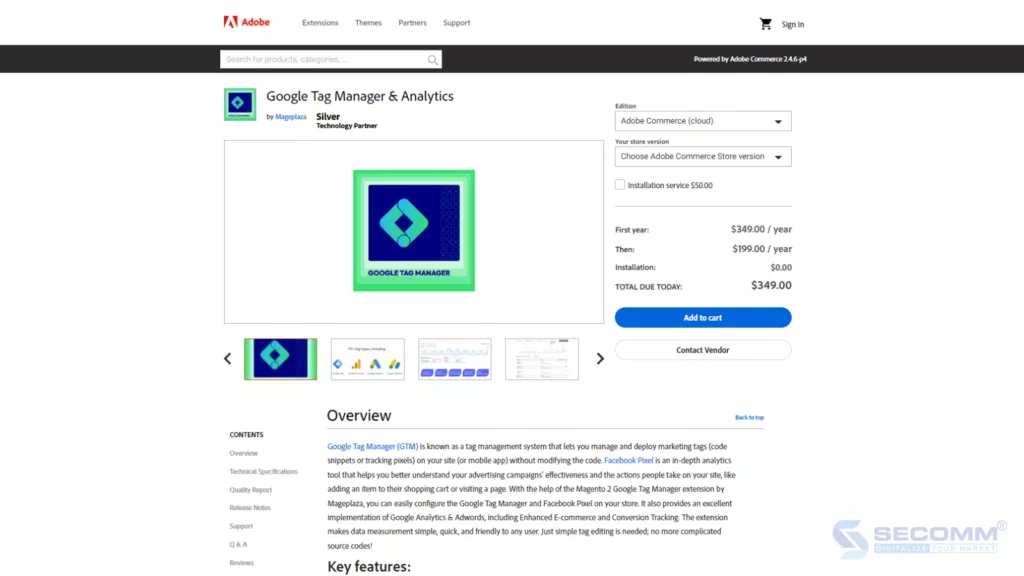
One of the noteworthy Magento extensions to consider integrating is Google Tag Manager & Analytics. This is a Google management and analytics tool that seamlessly integrates with the Magento website system, allowing businesses to track and analyze customer behavior on the website more effectively. With this extension, businesses can easily manage tags and track the performance of marketing campaigns.
Key features:
Pricing:
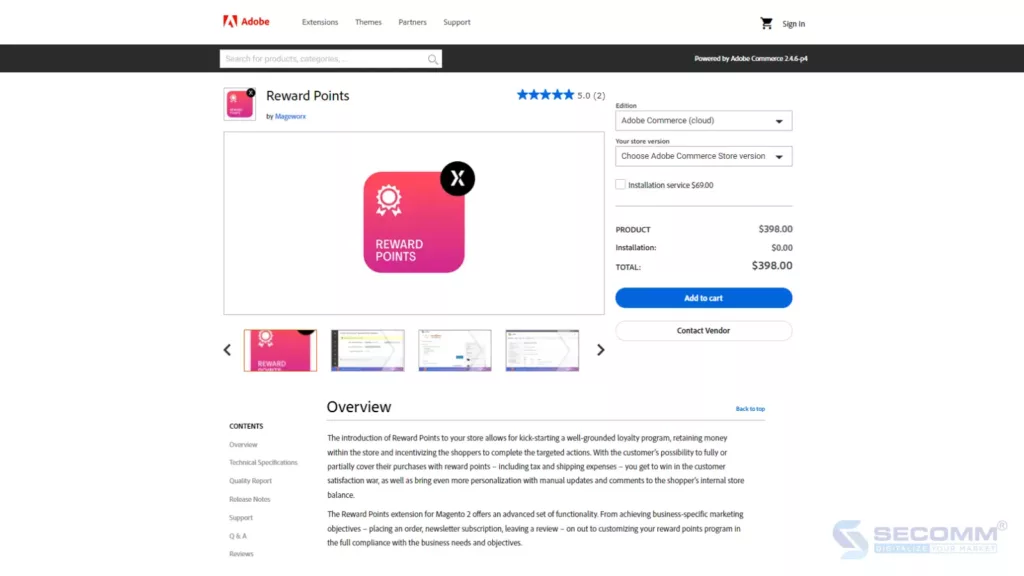
This extension allows businesses to create attractive reward point programs on the Magento website. This contributes to encouraging customer loyalty and increasing conversion rates. By providing rewards for every shopping action, customers are incentivized to return and shop more frequently.
Key features:
Pricing:
Above are the 10 best Magento extensions, ranging from free options to paid solutions. Using extensions provides many opportunities to improve business performance and create the best shopping experience for customers.
Need advice on choosing the best-suited extensions for your Magento store? Contact SECOMM today!
 2
2
 1,889
1,889
 0
0
 1
1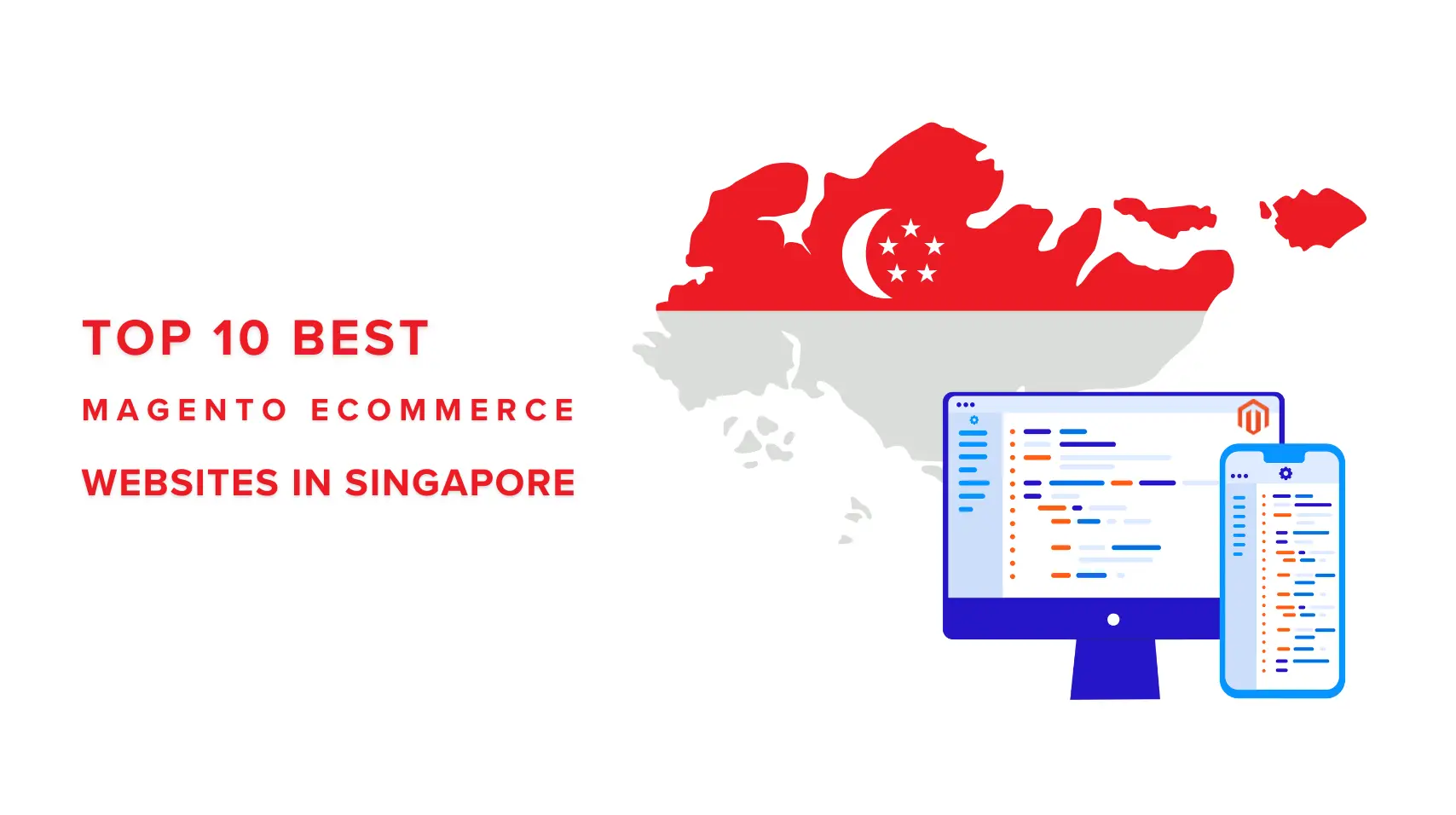
Building Magento eCommerce websites has become an undeniable trend in Singapore, where the blend of technology and creativity has brought unique and appealing shopping experiences to customers. According to Builtwith, there are currently over 600 live eCommerce websites on the Magento platform, and this list is predicted to continue expanding. This indicates that businesses in the Lion City have chosen Magento to create high-quality eCommerce websites, attracting customers and boosting sales.
In this article, let’s explore the top 10 Magento websites in Singapore that have leveraged the power of Magento to enhance the customer experience.
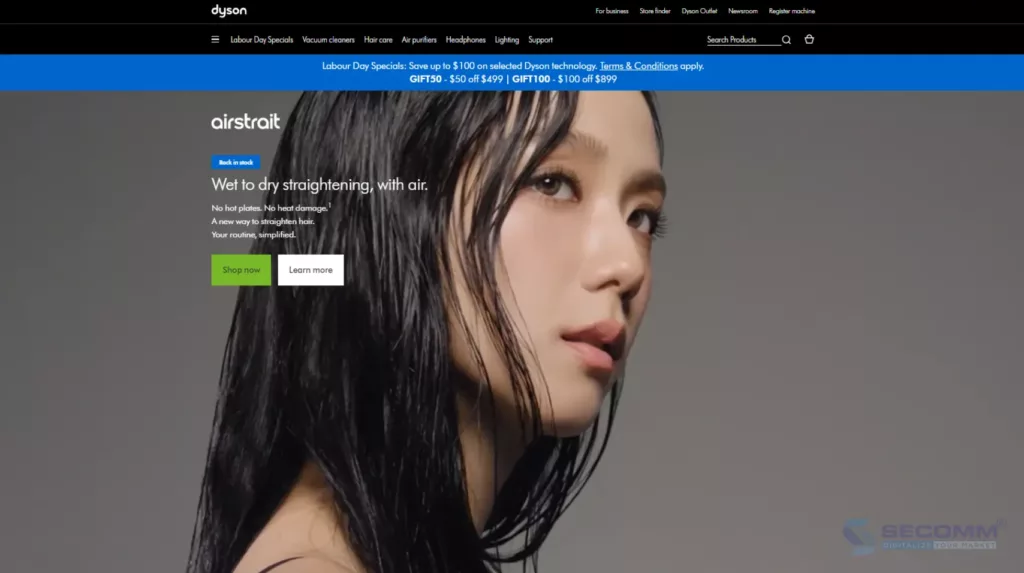
Dyson Singapore is not just an ordinary eCommerce website but also a destination for technology and premium design enthusiasts. With a range of products from vacuum cleaners to smart fans and hair dryers, Dyson continually innovates and enhances the quality of consumers’ lives.
Dyson’s Magento website is designed to provide an optimal shopping experience. From its bright and user-friendly interface to smart product search and categorization features, every detail is carefully crafted to ensure customers have the best online shopping experience. Additionally, Dyson is renowned for its excellent customer care service. From detailed product guidance to flexible return policies, they are committed to ensuring absolute satisfaction for every customer.
Website: https://www.dyson.com.sg/
Industry: Consumer Electronics
Traffic: 690,356/month
Ranking: #1,599 (Singapore) & #292,561 (Global)
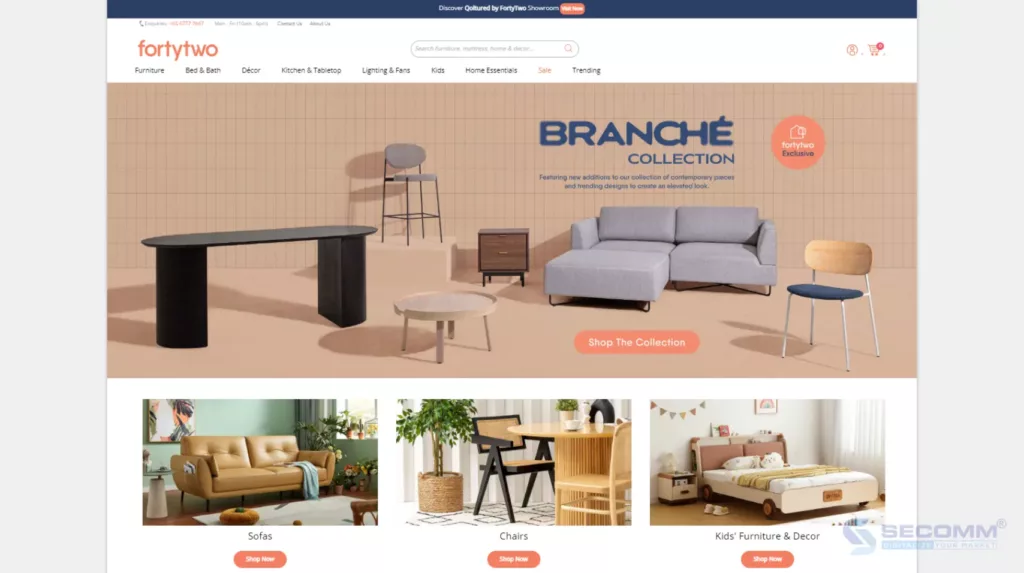
FortyTwo is one of the reputable destinations for household and interior decoration shopping in Singapore. With a diverse collection ranging from living room furniture, bedroom sets to household essentials, FortyTwo offers customers a convenient and varied online shopping experience.
FortyTwo’s eCommerce website is built on the Magento platform, focusing on creating a user-friendly interface. Not only does it display products clearly, but it also provides flexible product search and filtering features, making it easy for customers to find items that reflect their style and personal needs.
Website: https://www.fortytwo.sg/
Industry: Furniture
Traffic: 625,855/month
Ranking: #493 (Singapore) & #107,563 (Global)
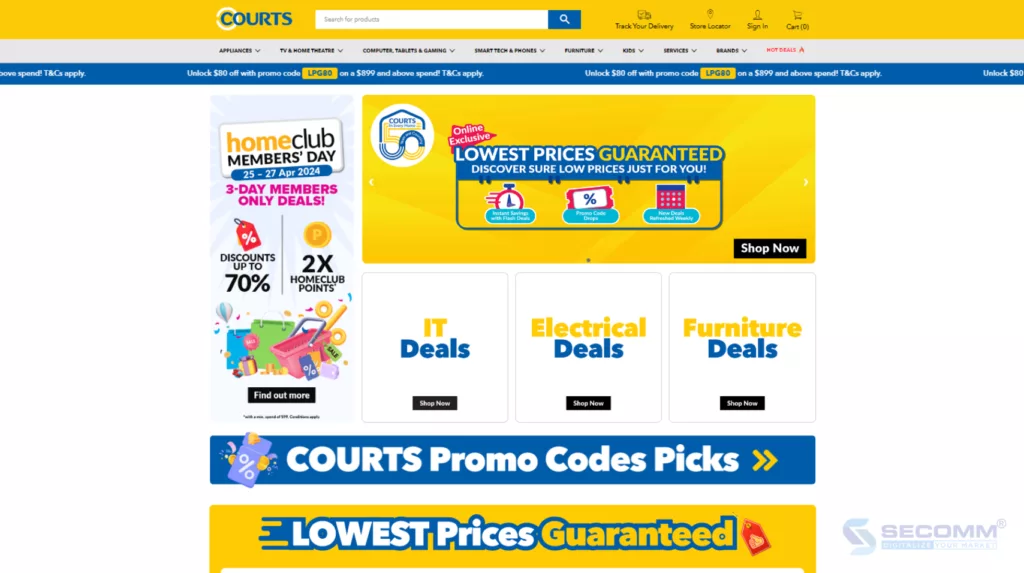
COURTS is known as the leading retailer in Singapore, specializing in a range of diverse products from furniture, electronics to household services. With over 14 stores across the island and a convenient e-commerce website, COURTS is the ideal destination for all shopping needs of Singaporean families.
COURTS’ Magento eCommerce website is designed and built to ensure an easy and comfortable online shopping experience. Through the Magento website, COURTS customers can easily search and select from a variety of high-quality products with flexible search and sorting features.
The brand stands out not only with its diverse products but also with its professional customer service. From shopping advice to delivery and installation services, they are committed to providing maximum satisfaction for every customer.
Website: https://www.courts.com.sg/
Industry: Consumer Electronics
Traffic: 510,240/month
Ranking: #502 (Singapore) & #105,498 (Global)
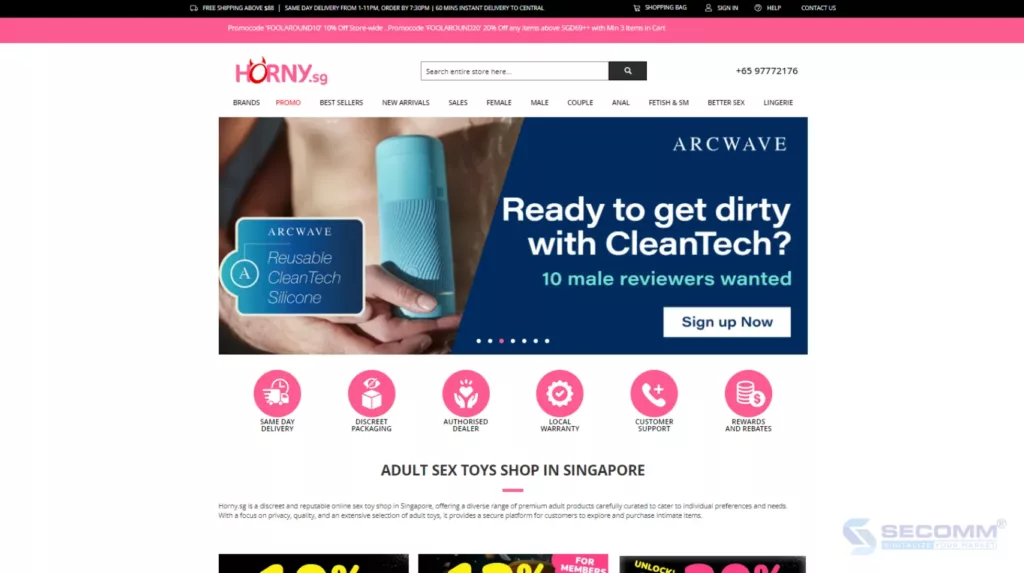
Horny is a unique eCommerce website based in Singapore, focusing on providing modern adult accessories. With a mission to help customers feel confident and satisfied in their romantic lives, Horny has created an enjoyable and convenient shopping experience through the Magento platform. Horny’s Magento eCommerce website is built with a focus on creating a reliable and user-friendly online shopping space. From attractive interface layouts to clear and detailed product displays, every detail is meticulously crafted to create the best shopping experience. Additionally, Horny stands out with the diversity of fashion and accessory products. Customers can easily find items that suit their individual needs.
Website: https://horny.sg/
Industry: Adult
Traffic: 482,417/month
Ranking: #1,133 (Singapore) & #193,753 (Global)
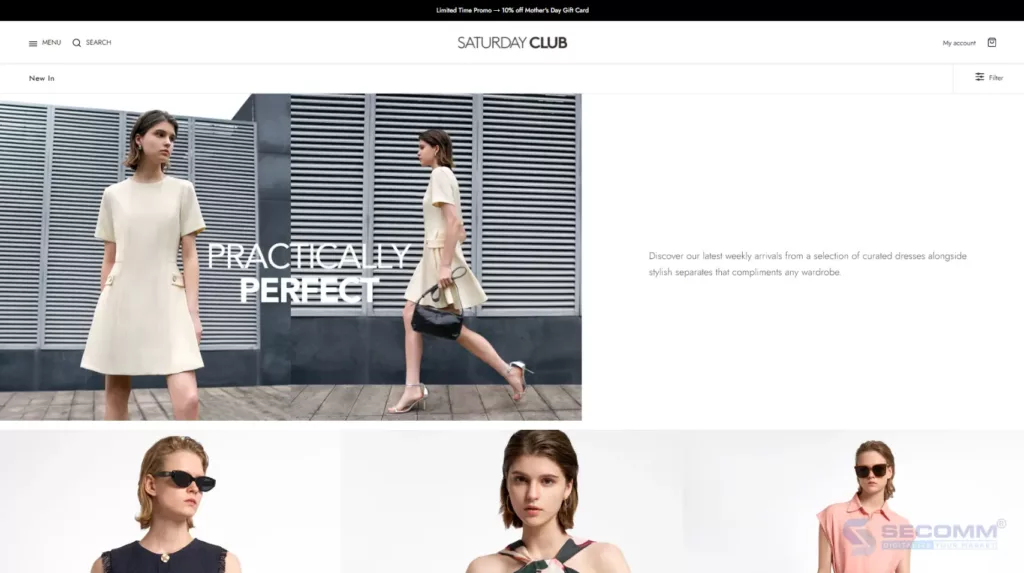
Saturday Club is not just a fashion brand but also an icon of confidence and freedom in women’s workwear fashion in Singapore. With a creative spirit and a mission to celebrate natural beauty, Saturday Club continuously brings fresh, stylish, and unique fashion collections.
Saturday Club uses Magento to develop its eCommerce website to provide customers with a smooth shopping experience with an easy-to-use interface. Customers can easily choose from a variety of products and the latest collections, with detailed information and clear images. Additionally, the brand stands out with attentive customer care service and fast and flexible delivery policies.
Website: https://sg.saturdayclub.com/
Industry: Fashion
Traffic: 406,335/month
Ranking: #2,115 (Singapore) & #240,670 (Global)
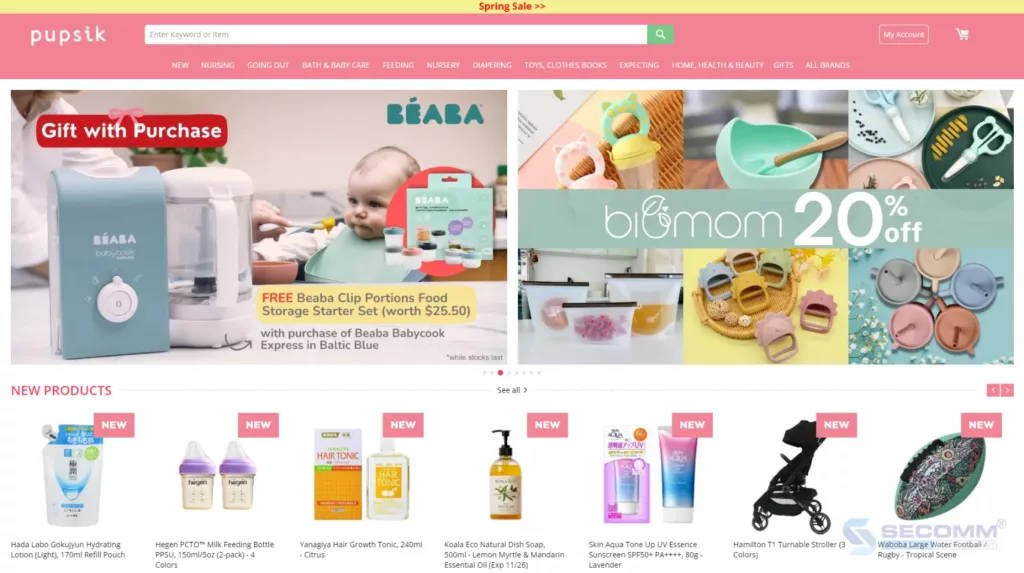
Pupsik is the go-to online shopping destination for parents in Singapore, where they can find everything they need for the care and nurturing of their children. With a humane mission and special attention to the needs of families, Pupsik is committed to providing a peaceful and convenient shopping experience.
Pupsik has built its Magento website to easily customize features and shopping experiences. From smart search features to product filtering and optimized checkout pages, every detail is focused on ensuring shopping becomes easy and quick.
In particular, Pupsik is famous for the diversity and quality of products for children and mothers. From clothing, toys to everyday essentials and healthcare products, they ensure that all family needs are comprehensively met.
Website: https://pupsik.sg/
Industry: Childcare
Traffic: 264,148/month
Ranking: #3,684 (Singapore) & #677,191 (Global)

Cellarbration is the ideal destination in Singapore for wine and alcoholic beverage enthusiasts. This brand boasts an extensive collection of wines and alcoholic beverages from top brands worldwide.
Shopping on the eCommerce website is also efficiently optimized by Cellarbration through the power of the Magento platform. From search operations to product browsing and payment, everything is deeply customized to ensure customers have a more engaging shopping experience.
Not only prominent for the richness of products but also for professional and dedicated customer service. Cellarbration is committed to customer satisfaction by providing personalized support and diversifying payment options as well as delivery.
Website: https://cellarbration.com.sg/
Industry: Wine
Traffic: 125,878/month
Ranking#6,676 (Singapore) & #1,075,981 (Global)
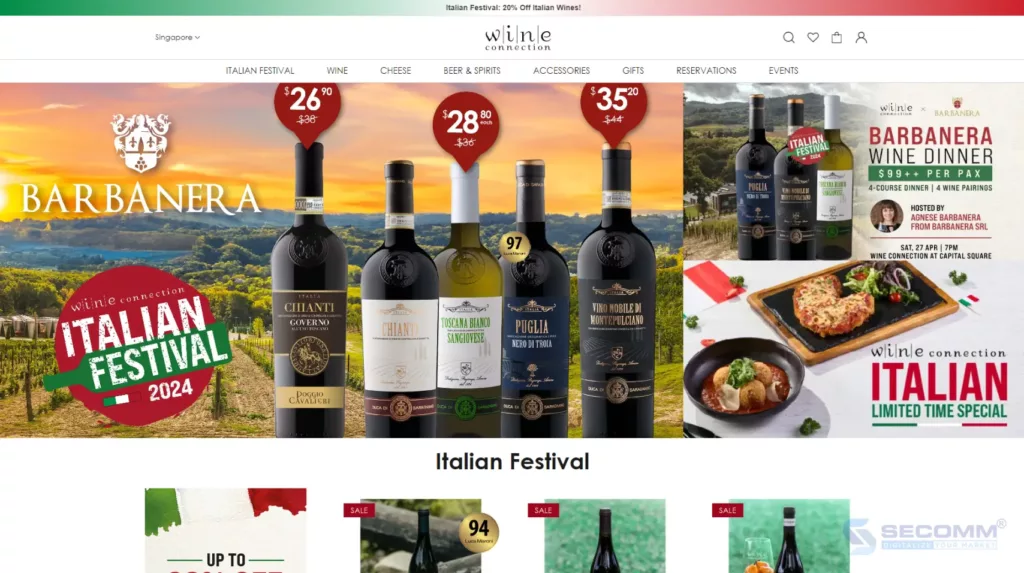
In Singapore, the Wine Collection brand is a favorite destination for wine enthusiasts who want to explore premium wines from the most famous wine regions in the world. Wine Collection also offers customers a rich and diverse collection of wines.
The Wine Collection’s Magento website is customized to optimize the experience, allowing customers to search for wines by origin, grape variety, explore special collections, and choose preferred payment and delivery methods.
Not only does it provide a modern and engaging online shopping space, but Wine Collection also serves as a source of wine knowledge. Customers can find articles and detailed guides on how to choose and enjoy wine to better understand the art and science behind the delicate flavors.
Website: https://wineconnection.com.sg/
Industry: Wine
Traffic: 82,788/month
Ranking: #12,447 (Singapore) & #1,701,444 (Global)

Far East Flora is a brand specializing in providing plant products, fresh flowers, and decorations made from greenery. The Far East Flora Magento eCommerce website is built with a priority on customer experience through a user-friendly interface and deeply developed and customized features. Customers can search for plants by filtering by type, size, and make quick payments with just one page. Additionally, Far East Flora’s fast and reliable delivery service is highly rated by customers. The brand is committed to delivering quality products to customers’ hands safely and promptly, helping them decorate living spaces beautifully and meaningfully.
Website: https://fareastfloragarden.com/
Industry: Gardening
Traffic: 40,864/month
Ranking: #20,995 (Singapore) & #2,327,136
(Global)
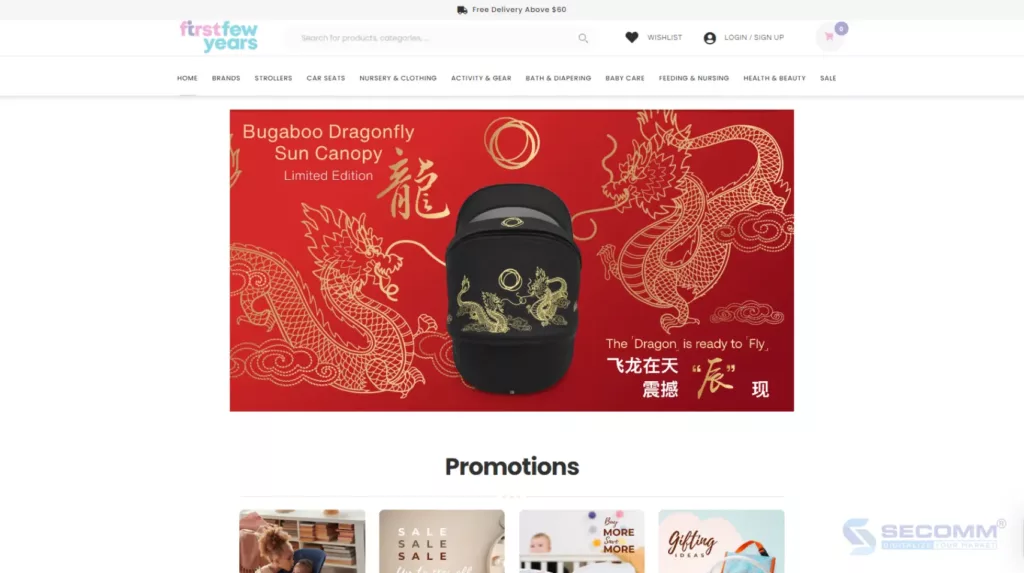
First Few Years is not just a store but also a loyal companion for parents in the journey of caring for their children from the early years. With a dedicated spirit and profound understanding of children’s needs, First Few Years provides a meaningful and trustworthy shopping experience.
The Magento website of this brand is not only a place for shopping but also an important source of information and support for parents. From advising on safe toy selection and development to sharing experiences in childcare, all information is conveyed sincerely and meticulously.
Website: https://firstfewyears.com.sg/
Industry: Childcare
Traffic: 10,245/month
Ranking: #86,167 (Singapore) & #7,519,723 (Global)
The Bottom Line
Above are 10 leading Magento eCommerce websites in Singapore, each providing customers with a unique and memorable shopping experience. From product diversity to professional customer service, each website has prioritized the mission of serving and satisfying customers.
Need more advice to build your first Magento website? Contact SECOMM today!
 2
2
 1,517
1,517
 0
0
 1
1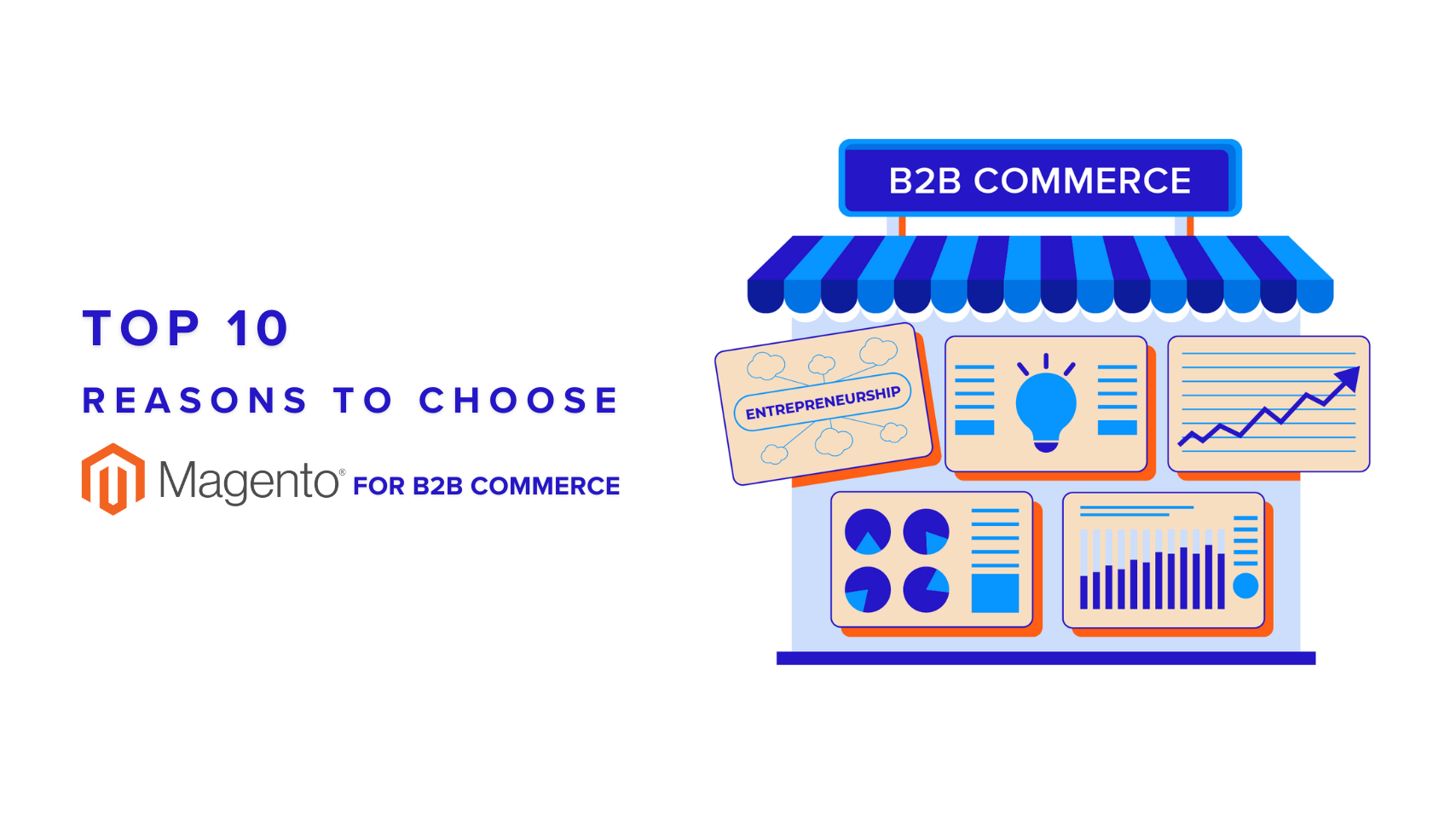
Over the past decade, Magento has solidified its position as one of the leading eCommerce platforms in the market. With its robust capabilities, the platform serves not only B2C businesses but is also a popular choice for enterprises.
By combining Magento’s strength with the specific requirements of B2B Commerce, you can leverage this platform’s powerful benefits. In the following part of the article, let’s explore 10 reasons why Magento is the ideal choice for deploying this great business model.
Business-to-business commerce (B2B Commerce) refers to the buying and selling of goods or services between businesses rather than between a business and end consumers (B2C). In the B2B environment, transactions often occur on a large scale and involve large orders, long-term contracts, and strategic partnerships.
This business model has distinct characteristics and requirements compared to B2C Commerce. In the B2B world, businesses typically have more complex demands regarding product management, order management, customer management, and compatibility with enterprise resource planning (ERP), customer relationship management (CRM), and other systems.
Additionally, the business model often requires features such as order confirmation, complex payment processes, batch ordering, and wholesale pricing. For B2B enterprises, choosing a suitable eCommerce platform is crucial to ensuring business efficiency and delivering the best user experience for their partners and customers.
Magento is a powerful and flexible eCommerce platform developed by Magento Inc., a subsidiary of Adobe. Launched in 2008, it quickly became one of the top choices for you looking to build and operate professional online stores.
It allows you to create custom eCommerce websites. This platform provides a range of features, including product management, order management, payment integration, customer management, and many others, enabling you to easily manage and operate your online stores efficiently.
It is built on open-source code, meaning that you can access and customize the platform’s source code based on specific technical requirements.
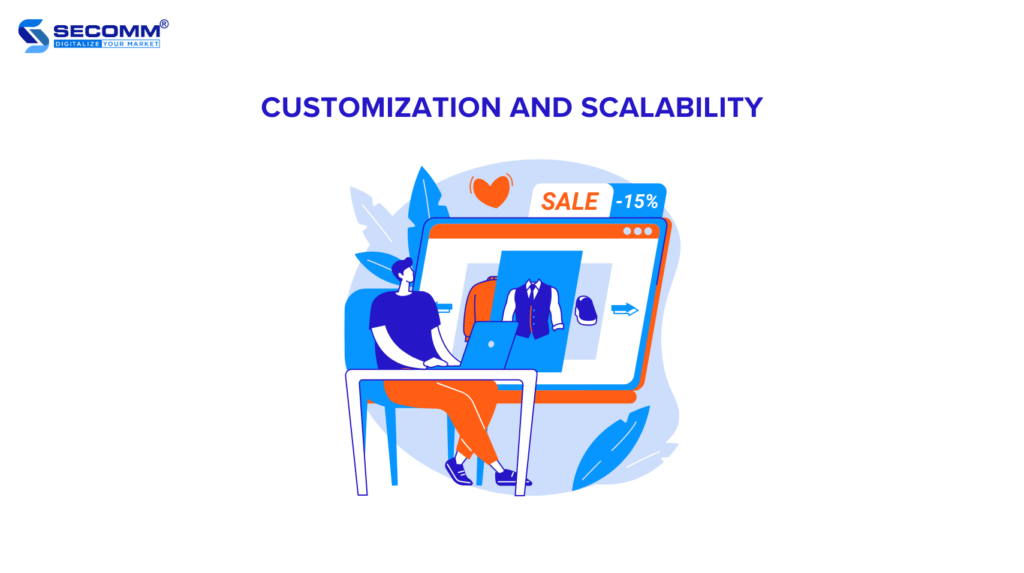
Magento’s open-source platform characteristic enables businesses to easily and effectively expand their business scale. This is particularly important as businesses grow and must enhance the system’s scalability.
Additionally, the platform provides high customization capabilities, allowing businesses to adjust to their specific business needs flexibly. This also means that the shopping experience can be customized to become unique and tailored to the target customers.
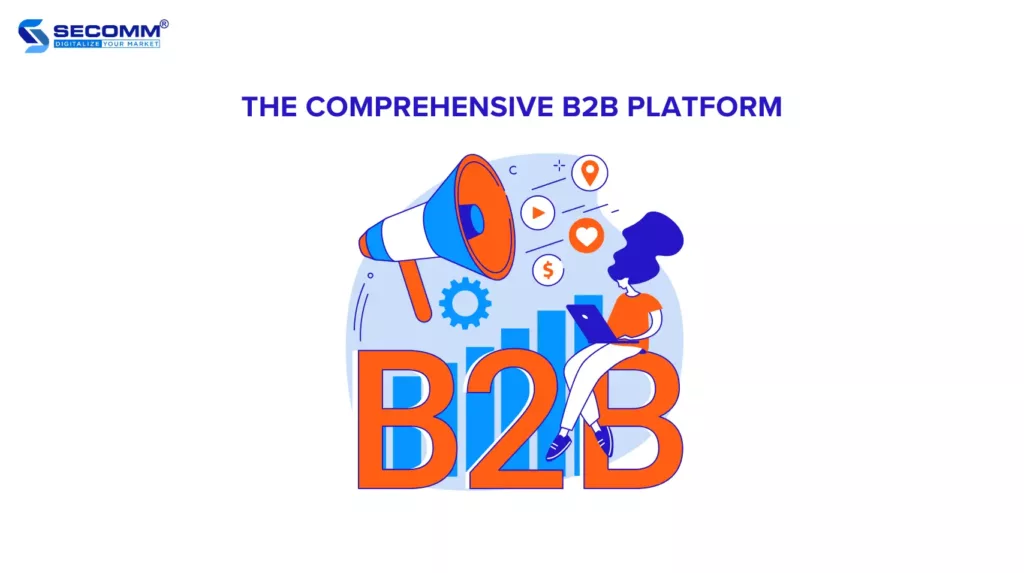
In addition to offering built-in Magento B2B features, the platform allows businesses to seamlessly and quickly integrate with many third-party applications and systems, thereby creating a comprehensive and automated eCommerce system. Some integrated systems may include:
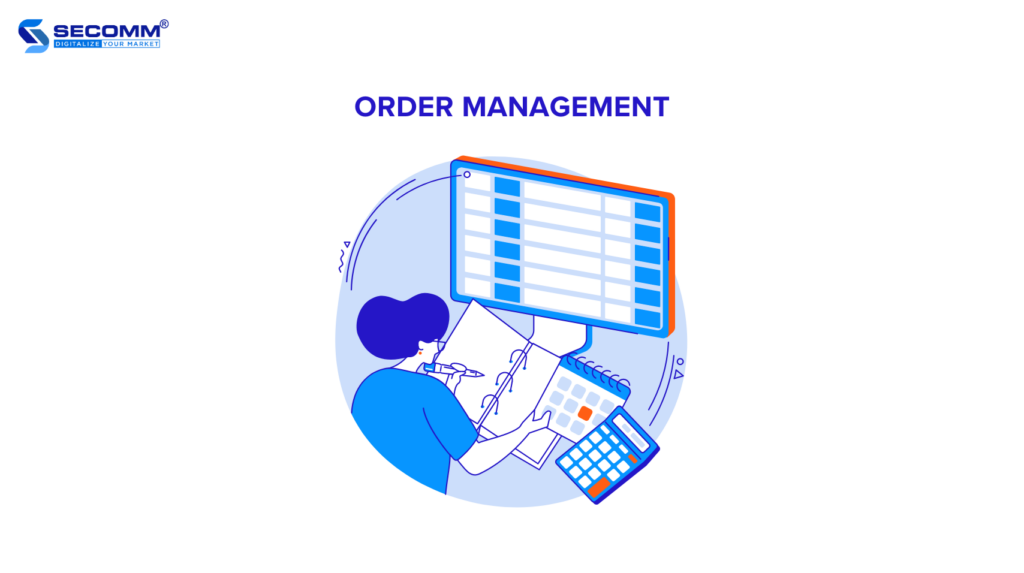
Magento B2B provides a variety of order management features, from creating and editing orders to tracking and processing orders efficiently. This helps B2B businesses easily monitor and manage their orders accurately and consistently.
Additionally, it offers tools and features that allow tracking and analysing their orders’ performance. From generating overview reports to tracking order history and purchasing trends, the eCommerce model deployed, you can better understand your activities and make informed strategic decisions.
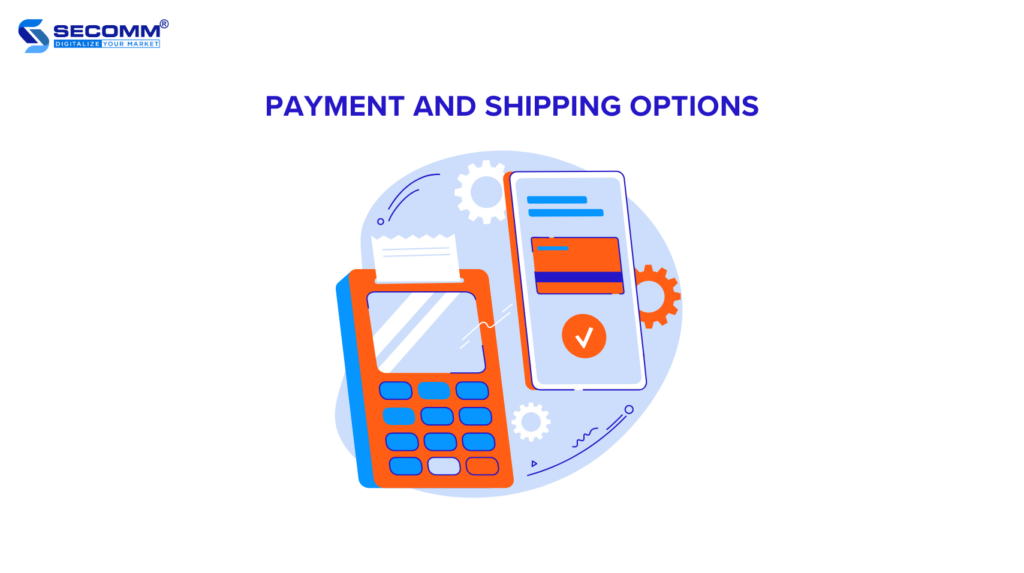
Implementing Magento B2B allows you to offer more payment methods to customers, from online payments through electronic payment gateways to cash on delivery (COD).
Additionally, you can integrate various payment gateways through Magento, such as PayPal, Stripe, Authorize.Net, and many more. This ensures security and convenience in the payment process for both businesses and customers.
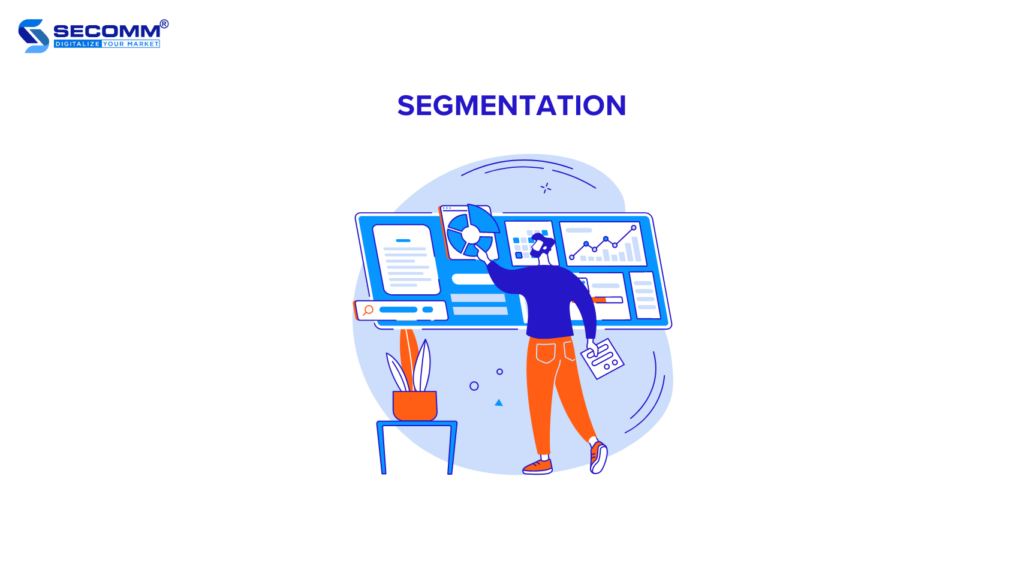
Magento B2B provides features and tools to implement customer segmentation strategies effectively. Among these, the most notable is the Advanced Reporting feature, which provides a dashboard for tracking and analyzing sales data.
With this feature, businesses can segment customers and customize experiences based on web browsing behavior, purchase history, and various other criteria.
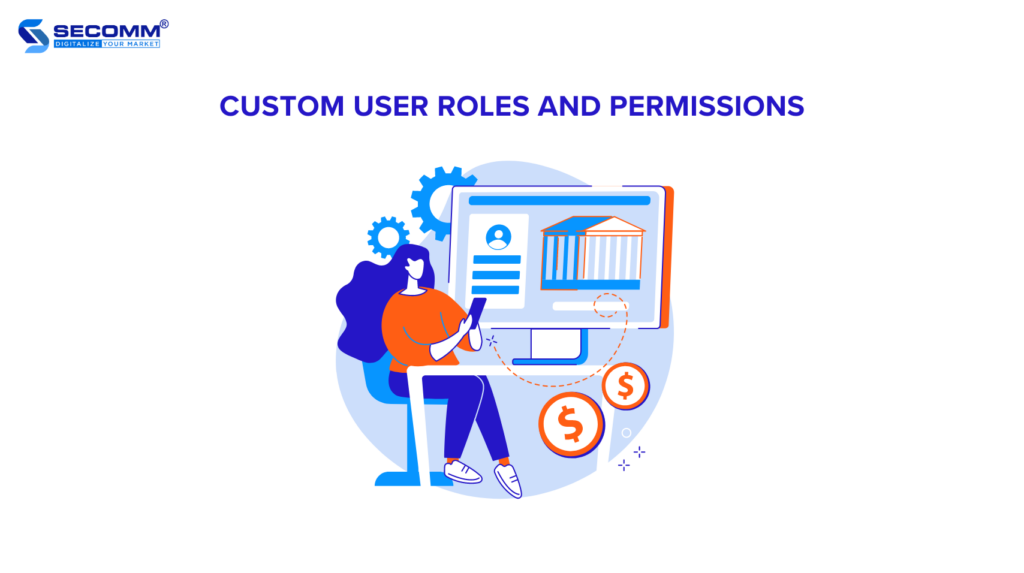
Customizing user roles and permissions is an important part of optimizing the B2B purchasing process. This feature allows B2B customers to create multiple accounts with different contact details for purchasing, ordering, quoting, negotiating, and payment. Additionally, Magento B2B allows sellers to create and assign admin accounts to manage specific customers.
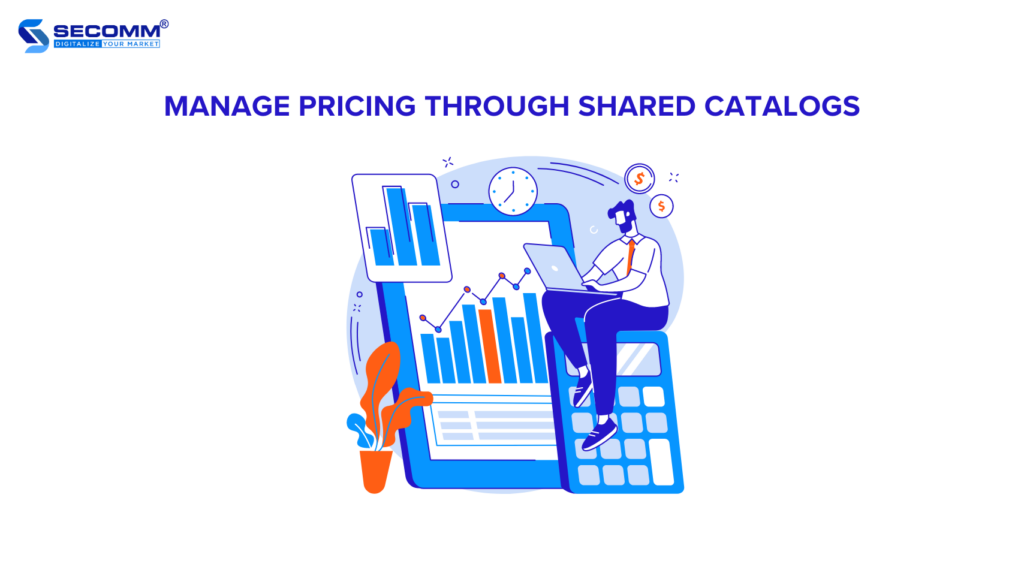
In B2B Commerce, Magento helps manage quotations through shared catalogs, which effectively provides product information and prices to B2B partners and customers. These catalogs can be created based on criteria such as product type, product group, or other suitable business needs.
Within each shared catalog, administrators can define prices and special conditions for each product or product group. This helps create customized quotations that meet the specific requirements of each customer.
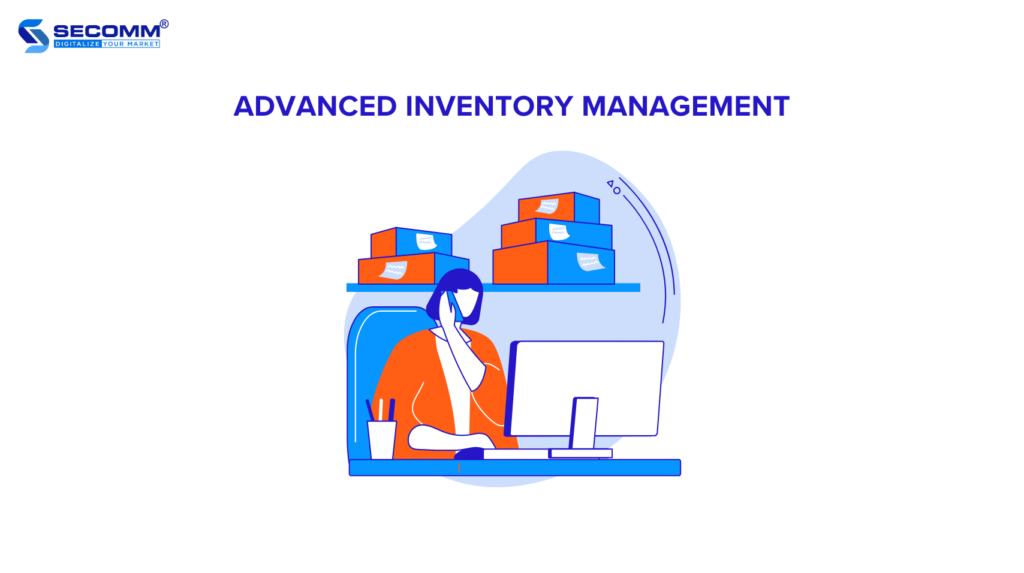
Inventory management is a challenging task for businesses implementing B2B Commerce. The eCommerce platform provides advanced features to effectively manage and control your inventory levels. These features allow administrators to track inventory quantities and forecast future inventory needs.
Additionally, Magento B2B helps manage special types of inventory such as damaged goods, special inventory items, or batch inventory.
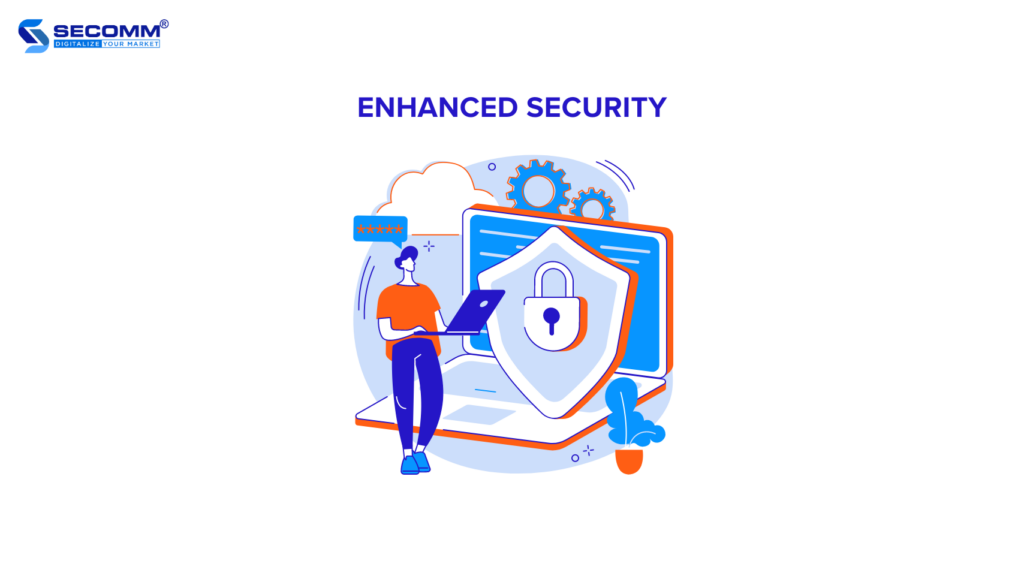
Security is an important issue when building and developing online stores in general. Magento provides many advanced features to help B2B businesses to secure their eCommerce systems. Among these, PCI Compliance, 2FA, WAF, DDoS protection, and preventing CSRF and XSS attacks are notable.
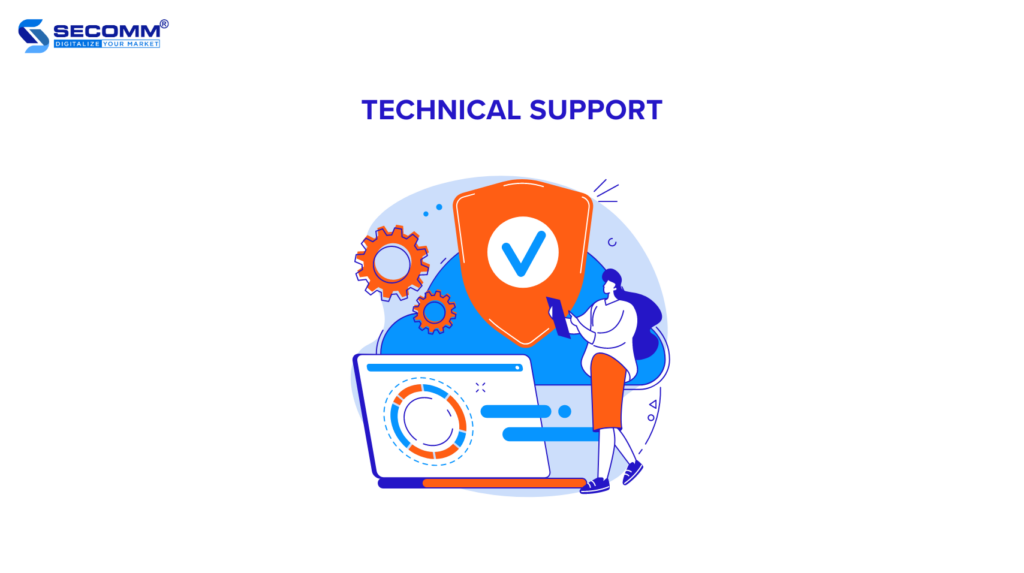
Technical support plays a crucial role in maintaining and operating an efficient online store. Magento B2B provides tools and support services to help users address technical issues and optimize the performance of their eCommerce websites.
This includes expert support via phone, email, or online. Additionally, Magento has a large and vibrant community of developers, experts, and end-users. You can search and ask questions on the forum to receive assistance from the community.
In the context of the increasingly developing and fiercely competitive eCommerce market, using a powerful eCommerce platform is extremely important to ensure the success. With its unique features and superior flexibility, Magento has proven to be a top choice for building and developing B2B stores.
Need more deep advice? Contact SECOMM or call (+84)28 7108 9908 now!
 2
2
 3,289
3,289
 0
0
 1
1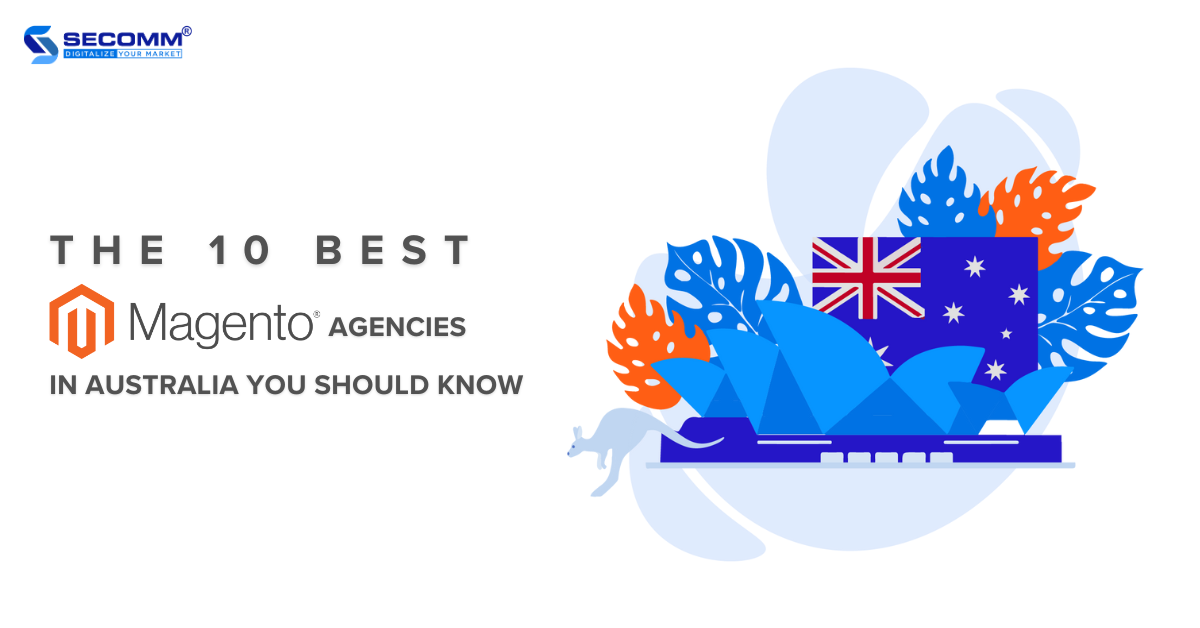
In recent years, the emergence of many Magento agencies has helped the Australian eCommerce market grow. These developers are experienced and trustworthy, not only Magento experts but also reliable companions, ensuring their clients succeed online.
In this article, let’s explore the top 10 Magento agencies in Australia, helping you find the right partner for your project.
Read more: Top 10 Magento eCommerce websites in Australia
Magento (now owned by Adobe Commerce) is an open-source system for building customized eCommerce websites. It is highly flexible and offers a range of powerful features to make website building and management more efficient.
From creating attractive and user-friendly interfaces to managing products, orders, and customers, Magento provides a comprehensive infrastructure to optimize the online shopping experience.
Partnering with Magento agencies can be beneficial in implementing your eCommerce project. Here are four essential reasons to consider working with a partner specialized in the Magento platform.
Magento agencies typically have teams of experts who deeply understand this platform. Most of these companies will participate in the Adobe Commerce Partners program, where the platform supports them regarding technical support, learning resources, commission earnings, and branding.
Furthermore, these agencies must demonstrate that they meet the standards to become official Magento partners. Therefore, partnering with them will help you launch your eCommerce websites quickly and optimize business performance by leveraging features and integrations.
Optimizing the performance of Magento websites is crucial to ensuring customers’ best shopping experience and increasing conversion rates. Professional Magento agencies can optimize the source code, improve page loading speed, and optimize checkout pages, helping businesses effectively attract and retain customers.
Partnering with a Magento development company can help save time and costs compared to building and managing an eCommerce website independently. This is especially true if you have limited time and must go live with your eCommerce website as soon as possible.
Working with such developers becomes even more worth considering. These agencies already have the tools, processes, and experience to deploy projects efficiently and quickly.
Magento’s open-source nature allows developers to help you integrate third-party applications and extend website functionality based on specific needs. Additionally, they can provide custom solutions and development extensions, ensuring your eCommerce operations continually evolve and meet market demands.
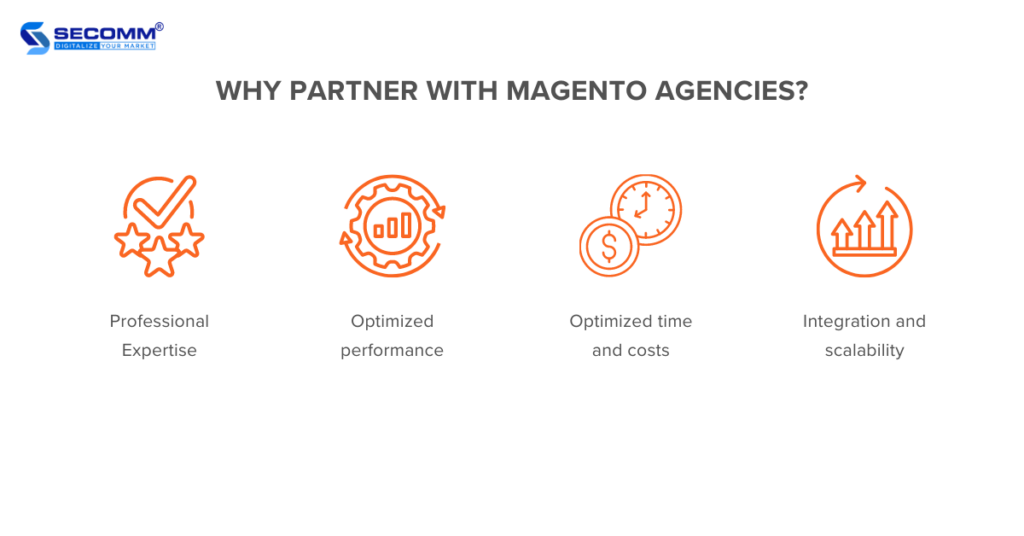
When collaborating with a Magento agency, choosing the right partner is crucial to ensure the success of the eCommerce project. Below are five core criteria to help you choose the right partner.
Any Magento agency must deploy eCommerce projects based on Magento, an open-source platform with superior customization and scalability. You must ensure the chosen developer has the knowledge and skills to deploy the Magento platform. They must also have a team of capable experts to build, customize, and optimize eCommerce websites based on specific requirements.
It isn’t easy to effectively leverage Magento’s customization and scalability to build an eCommerce website with shopping experiences tailored to Australians’ needs.
This requires technical skills, expertise in the Magento platform, and a deep understanding of the Australian eCommerce market. Therefore, the agency needs to understand the target audience, shopping behaviours, legal regulations, and other factors related to the unique business culture in this country.
Evaluating the projects previously implemented by Magento agencies is an effective way to measure their capabilities and experience. By examining past projects, you can assess their ability to solve specific challenges and whether the solutions proposed for each case are flexible and up-to-date with market development trends.
Evaluating and considering feedback from previous clients will benefit you in the decision-making process. You can search and verify reviews from various sources and clients to ensure objectivity and transparency. This is necessary to ensure that Magento agencies have the skills and experience required to complete the eCommerce project as requested.
After completing and launching the Magento website, technical issues must be addressed and supported. You must choose Magento agencies committed to providing quick support and continuous maintenance after the project. This ensures that the website remains stable, any technical errors are promptly addressed, and the latest platform version is kept secure and up-to-date.
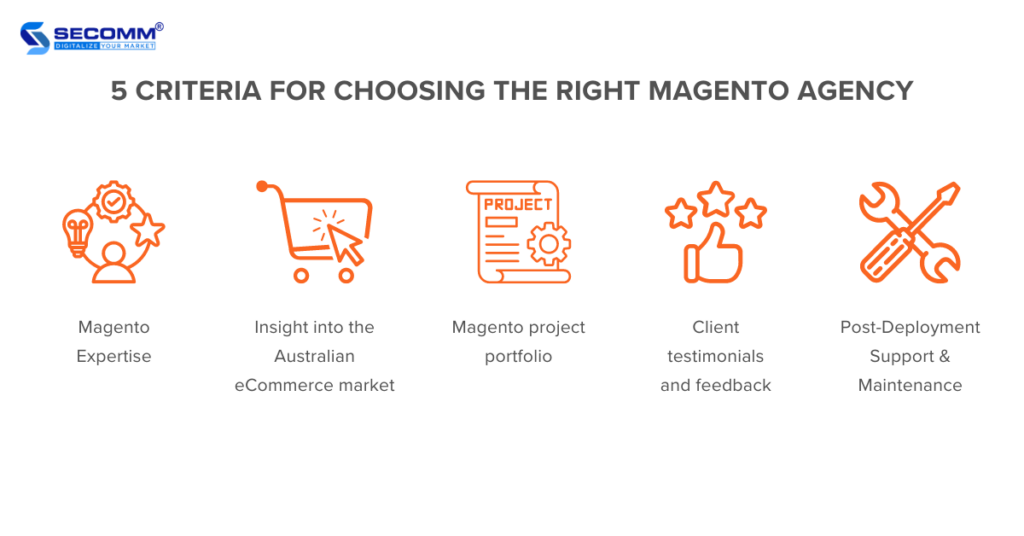
Below is a list of the top 10 Magento agencies in Australia, recognized for their experience and expertise in developing eCommerce websites on the Magento platform.
SECOMM is one of the leading Magento development partners in Australia. With over 10 years of experience, SECOMM boasts a highly experienced team with a deep understanding of the Australian eCommerce market.
The SECOMM team has successfully collaborated on and implemented a series of Magento projects with significant clients in Kangaroo, such as Laybyland, Trentham Estate, The Rod Shop, and Seconds Deals.
Leveraging Magento’s strengths, SECOMM helps its clients customize and expand various functionalities according to their specific needs and integrate with third-party tools and applications to optimize operations and deliver a unique customer experience.
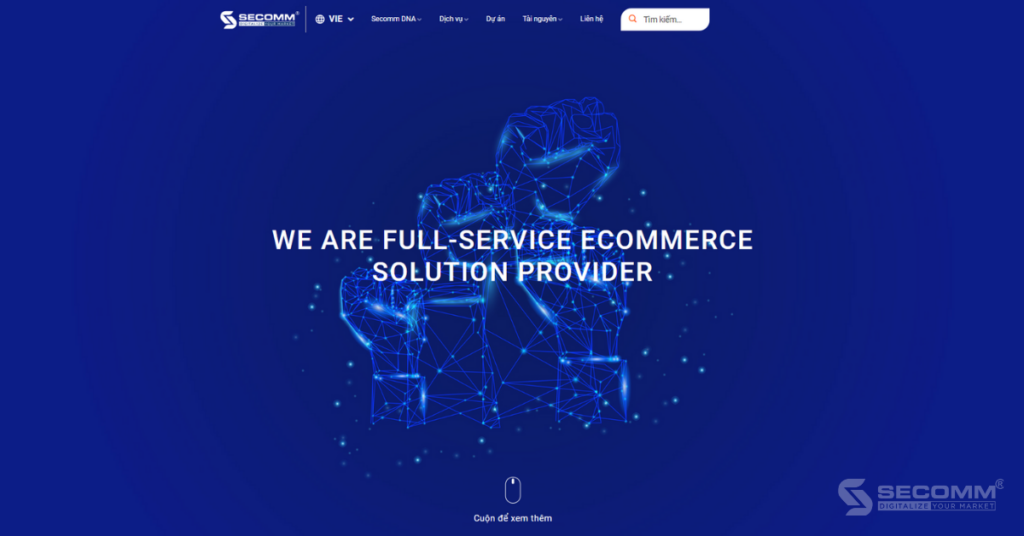
This company is renowned for its diverse eCommerce services, including solutions for building online stores on the Magento platform. WEBDESK SOLUTION is committed to providing professional technical support services during and after deployment.
Wiser Brand specializes in building and developing eCommerce websites targeting enterprises in Australia and New Zealand. The company holds prestigious certifications related to Magento and boasts a large team of experts with extensive experience.
Aron Web Solutions develops and expands rapidly into significant markets such as the UK, US, and India. Aron offers a variety of eCommerce solutions related to Magento, including Magento website design and development for mobile shopping applications.
Over the years, Webential has officially become one of the leading Magento agencies in Australia. In addition to Magento, Webential offers various flexible solutions, ensuring that all projects are implemented efficiently and professionally.
Magneto IT Solutions is a Magento agency with diverse experience across industries. They provide custom and professional solutions to meet the specific requirements.
In Australia, Acid Green is a leading eCommerce website developer in Magento and Shopify Plus. The team’s experience and expertise in open-source and SaaS platforms are sufficient to help the company maintain its position in the market.
Intuji provides eCommerce solutions for retail and B2B brands in Australia. Intuji’s strength lies in Magento and in leveraging various platforms and technologies to build custom eCommerce websites tailored to each business model.
This company provides services for eCommerce businesses in Australia, ranging from building online stores to mobile shopping applications. With its extensive experience, Enterprise Monkey can help develop customized shopping experiences using AR/VR and AI technologies.
Aussie Website has established its position as a reputable Magento agency in Melbourne and Australia in general. They are committed to providing flexible and innovative solutions to help you optimize your eCommerce operations.
The emergence of numerous Magento developers in Australia has opened up opportunities for businesses to build and develop eCommerce brand websites. By selecting partners based on certain evaluation criteria, you can ensure that projects are implemented more smoothly, professionally, and effectively.
Need more advice to make a decision? Contact SECOMM or call (+84)28 7108 9908 for a free consultation!
 5
5
 2,655
2,655
 0
0
 2
2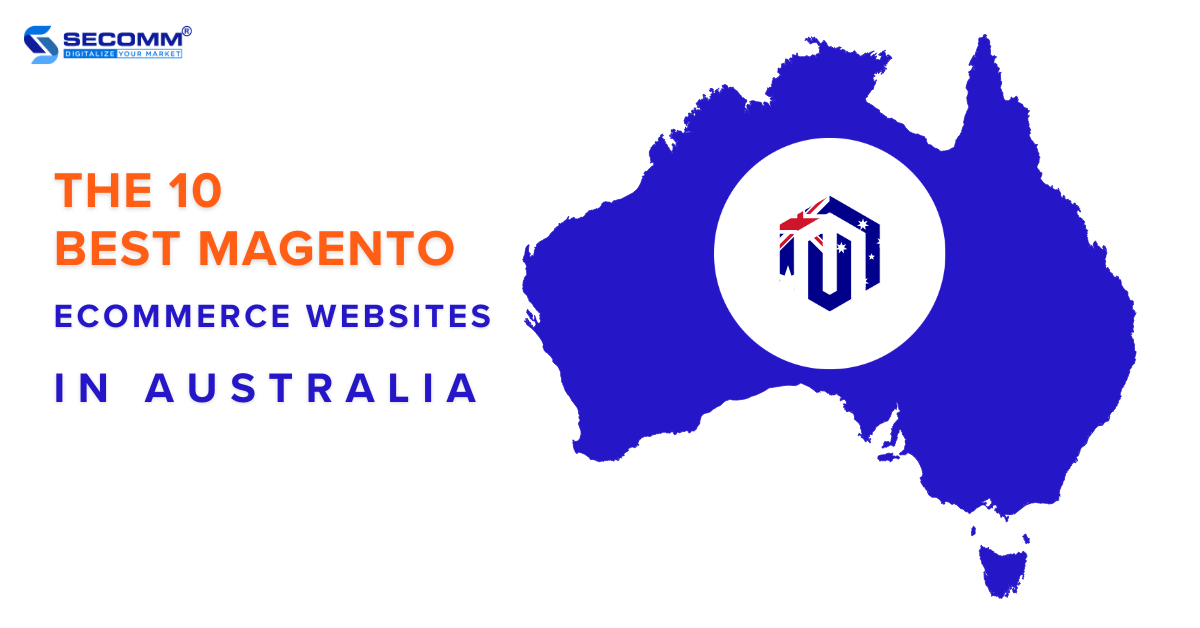
Magento is one of the most popular platforms today, allowing businesses in every industry to build customized eCommerce websites. In Australia, Magento is also highly favored and consistently chosen as the top preference for local businesses, with nearly 4000 live stores.
Let’s take a look at the top 10 leading Magento eCommerce websites in Australia in the following article.
Pet Barn is a leading brand in Australia, specializing in providing products and services for pets. Over a decade, Pet Barn has earned a strong reputation among the pet-loving community in Australia, offering a wide array of safe and high-quality products.
The Pet Barn eCommerce website is built on the Magento platform, a robust system for eCommerce and content management. By using Magento, Pet Barn can efficiently manage and operate while optimizing the online shopping experience for customers.
The flexibility, security, and ease of customization and expansion provided by Magento continually empower the brand to improve its services and cater to the ever-evolving and diverse needs of Australian customers.
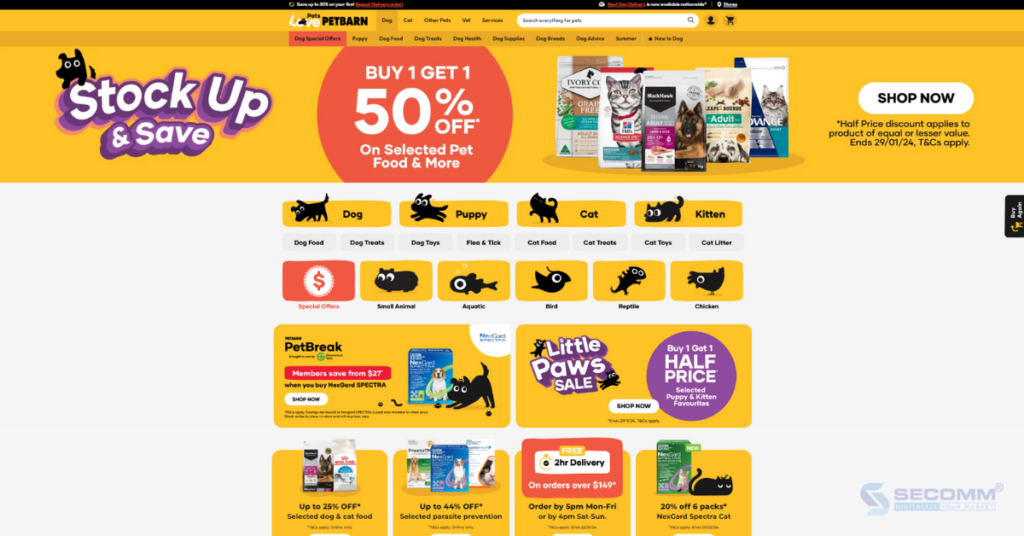
Forever New is an Australian fashion brand, renowned for its high-quality clothing and accessories for women with an elegant and modern style. Over a decade, Forever New has gained customer trust and secured a significant position in the Australian fashion industry.
The brand used Magento to build the eCommerce website, striving to boost its online visibility and find the most efficient operational solutions. This move played a huge role in Forever New’s digital success, enabling remarkable growth and swift adaptation to emerging trends in the market.
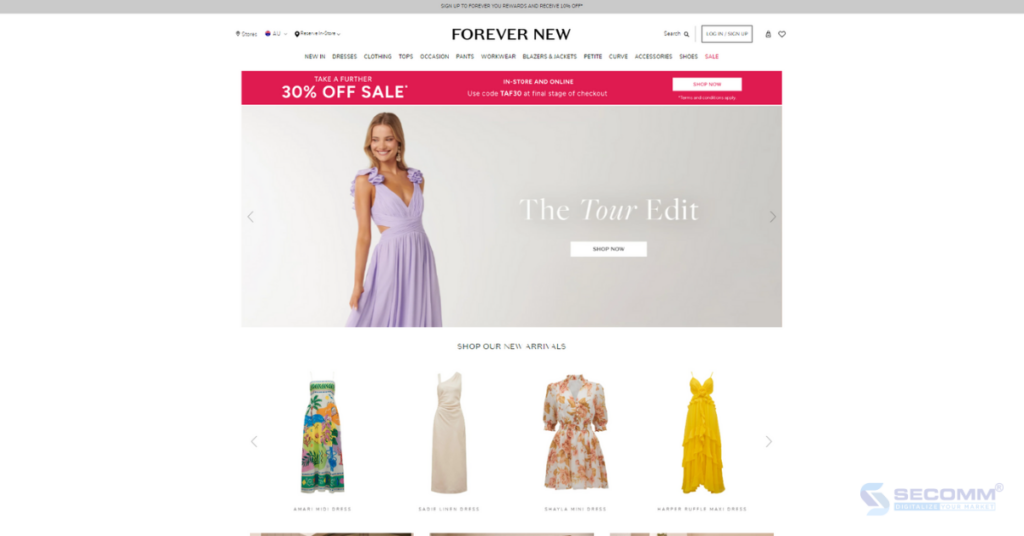
Dick Smith is one of Australia’s leading brands specializing in consumer electronics products. With a rich history and a robust reputation, Dick Smith has established a unique position in the Australian market, recognized as a trustworthy destination for technology enthusiasts seeking top-tier products.
The great customizability and scalability of Magento helped Dick Smith efficiently manage a large product portfolio and optimize the customer experience with unique features and promotional programs.
The website design not only ensures a seamless online shopping experience but also reflects the brand’s identity with a visually appealing, innovative, and user-friendly interface. The advanced search feature and product filters make it easy for customers to find their favorite items.
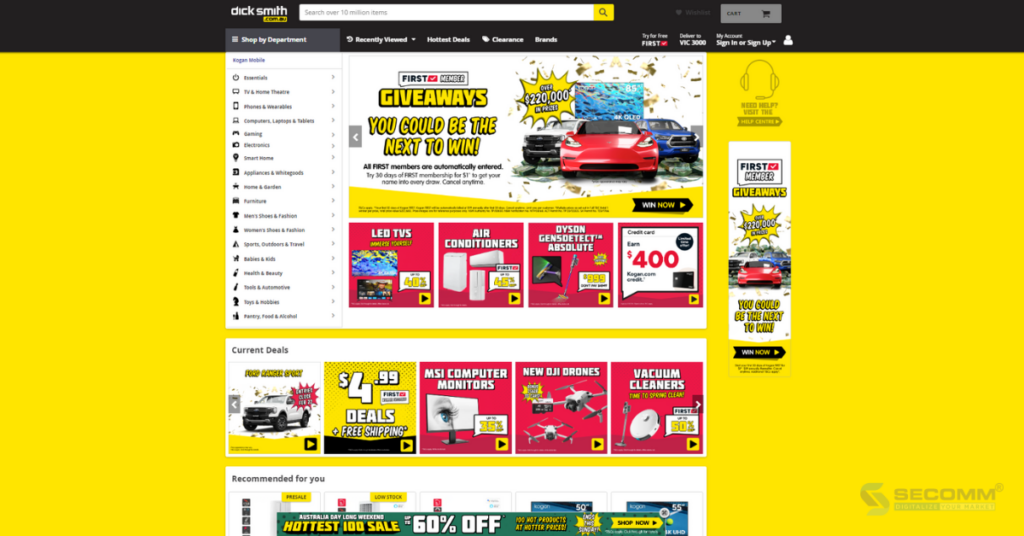
Another widely known fashion brand throughout Australia is Bonds. This brand is famous for its diverse array of fashion products for men, women, and children, offering a variety of styles, and sizes, as well as ensuring durability and safety.
Magento, a top-tier eCommerce platform, has delivered numerous advantages to Bonds. The flexibility in managing products, high customization, and easy scalability have aided Bonds in maintaining diversity in its collection and swiftly adapting to market trends.
The Bonds eCommerce website showcases the brand’s sophistication through a visually appealing user interface and provides advanced search features, secure payment processes, and detailed product information. This ensures that Bonds not only retains its current customer base but also attracts the attention of newcomers looking to experience the comfort and distinctive style of the brand.

Bed Bath N’ Table is a renowned brand in Australia, specializing in providing furniture and decorations for bedrooms, bathrooms, and dining areas. With a focus on quality and beautiful design, Bed Bath N’ Table has been promoted as an ideal destination for those seeking a luxurious and comfortable living space.
The eCommerce website, built with Magento, offers flexible customization and scalability. The website impresses with a user-friendly interface, an advanced search system, a secure payment process, and optimization.
Moreover, the brand provides useful information about home decor and helpful cleaning tips. To date, Bed Bath N’ Table is not only a reliable furniture shopping destination but also a place for customers to find inspiration and ideas to decorate their living spaces.
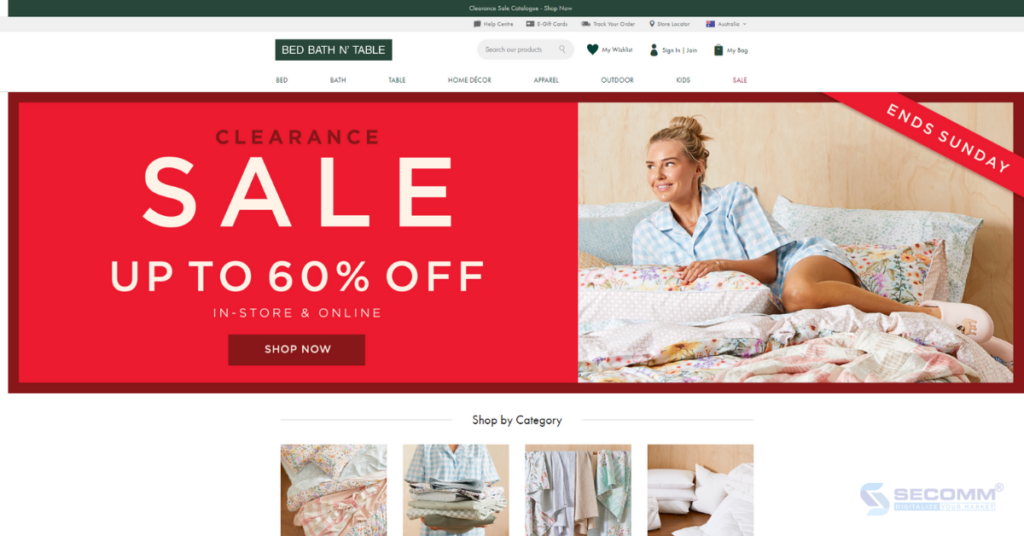
Sussan, a long-established and reputable fashion brand in the Australian market, has won the hearts of consumers through the blend of modern style and comfort. Over 80 years, Sussan has become an icon in the Australian fashion industry, known for creating outfits that reflect the confidence and creativity of modern women.
The eCommerce website of Sussan is a good destination for fashion enthusiasts seeking quality products. Developed on the Magento platform, the website helps Sussan deliver an optimal customer experience and enhance operational efficiency.
Moreover, the website integrates secure and convenient payment features, offering detailed insights into product information and origins. This creates an interesting and reliable shopping experience for Sussan’s customers.

Kathmandu, a well-known brand specializing in outdoor apparel and equipment for adventure and sports, has made a notable contribution to enhancing the excitement and comfort of outdoor living. The Magento-developed eCommerce website of Kathmandu offers a rich customer experience that can be easily customized and expanded based on business needs.
Alongside the optimized shopping experience, Kathmandu provides enticing discounts and promotional programs to attract new customers and retain the loyalty of existing ones.

Sportsgirl, a renowned fashion brand in Australia, has dominated the market with innovation and diversity in its women’s fashion collections. Over 70 years, Sportsgirl isn’t just a shopping destination but also a source of inspiration for personal style, blending the latest fashion trends with a unique flair.
Sportsgirl’s eCommerce website, powered by Magento, allows the brand to deliver an optimal customer experience while effortlessly customizing features and expanding the system to meet the evolving needs and trends of the market.
Moreover, Sportsgirl provides customers with appealing offers, including discounts, buy one get one free promotion, free shipping, gift card giveaways, and a variety of payment methods.
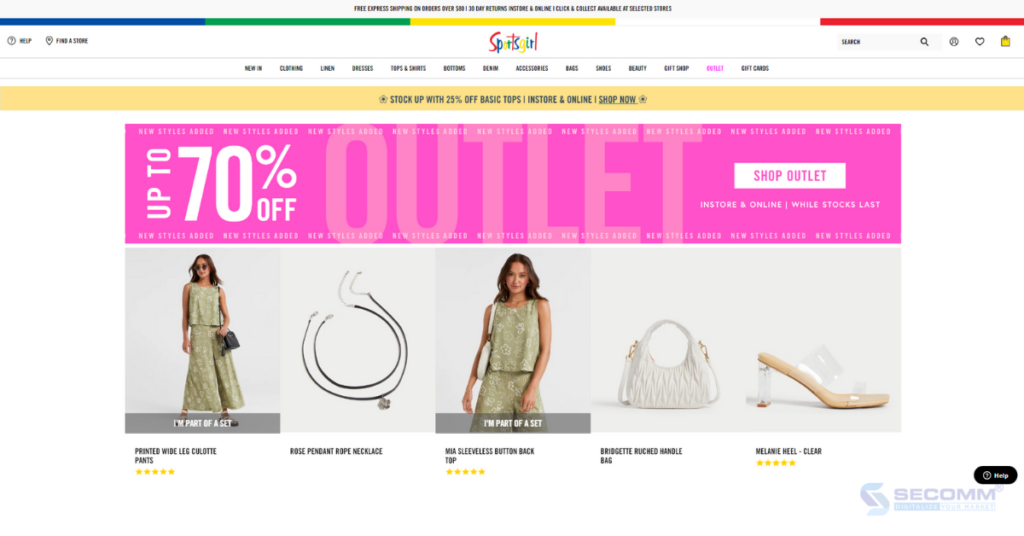
Another well-known Australian furniture brand on this list is King Living. This brand has become an icon of luxury and innovation in creating high-quality furniture products.
King Living’s eCommerce website is a reliable online shopping destination for customers seeking the most convenient solutions for furniture purchases. The website is built and developed on the Magento platform, allowing King Living to freely customize unique features specific to the industry to provide the best online shopping experience for customers.
Notable features include 360-degree viewing, VR/AR capabilities, product specification viewing and downloading, one-page checkout, and more. After over 40 years, King Living has built a strong reputation in the consumer community, particularly among those who appreciate the value of upscale living spaces.
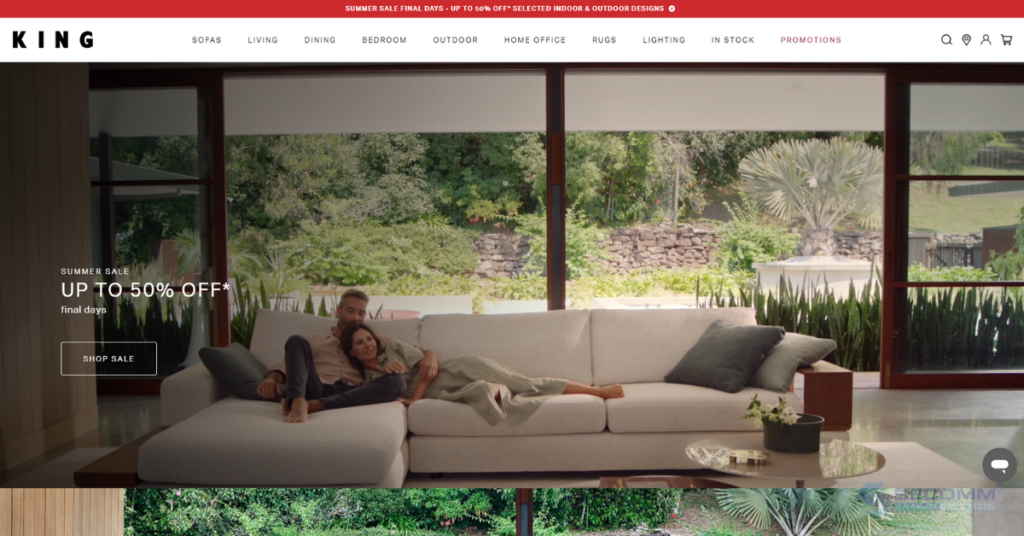
Chemist Direct is a leading brand in the Australian market, offering a wide range of healthcare and beauty products and services. The brand not only provides a diverse selection of medications, vitamins, and beauty items but also prioritizes delivering quality healthcare information to empower customers in effective at-home health management.
Utilizing Magento for its eCommerce website, Chemist Direct can tailor unique features to enhance customers’ shopping experiences. The website offers a variety of products from multiple brands and diverse payment methods, including the Buy Now Pay Later option.
Moreover, with advanced search functionality and a secure and simple payment process, the Chemist Direct website stands out, making it easy for customers to find and purchase high-quality healthcare and beauty products.
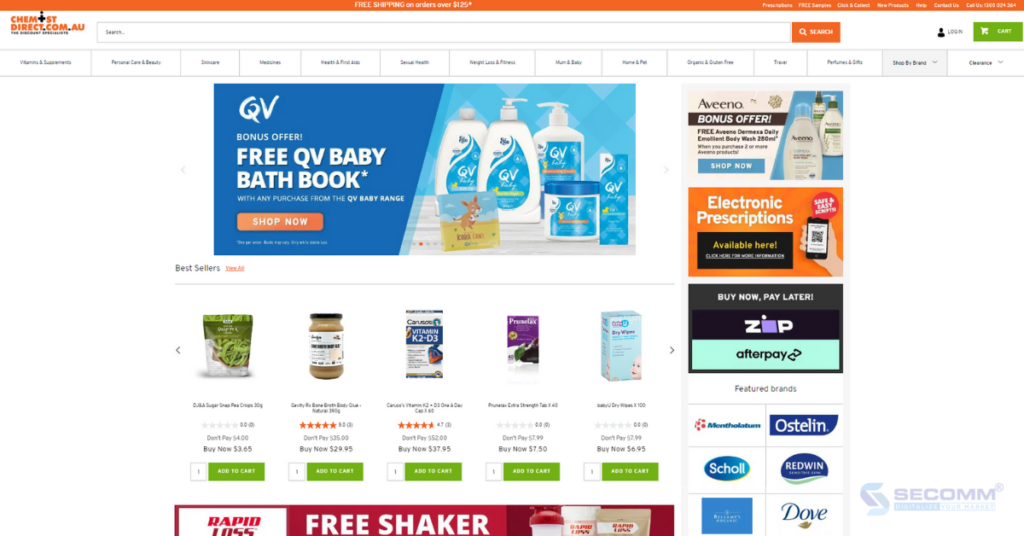
Build Your First Magento eCommerce Website Now!
Above are 10 eCommerce websites in Australia, notable for being built on the Magento platform. These brands have effectively utilized Magento’s customizable and flexible features to introduce unique features, ultimately enhancing the overall customer shopping experience.
With extensive experience in successfully developing Magento eCommerce projects for various Australian clients such as Laybyland, Jasnor, RodShop, Trentham Estate,
etc, SECOMM boasts a team of highly skilled experts with advanced technical skills and a deep understanding of the eCommerce landscape.
For further details about the Magento platform, please contact SECOMM or call the hotline at (+84)28 7108 9908!
 2
2
 3,364
3,364
 0
0
 1
1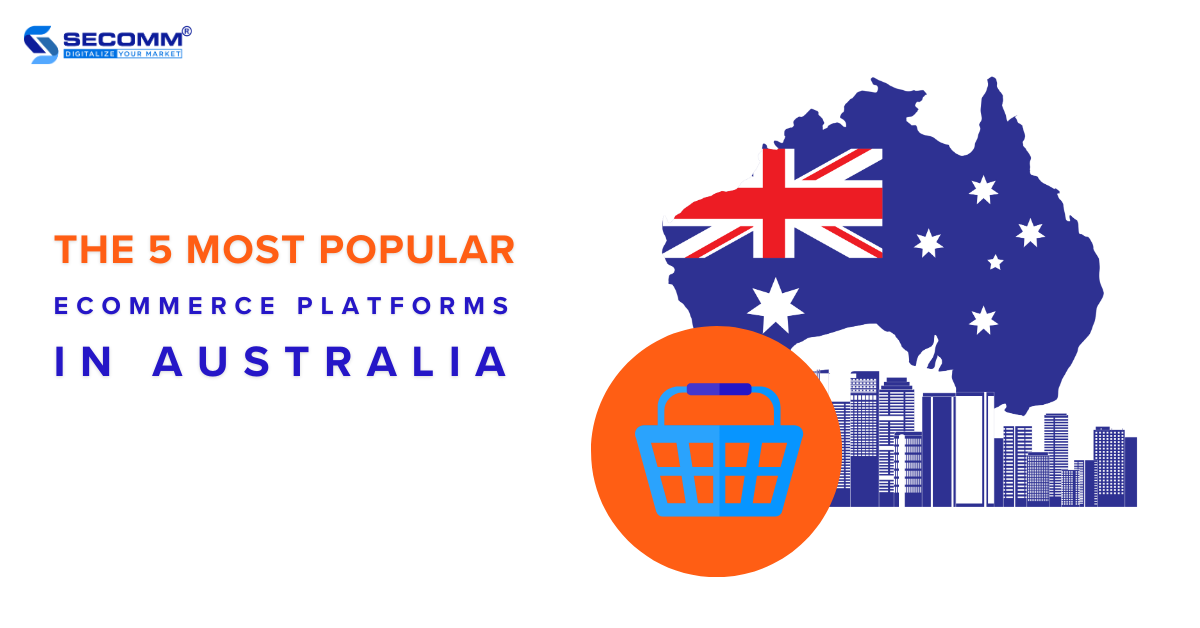
The Australian eCommerce world is continually evolving alongside the constant emergence of technological solutions. As a result, there is an increasing and diverse range of choices for eCommerce platforms.
This presents both an advantage and a challenge for businesses, as selecting the right platform for building an eCommerce website is a crucial first step.
Below are the top 5 leading eCommerce platforms in Australia.
Learn more: Top 10 most-visited eCommerce websites in Australia
Magento is a globally popular open-source platform, and its prevalence extends to Australia as well. According to BuiltWith, there are currently more than 4000 live websites in Australia utilizing the platform.
With its high flexibility, businesses can effortlessly tailor features and scale the system according to their unique business requirements.
Presently, Magento provides businesses with two versions: Open Source (Free) and Adobe Commerce (Paid).
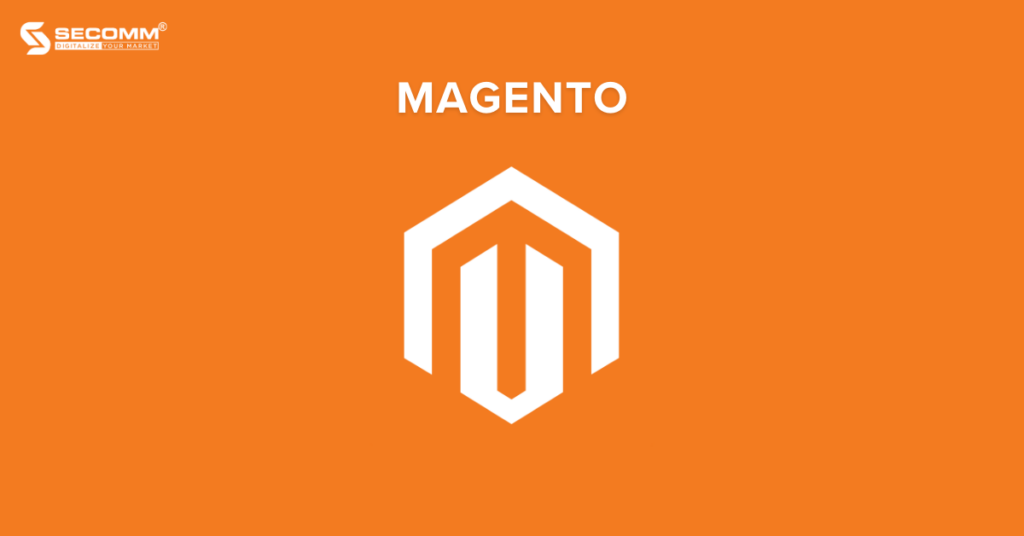
Pros:
Cons:
Core feature:
Pricing:
Learn more: Top Magento eCommerce websites in Australia
Shopify is a popular SaaS platform with over 4.8 million active websites. In Australia alone, over 150 thousand online stores are operating on the platform.
Recently, the premium version of Shopify, ‘Plus,’ has garnered attention from businesses across various sectors in Australia.
These businesses may have previously deployed different eCommerce platforms and later switched to the Plus to seek a superior solution. Some businesses initially launched websites with core plans and later upgraded to ‘Plus’ to optimize their operations.
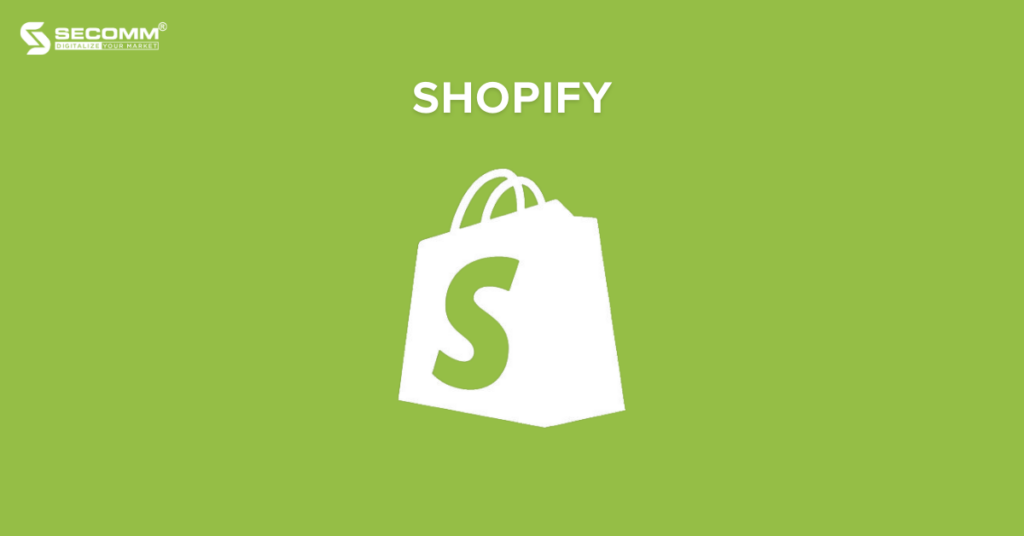
Learn more: Top eCommerce websites upgrade to Shopify Plus
Pros:
Cons:
Core feature:
Pricing
Here are Shopify pricing plans:
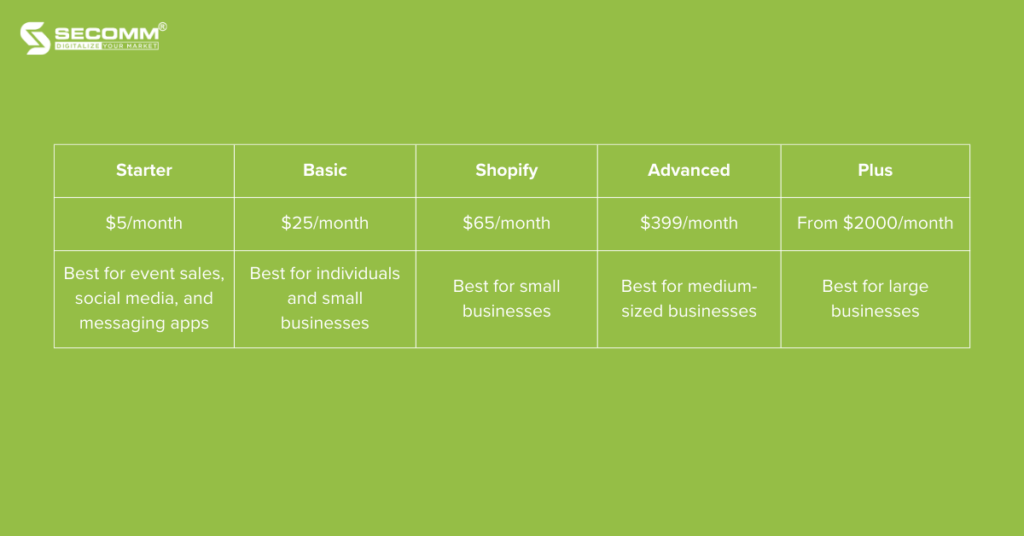
BigCommerce is another popular SaaS platform worldwide, with over 43 thousand active websites. In Australia, there are more than 2 thousand active BigCommerce websites.
The standout feature of this SaaS platform is its integrated features, enabling businesses of all sizes and technical expertise to deploy eCommerce websites quickly. In addition to standard solution packages, BigCommerce offers an ‘Enterprise’ version tailored for large businesses with custom pricing.
Learn more: Top 10 eCommerce websites using BigCommerce
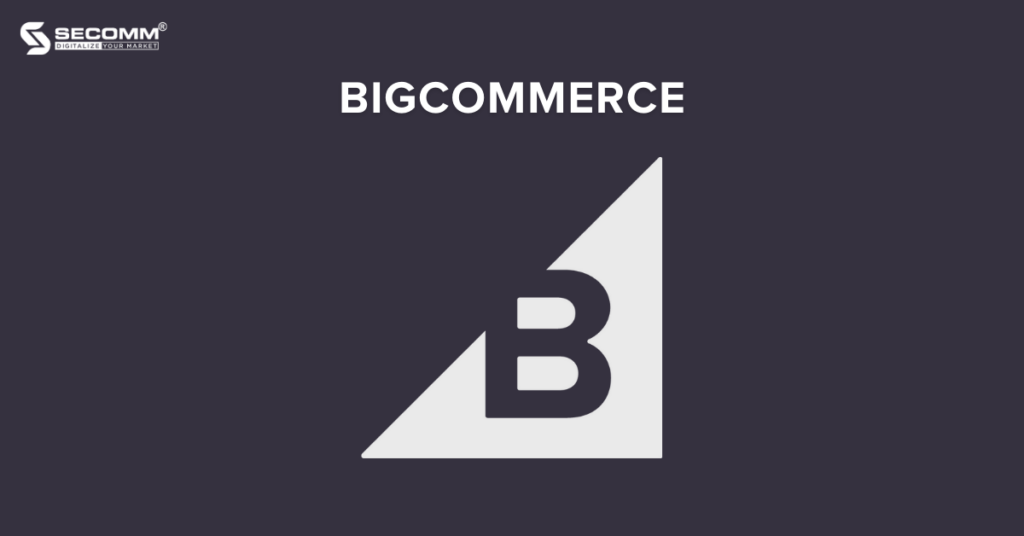
Pros:
Cons:
Core feature:
Pricing
Here are BigCommerce pricing plans:
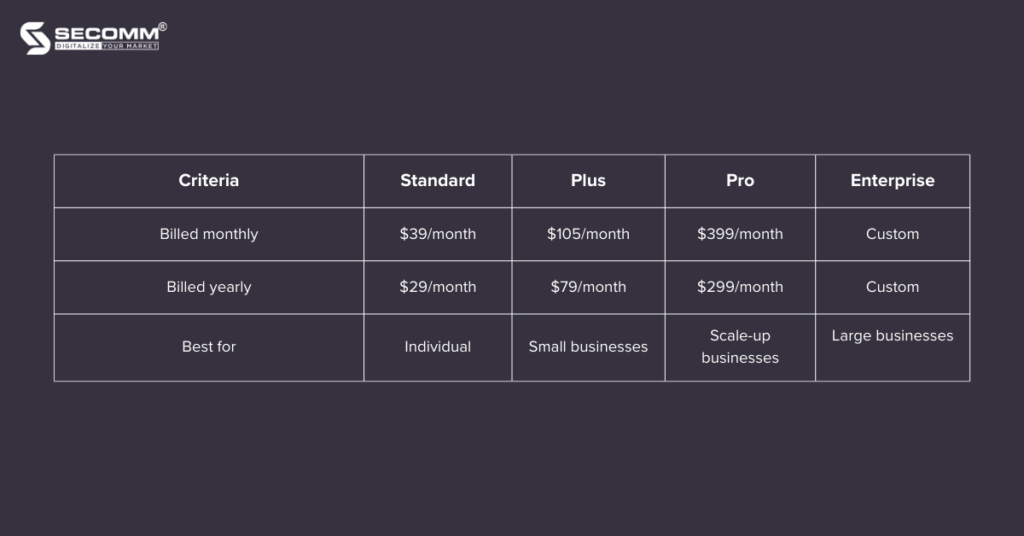
WooCommerce, a free and open-source WordPress plugin, enables brands to integrate eCommerce functionality into their existing WordPress websites.
With just a few clicks, the WooCommerce plugin helps convert a standard WordPress site into a fully-featured eCommerce platform, complete with essential features and easy customization.
Learn more: 20 websites using WooCommerce
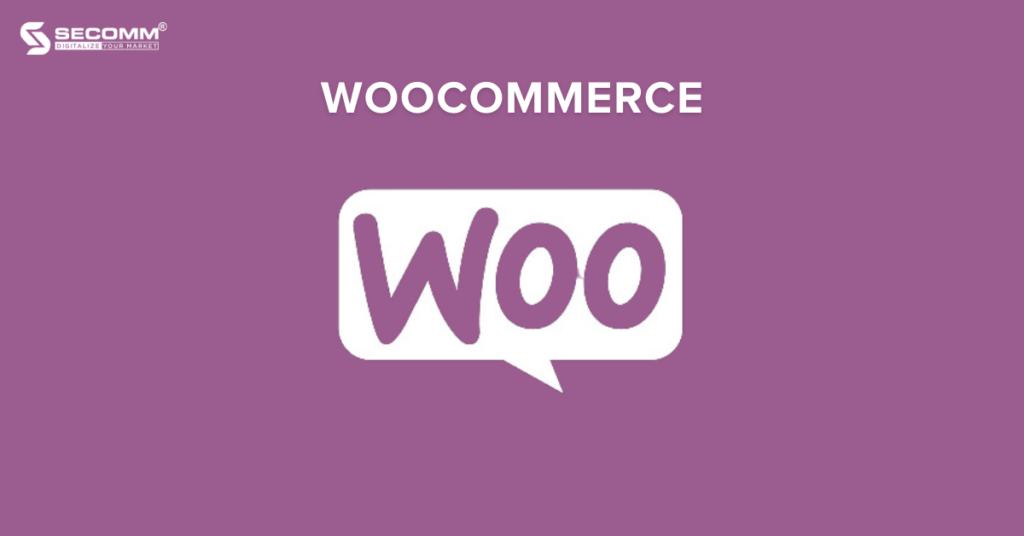
Pros:
Cons:
Core feature:
Pricing: Free to use. However, some integrations with other plugins may incur charges.
OpenCart is a globally popular open-source platform, powering over 900 thousand active websites worldwide. In Australia, it has gained popularity with more than 2 thousand active OpenCart websites, establishing itself as a favored open-source platform in the country, following Magento.
Founded by Daniel Kerr in 1998, OpenCart operates as open-source software, utilizing the PHP programming language. It currently offers two versions: Free (Free-to-use version) and Cloud Store (Paid version).
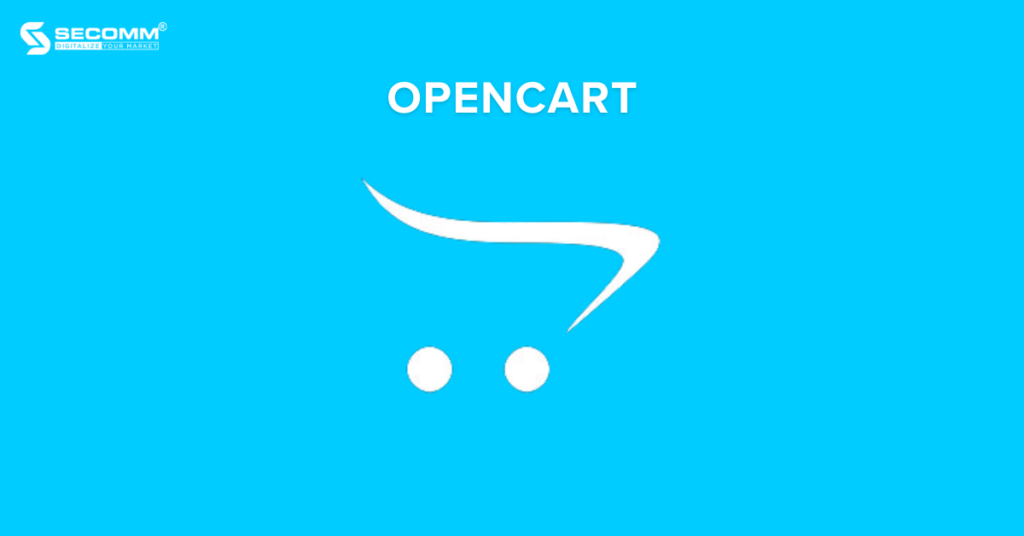
Learn more: Top OpenCart websites
Pros:
Cons:
Core feature:
Pricing:
Free for the Free version. For the Cloud Store version, the specific costs are as follows:
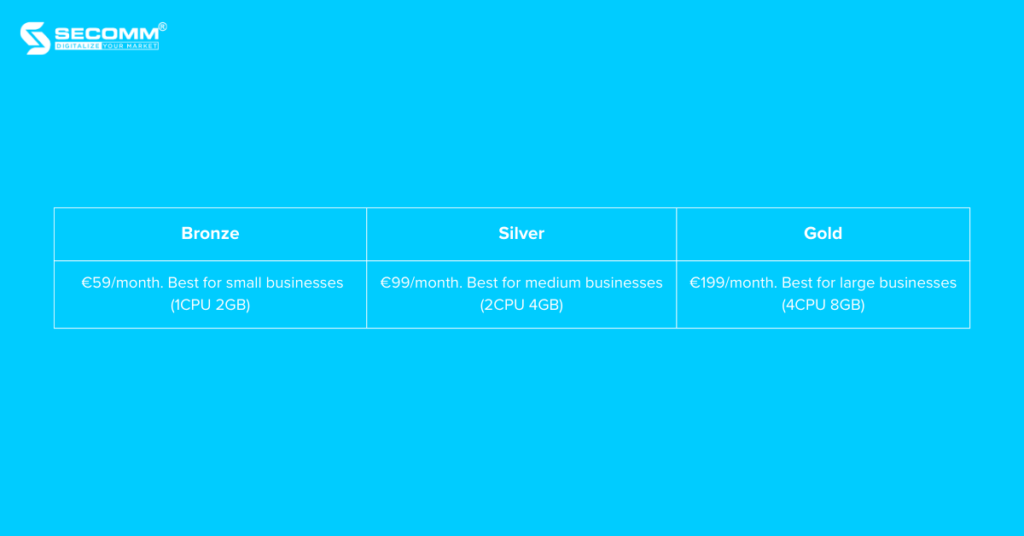
Above are 10 eCommerce platforms preferred by businesses in Australia when establishing their online stores. Each business will make its decision based on factors like scale, business model, and specific deployment requirements.
With over 10 years of experience collaborating with various Australian businesses such as Laybyland, RodShop, Trentham Estate, Jasnor, etc., to build eCommerce websites, SECOMM now possesses a team of highly skilled technical experts and a deep understanding of the Australian market.
For personalized advice on the best-suited platforms for your business, contact us or call the hotline (+84)28 7108 9908 today!
 2
2
 3,712
3,712
 0
0
 1
1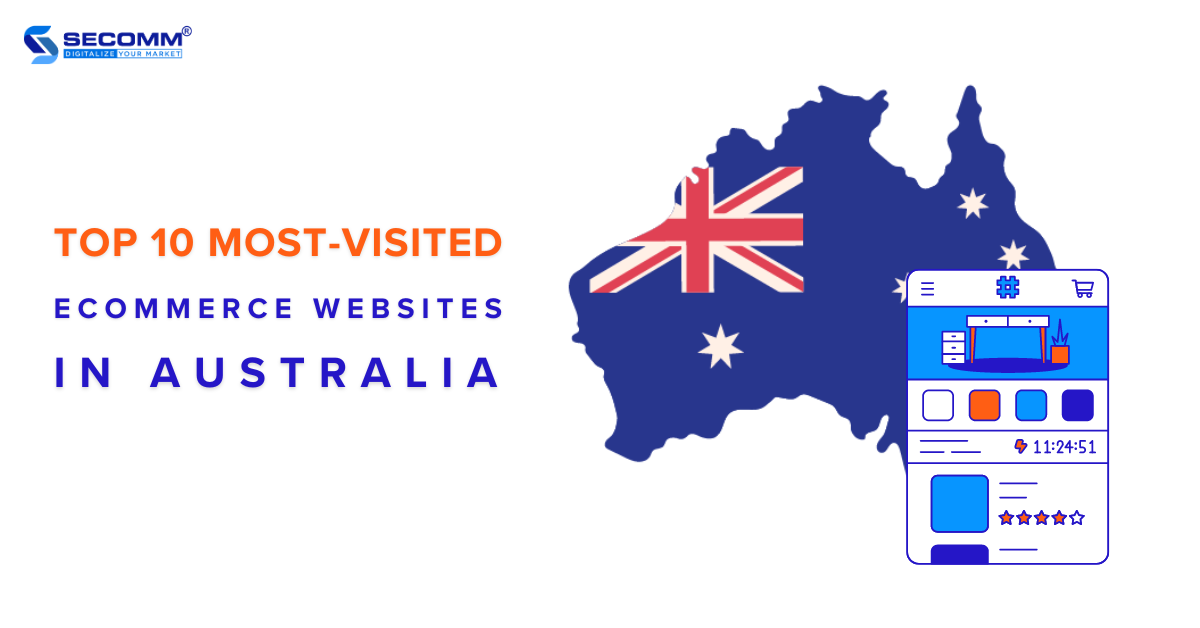
In Australia, shopping on eCommerce websites has become an essential trend. Over time, there has been a growing demand for an enhanced online shopping experience among Australian customers. This requires businesses to seek solutions to optimize their websites to provide a unique and efficient customer experience.
Here are 10 leading Australian brands dedicated meticulous efforts to refining the eCommerce experience, thereby gaining customer satisfaction and trust.
JB Hi-Fi is a retail chain headquartered in Australia, specializing in electronics, household goods, and entertainment products. It was founded in 1974 in Melbourne by John Barbuto (JB) and his wife, Judy Barbuto (the JB Hi-Fi name is a combination of the initials of John’s name and Judy’s name).
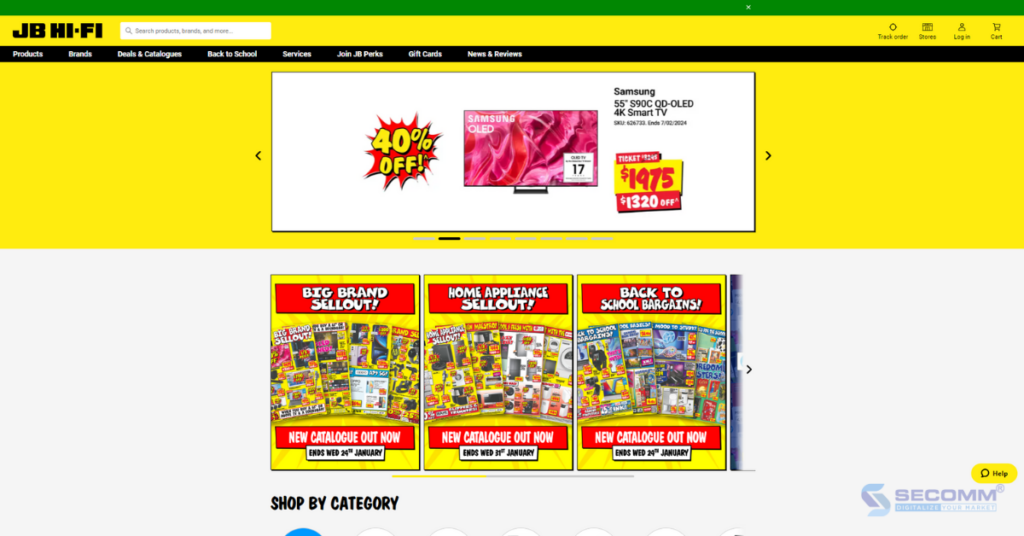
Alongside its brick-and-mortar stores in Australia and New Zealand, the brand also maintains an eCommerce website and a mobile app. These two primary channels enable customers to shop online and stay updated on various offers and promotions.
Beyond offering a diverse range of high-quality consumer electronics, JB Hi-Fi places a strong emphasis on providing customer support services both online and offline, aiming to deliver the optimal customer shopping experience.
Coles is a leading supermarket and retail chain in Australia. Established in 1914, the brand has since experienced impressive expansion and development, emerging as one of the major names in the Australian retail industry.
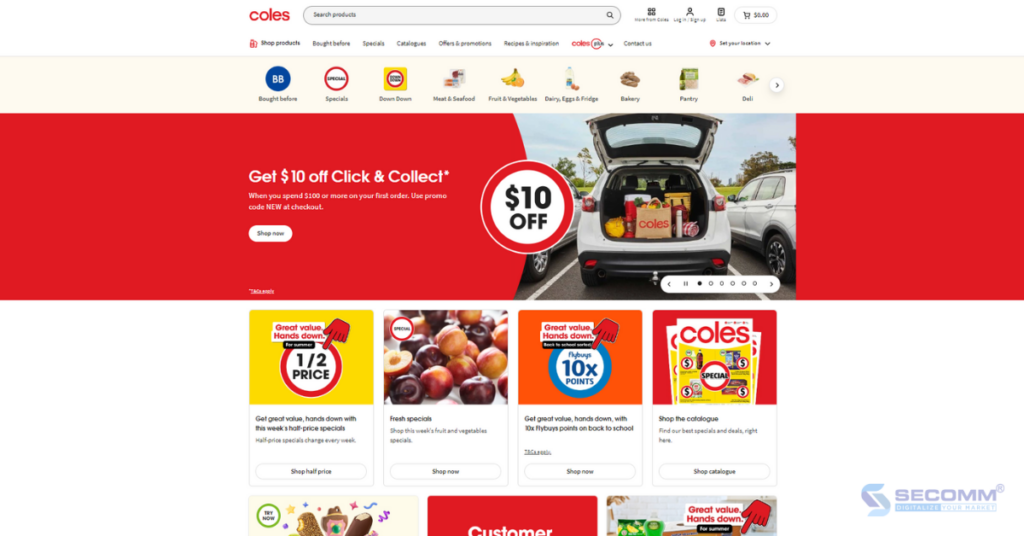
Coles offers online shopping services through its user-friendly eCommerce website and mobile app. The Australian brand also ensures competitive pricing and consistently introduces promotional initiatives, providing customers with a diverse array of options.
The ICONIC is an Australian eCommerce website specializing in fashion and footwear. Established in 2011, the brand swiftly captured attention, evolving into a premier online shopping destination for fashion enthusiasts in both Australia and New Zealand.
At The ICONIC, customers can easily discover their preferred products from a diverse selection of globally renowned brands, including Levi’s, Adidas, Lacoste, Polo Ralph Lauren, and more.
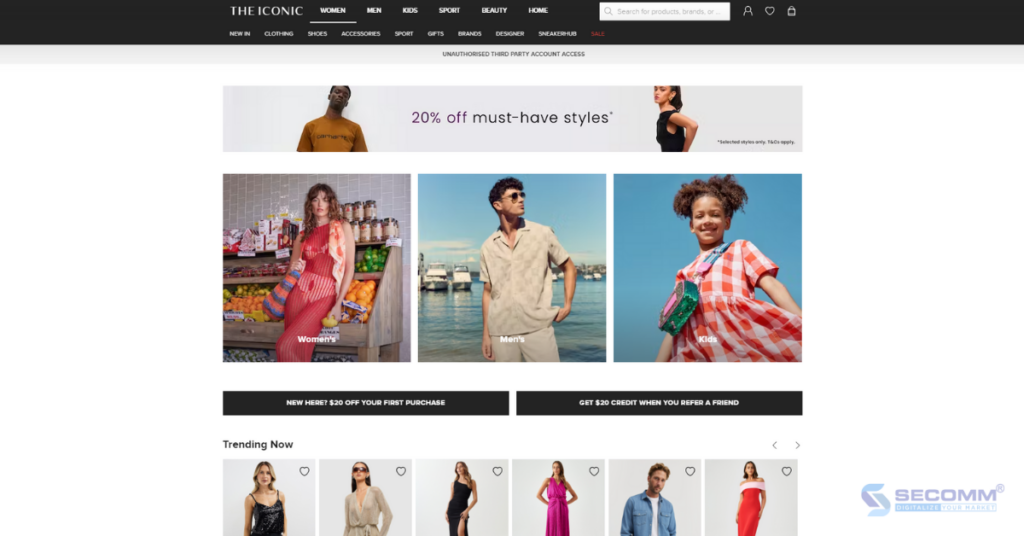
The ICONIC’s website is optimized to help customers browse products, place orders, and track their shipments effortlessly. Beyond providing a unique online shopping experience, The ICONIC regularly updates fashion trends and offers informative content for its customers.
Cotton On was established in 1991 by Nigel Austin in Geelong, Australia. The brand offers a wide range of fashion products, including clothing for men, women, and children, footwear, accessories, underwear, and even home goods and interior decorations in some stores.

Cotton On has an extensive network of stores worldwide, with a presence not only in Australia but also in many other countries such as the United States, Canada, the United Kingdom, and various Asian countries. Therefore, an eCommerce website system has been built and developed with Salesforce Commerce Cloud (SFCC) to cater to the specific needs of each customer segment in different markets.
Sephora is a leading global retail chain specializing in cosmetics and beauty products. The brand is headquartered in Paris, France, and has expanded rapidly, establishing its presence in numerous countries across Europe, North America, Asia, and the Middle East.

In Australia, Sephora is recognized as a go-to destination for purchasing cosmetics, both online and in-store. Sephora’s eCommerce website and mobile app boast various specialized features designed to elevate the customer experience. Moreover, the successful implementation of a loyalty program by Sephora across multiple markets serves as a valuable lesson for many other eCommerce enterprises.
Founded in Australia in 2006, Forever New is an international fashion brand that specializes in designing and manufacturing women’s fashion collections. The brand is renowned for offering customers products with a sophisticated and feminine style.
Since its inception, Forever New has experienced rapid growth and expanded its business not only in Australia but also in various other countries, including New Zealand, China, India, South Africa, and numerous European nations.

To meet the challenges of expansion and customization, Forever New opted for Magento Open Source to build its eCommerce system. Leveraging Magento, the brand has incorporated a range of advanced and specialized features alongside essential functionalities to enhance the online shopping experience for its customers.
Dick Smith is the name of a renowned Australian entrepreneur, Richard “Dick” Smith, who founded this brand in 1968. In its early years, Dick Smith focused on providing electronic products and components.
The brand quickly grew and expanded its product portfolio from electronic appliances, computers, mobile phones, cameras, and tech toys to other technology and entertainment-related products.
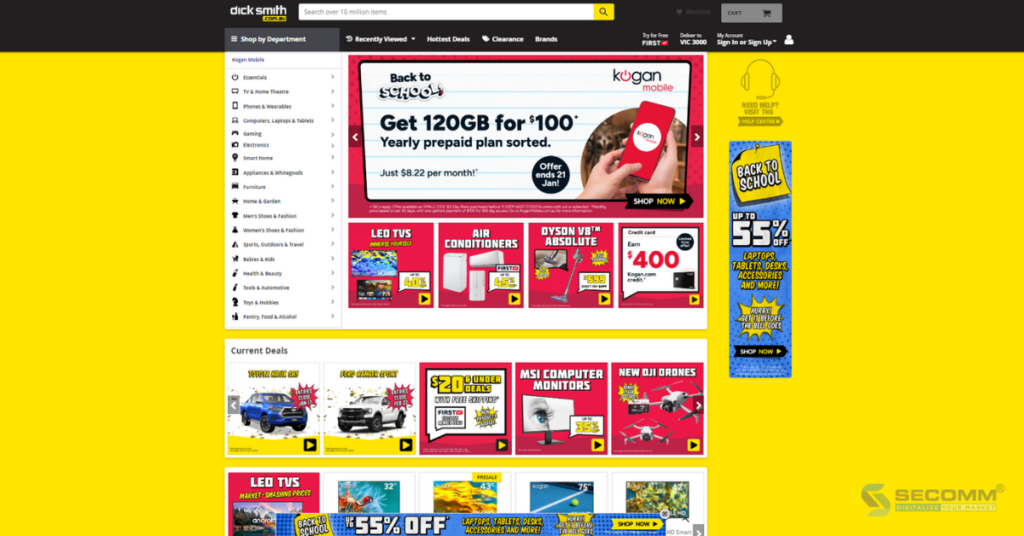
Dick Smith’s eCommerce website is built on the Magento platform. This has helped Dick Smith enhance its presence in both online retail and traditional retail stores, allowing the brand to reach a large audience through an optimized shopping experience.
Bed Bath N’ Table is a well-known brand specializing in furniture, home decor, and household items in Australia.
Its eCommerce website offers a diverse array of products for the living room, bathroom, dining area, and bedroom. Customers can easily discover items such as blankets, pillows, bedding sets, decorations, lamps, cookware, tableware, and numerous other products.
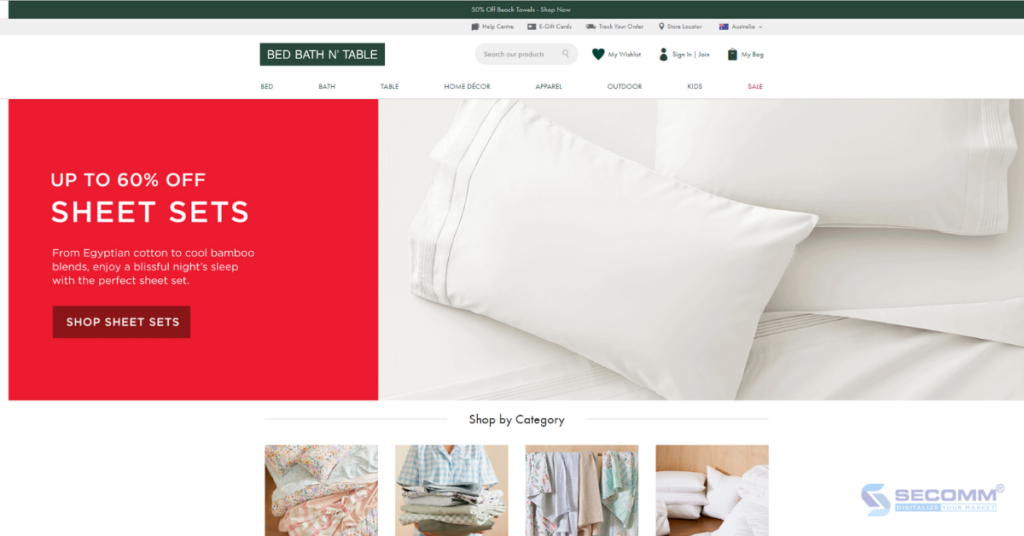
In addition, Bed Bath N’ Table provides various payment methods and implements a loyalty program to enhance the shopping experience for customers, ultimately boosting conversion rates and sales.
Over the years, through a commitment to professionalism and prioritizing customer experience, Bed Bath N’ Table has solidified its presence throughout the regions of Australia and New Zealand.
Established in 1990, Glue Store is an Australian fashion retail chain specializing in products from popular brands, especially those favored by the youth. Over the years, Glue Store has swiftly expanded to become a go-to fashion shopping destination in the Australia and New Zealand region.
Currently, Glue Store collaborates with a variety of renowned brands, including Adidas, Nike, Tommy Hilfiger, Calvin Klein, Puma, and various streetwear labels.
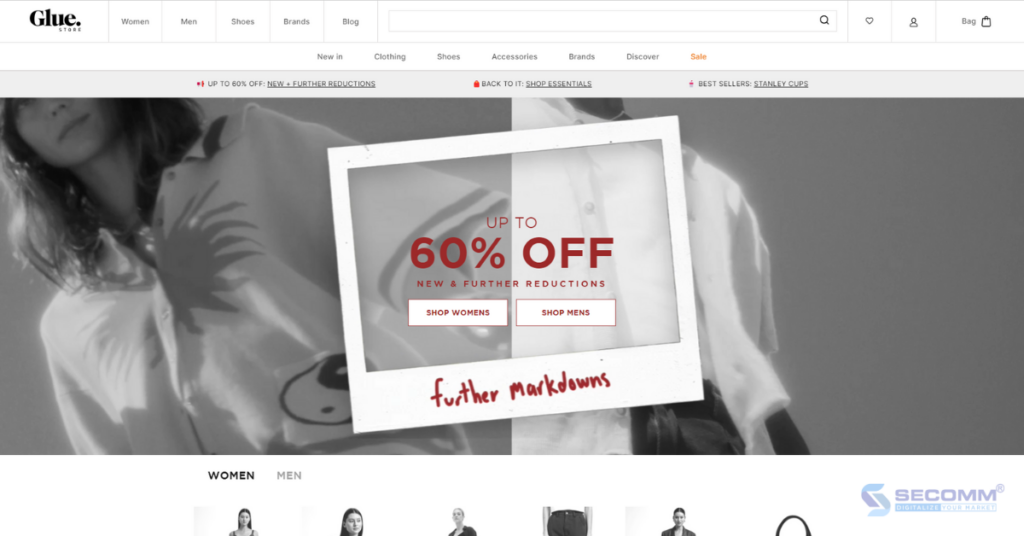
In addition to its traditional store chain, Glue Store offers customers an online shopping experience through an eCommerce website built on the Shopify platform. The website boasts a uniquely designed interface with advanced features, particularly enhancing the customer experience, notably during the checkout process.
Furthermore, Glue Store consistently introduces appealing promotional programs to attract and retain its customer base.
The eCommerce website Chemist Direct has become quite familiar to Australian consumers in recent years. It is a reliable destination for purchasing beauty products, personal care items, prescription and non-prescription medications, as well as medical equipment.
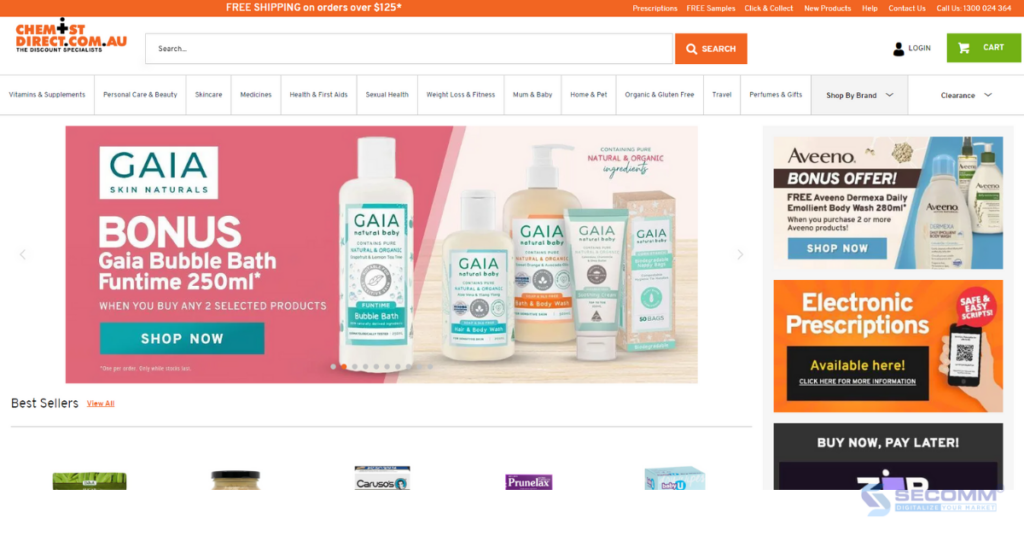
With a diverse and extensive product catalog, Chemist Direct has developed its eCommerce system on Magento to leverage the flexibility and easy scalability of this platform. Through Magento, the Chemist Direct team can easily develop and customize numerous advanced features, making searching, browsing, ordering, and payment more straightforward.
When it comes to payments, the brand implements Buy Now Pay Later with Afterpay and Zip, alongside traditional payment methods, allowing customers additional choices and flexibility when making purchases.
Here are the leading 10 eCommerce websites in Australia. Utilizing advanced platforms like Magento, Shopify, and SFCC, these brands have delivered an optimal online shopping experience, successfully attracting both local and international consumers.
Throughout years of growth, SECOMM, in collaboration with numerous Australian clients, has proudly contributed to the creation of exceptional eCommerce websites. Noteworthy projects include partnerships with Laybyland, Jasnor, Rod Shop, and others.
Contact SECOMM or call directly at the hotline (+84)28 7108 9908 to get started!
 2
2
 5,247
5,247
 0
0
 1
1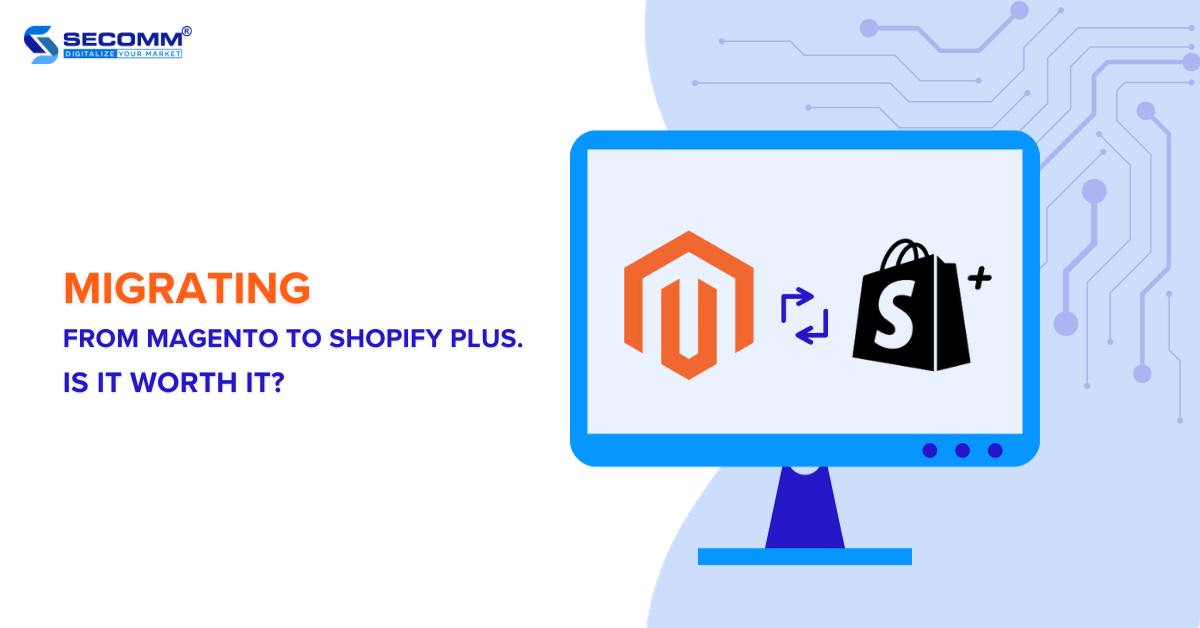
Migrating from Magento to Shopify Plus is a strategic decision that many businesses are considering. While Magento holds a prominent position in the eCommerce market, the ongoing trend of switching to Shopify Plus has raised questions about its reasons, prompting a comparison between the two platforms. Join us in exploring these aspects in this article.
Learn more: Adobe Commerce vs Shopify Plus
Magento is an open-source eCommerce platform with over 140,000 active websites and was acquired by Adobe in 2018. It offers many advanced features, allowing you to tailor your eCommerce websites.
It has two versions: Magento Open Source, a free option to download and install on your servers, and Adobe Commerce (formerly Magento Enterprise), a paid version with premium features such as Adobe’s hosting and security services.
Shopify Plus stands out as Shopify’s advanced SaaS eCommerce platform tailored for large and rapidly growing enterprises. With high scalability, it can handle surges in traffic and sales volumes reaching billions of dollars.
By leveraging Shopify Plus, you can benefit from a robust infrastructure that facilitates easy customization and centralized management of multiple stores, brands, languages, and currencies through a dashboard.
Also, the platform offers a range of superior solutions to enhance eCommerce operations, including Shop Pay, Shopify Flow, LaunchPad, Shopify Scripts, and more.
Many businesses opt to move away from the Magento platform in pursuit of a more optimal solution for their eCommerce websites. However, the following two reasons are widely regarded as the most prevalent.
After launching the Magento 2 (M2) version, the company has declared they’ll no longer support the Magento 1 (M1) version. This means that if you’re using the older version, you won’t receive security updates, bug fixes, and technical assistance.
So, the platform encourages their customers to upgrade to M2 to ensure continued technical support, enhanced security, and access to a variety of new and advanced features.
However, the upgrade process is complex, requiring significant investment in terms of cost and time for source code and interface customization. It may force you to halt your eCommerce operations.
In case you want to keep operating M1 alongside the update process, there’s a potential risk of disrupting system operations, causing significant disruptions to the customer experience, and ultimately affecting sales.
Moreover, there’s also a potential risk of compatibility issues, as some features and modules initially built on M1 may require significant customization to operate effectively on M2.
Faced with these risks, some businesses opt not to upgrade but rather switch to an alternative eCommerce platform. Frequently, these businesses turn to SaaS platforms that offer robust technical support and readily available solutions.
Learn more: M1 vs M2
Some businesses that have upgraded and used M2 for a while have realized that it may not be the best choice. Developing and maintaining a M2 website requires high technical expertise, especially if you want to integrate and customize specific features.
If you don’t have a sufficiently professional technical team or inefficiently collaborate with deployment partners, the customization process is even more complex.
Plus, while the open-source platform offers high scalability, it lacks flexibility. So, if you don’t set up and build your system properly, it may get issues during peak shopping times, leading to crashes and interruptions.
This, in turn, customers to be unable to access the website for purchases, causing significant harm to your brand.
Learn more: The costs of building a Magento eCommerce website
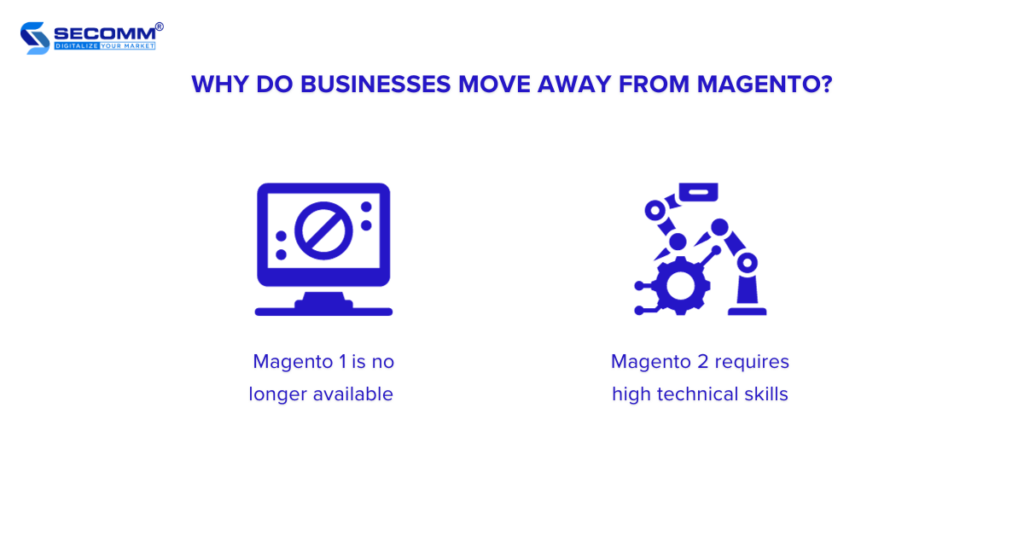
Learn more: 15 reasons why you should migrate to Shopify Plus
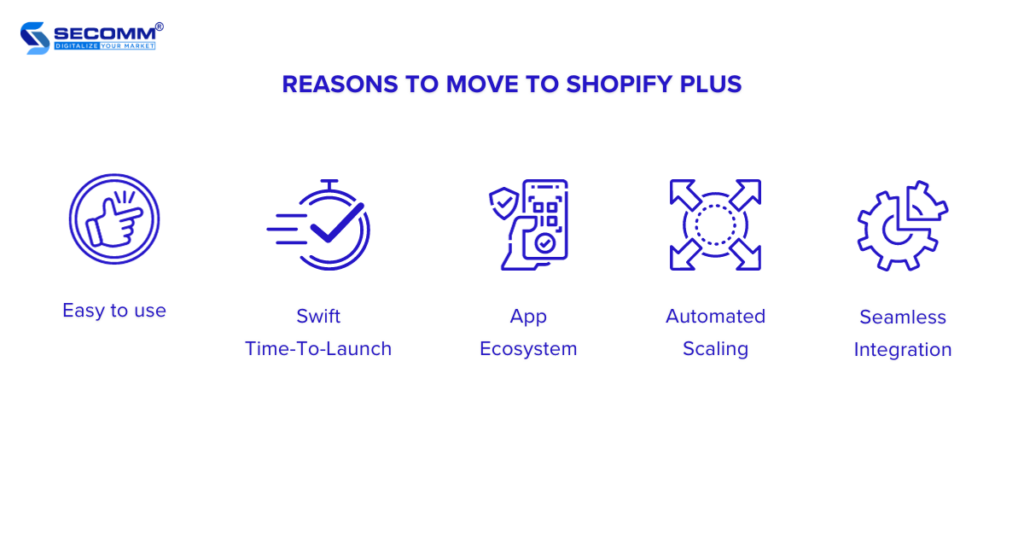
Below are some brands that have previously embraced eCommerce using Magento and switched to Shopify Plus to reduce technical complexities and costs.
Gymshark, a UK-based brand specializing in sportswear and fitness fashion, has emerged as a prominent and favored global sportswear brand since its inception in 2012.
Facing a website crash during the bustling Black Friday shopping season, Gymshark, previously on Magento, made the strategic decision to switch to Shopify Plus.
Despite time and financial investments in repairing and maintaining the system, there was no guarantee of long-term effectiveness.
Upon switching to Shopify Plus, Gymshark capitalized on available solutions such as Shopify POS to elevate both online and offline shopping experiences. The implementation of Shopify Scripts, an exclusive tool for the ‘Plus’ merchants, allowed them to customize and optimize the checkout process.
By using this advanced SaaS platform, Gymshark significantly boosted conversion rates and sales, particularly during major year-end shopping events. This success has firmly established Gymshark as one of the fastest-growing brands globally.

Founded in the United States in 2013, Bombas is a brand specializing in the manufacturing and retail of socks. Renowned for its “buy one, donate one” approach, Bombas pledges to donate a pair of socks to those in need for every pair sold.
Bombas faced website crashes on its previous Magento platform, occurring during Shark Tank program airings and major shopping events like Black Friday and Cyber Monday. These disruptions led to substantial financial losses and incurred significant fees for system repairs over an extended period.
To capitalize on the seamless scalability offered by Shopify Plus, Bombas moved away from the previous. The Bombas website remained resilient during significant year-end shopping events.
The brand not only recouped its investment quickly but also witnessed a remarkable 300% surge in sales compared to the same period the previous year.

Jack Rogers, an iconic American brand specializing in footwear and fashion accessories, has enjoyed widespread recognition globally for an extended period. The brand is not only distinguished for its use of the highest-quality materials in crafting sophisticated and luxurious footwear but also for its global prestige.
After running on the Magento platform for a while, Jack Roger’s eCommerce website started experiencing issues. Each minor update incurred significant time and costs, leading to the decision to switch to Shopify Plus. This move aimed to find a cost-effective solution for operations and maintain the overall stability of the system.
Jack Rogers implemented Shopify Flow to automate both operational and sales processes. The brand also integrated various third-party applications such as Smile, Gorgias, and more to augment the eCommerce efficiency.
Learn more:

Below are some notes to consider during the platform migration process.
There are several methods to migrate data to the Shopify Plus system, such as automated migration, manual migration, and data import/export. You can choose one of these methods or deploy all of them to streamline the migration process and enhance data accuracy.
Customer data
Product data
Transaction data
Switching an eCommerce platform in general and specifically migrating from Magento to Shopify Plus is a complex process that demands detailed planning, precision, and an investment in both budget and time, along with technical expertise.
Therefore, solution architects need to strategize to redesign the system, encompassing system architecture, infrastructure, technology, performance monitoring tools, etc.
When deciding to switch to Shopify Plus, there are some things related to website optimization you need to keep in mind. The URL structure of the two platforms differ, so you should check the navigation of all web pages to ensure the preservation of SEO value and user redirection to the correct pages.
During the platform migration process, a temporary decrease in rankings on search engines like Google or Bing is normal and not a cause for concern. These search engines may take a few days to process the new website and update essential indices.
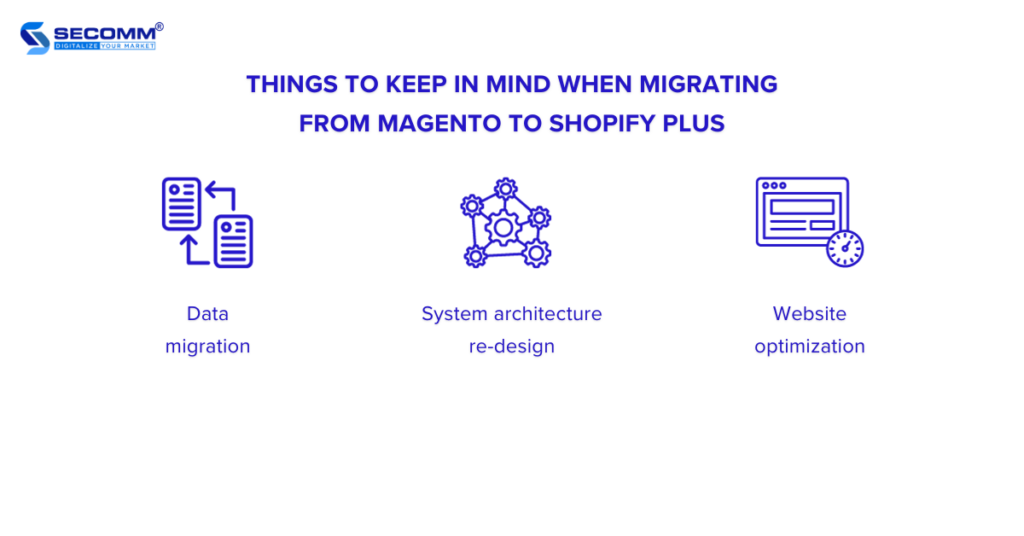
Lately, Shopify Plus has emerged as the preferred choice for businesses making the move from the Magento world.
Having extensive experience in developing eCommerce websites on both eCommerce platforms, and successfully executing the Shopify Plus migrations, SECOMM has become a reliable technology partner for many large enterprises such as Vinamilk and Suzuverse.
Contact SECOMM or call directly at the hotline (028 7108 9908) to start the project of the Magento to Shopify Plus platform migration process tailored to your business.
 2
2
 4,684
4,684
 0
0
 1
1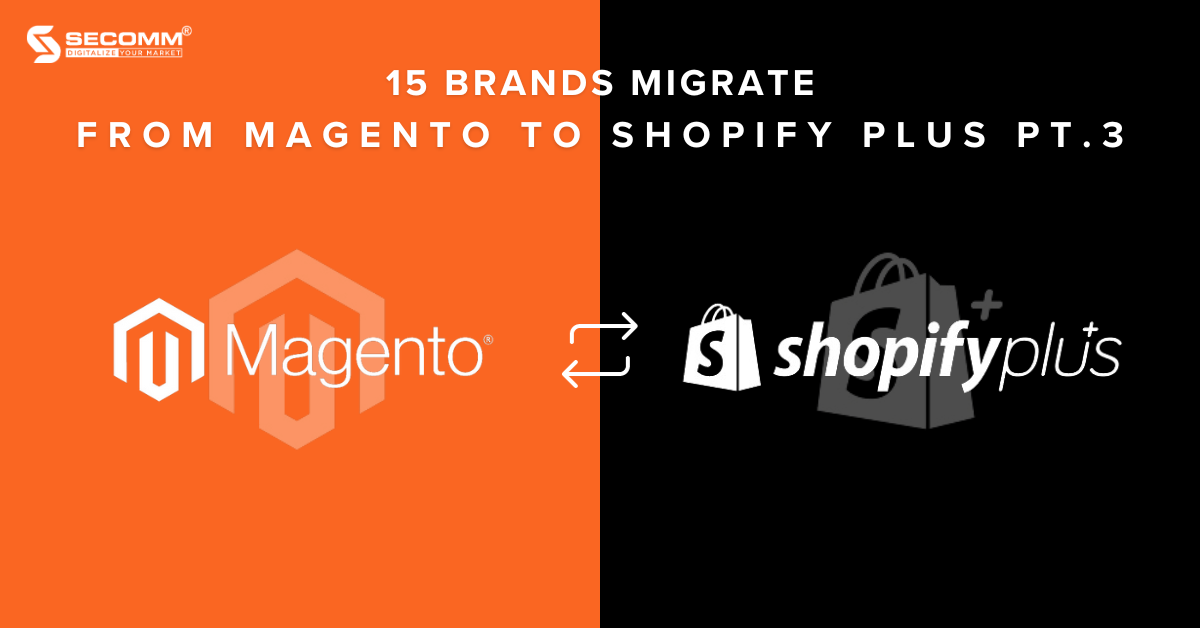
Building upon the narratives in parts 1 and 2, this third part invites you to delve into the stories of the remaining brands within the series of 15 that migrate from Magento to Shopify Plus. Explore how this strategic decision has led to their success in terms of sales and paved the way for sustainable growth in the future.
Learn more:
Beard & Blade is a wholesale business specializing in providing products for hair styling, beard care, and beauty and skincare for men. The brand is known for offering high-quality products tailored for men who aim to maintain their appearance and well-being.
Beard & Blade’s wholesale website was initially built and developed on the Magento eCommerce platform. However, according to the Beard & Blade team, operating the wholesale system on this platform proved to be challenging and required numerous manual tasks.
This resulted in time loss, and the overall cost for their wholesale system to operate on Magento was a considerable amount. Therefore, the brand decided to revamp its platform with Shopify Plus.
After considerable efforts, Beard & Blade’s Shopify Plus wholesale website for men’s products was officially launched.
By utilizing Shopify Plus’s dedicated solutions for wholesalers, Beard & Blade was able to automate inventory management, customize product pricing, and set discount levels based on the quantity of products ordered.
In contrast to the previous operational experience on Magento, wholesale orders on Shopify Plus are processed consistently, without interruptions, and without requiring manual tasks, thus avoiding disruptions to the customer experience.
Since the launch of the new website on Shopify Plus, Beard & Blade’s wholesale revenue has increased by 100%, and the average order value (AOV) for wholesale is five times higher than the retail AOV.

Milligram is a fashion and stationery brand headquartered in Melbourne, Australia. The brand primarily focuses on producing and providing stationery products, including notebooks, pens, and bags made from premium materials with unique designs.
Initially, Milligram built its eCommerce website on the Shopify platform, and later, in pursuit of brand growth, switched to using the Magento platform. After a while, as Milligram expanded its scale with more offline stores, the Magento website system started to operate slowly, and the backend database was overloaded.
Errors and delays occurred during updates, causing disruptions beyond the normal timeframe. Therefore, Milligram returned to Shopify, but this time opting for the advanced version – Shopify Plus.
Leveraging the available solutions of Shopify Plus, Milligram built and customized advanced features, such as an enhanced search function, to provide an optimal shopping experience for customers.
The platform transition from Magento to Shopify Plus was swift and smooth. Milligram easily executes promotional campaigns, uploads products without requiring technical skills, and finds managing and operating the Shopify Plus system more straightforward compared to Magento.
This allows Milligram to focus wholeheartedly on sales, marketing, and enhancing customer relationships.

Eden Park is a prestigious fashion brand originating from France, renowned for its high-end sportswear and fashion products. The brand specializes in providing premium sports and fashion items, with their collections often combining a blend of comfortable and luxurious styles.
In 2021, Eden Park turned its attention to Shopify when contemplating entry into the U.S. market. Moreover, at that time, Eden Park’s eCommerce website faced numerous operational issues.
Bastien Borget, the eCommerce Director of Eden Park, admitted that the business spent approximately 80% of its time operating the Magento website, yet the system consistently experienced errors, and the maintenance incurred substantial costs.
During Black Friday, the Magento website crashed due to overload from a sudden surge in traffic. At that point, Eden Park decided to revamp its platform with Shopify Plus, utilizing solutions within the Shopify ecosystem such as Shopify Payment and Shopify Flow.
Additionally, the superior integration capabilities of Shopify Plus allowed Eden Park to seamlessly integrate with third-party applications like Klaviyo, Gorgias, and Babak.
Eden Park’s Shopify Plus eCommerce website took less than 2 months to launch. One year after the introduction of the new website, Eden Park’s revenue increased by 30%, and the conversion rate rose by 48%.
The solutions provided by Shopify Plus alleviated the operational burden for Eden Park, allowing the business to allocate more time to marketing and sales rather than website maintenance, contributing to impressive business results.

Jack Rogers is a renowned footwear and fashion accessories brand headquartered in New York, USA. The brand is known for producing stylish sandals with traditional designs and premium materials, making Jack Rogers an icon of aristocratic fashion.
For a prominent fashion brand like Jack Rogers, utilizing a website as a potential sales channel remains crucial. However, the Jack Rogers website operating on the Magento platform began experiencing errors after a certain period.
Tasks such as repairs, changes, system operations, or running marketing campaigns consumed a significant amount of time for the technical team, leading to higher costs for Jack Rogers.
Moreover, inventory management posed challenges, with overselling issues occurring, and inaccuracies in the system’s quantity calculations resulting in revenue loss and a suboptimal customer experience.
Therefore, the Jack Rogers team sought to simplify their system, implement automation processes, and reduce technical burdens to focus on more critical business tasks.
The migration from the Magento platform to Shopify Plus helped Jack Rogers address these challenges. The new Jack Rogers website leveraged Shopify Flow solutions to automate operational, marketing, and sales processes, saving considerable time and labor compared to the manual processes of the previous Magento website.
Jack Rogers also utilized Shopify Plus Certified App applications to enhance the customer experience, including Returnly, Smile, Gorgias, and others.
During the Covid-19 social distancing period, Jack Rogers’ Shopify Plus website became the primary sales channel for the brand, experiencing a 60% increase in website traffic and a 30% increase in conversion rates.

Skin Inc is a skincare brand based in Singapore, specializing in providing personalized skincare products based on scientific principles and advanced technology. The brand is renowned for creating diverse and high-quality skincare products, particularly serums and unique skincare items.
With pride in their personalized products, Skin Inc also aimed to build an optimal online shopping experience with a high degree of personalization for customers. However, the business lacked the tools to achieve this.
Each time the technical team made a few changes, the website system immediately slowed down, lagged, and sometimes even had to temporarily suspend operations, causing disruptions to customer shopping.
This issue occurred frequently, especially during major year-end shopping seasons, resulting in substantial losses for Skin Inc, amounting to thousands of dollars.
Therefore, Skin Inc needed an alternative eCommerce solution that could be easily customized to deliver the best customer experience. Skin Inc transitioned from Magento to Shopify Plus and swiftly found solutions to enhance the customer experience.
With multi-store management features, Skin Inc could create multiple versions of eCommerce websites to tailor the experience for different customer segments in various markets.
In addition, Skin Inc implemented Shopify Flow and LaunchPad solutions to automate operational and sales processes. The seamless integration capabilities of Shopify Plus enabled Skin Inc to easily integrate with third-party applications to enhance marketing campaigns and customer loyalty programs.
As a result, this renowned beauty brand was able to reduce operational time by 50% and increase conversion rates by 200%.

So, SECOMM has gathered insights from 15 representative brands that courageously stepped out of the “Magento world” to revamp their eCommerce websites with Shopify Plus. These brands prioritize customer experience and streamlined processes, inspiring others to confidently opt for platform migration.
Contact SECOMM or call directly at (+84)28 7108 9908 for advice and implementation of the eCommerce migration process from Magento to Shopify Plus today!
 25
25
 4,507
4,507
 0
0
 1
1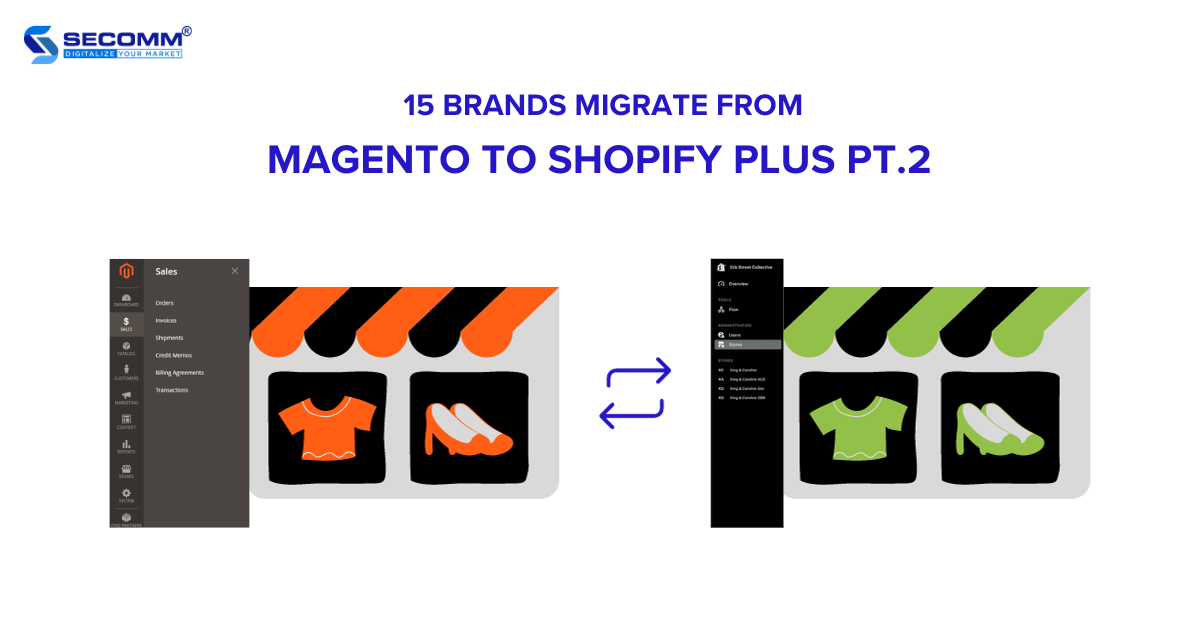
When it comes to brands that migrate from Magento to Shopify Plus, it’s good to read their success stories in sales behind. In the second part of this series, let’s continue to delve into more brands that chose to migrate their eCommerce platforms from Magento to Shopify Plus, and explore how this decision paved the way for boundless success.
Originally established as a wholesaler distributing high-quality underwear through pharmacies, Boody later identified new growth opportunities by venturing into online sales for environmentally conscious fashion enthusiasts.
Boody initially deployed an eCommerce website on the Magento platform, but the absence of a dedicated technology team severely limited management, operations, and customization capabilities.
Also, inconsistencies between the frontend on mobile devices and laptops, utilizing different technological solutions, resulted in a non-uniform user experience and inefficient use of system resources.
To address these challenges and pursue goals of international expansion, Boody sought a platform that could alleviate the burden of management and operations while providing a consistent customer experience.
The fashion brand switched from Magento to Shopify Plus, promptly implementing automated solutions for processes such as email and security checks using Shopify Flow. Boody also adopted Shopify Payments to facilitate online transactions without the need for integration with third-party payment service providers.
The platform overhaul with Shopify Plus significantly enhanced the operations. Leveraging the robust integration capabilities of Shopify Plus, Boody seamlessly integrated with third-party systems to strengthen customer relationships, including platforms like Klaviyo, Gorgias, and Odoo.
Benefiting from the flexibility and solutions offered by Shopify Plus, Boody developed a customized eCommerce website without requiring extensive technical expertise. This allowed the Boody team to focus on multi-channel sales strategies and international expansion.
Shortly after the platform transition, Boody rapidly expanded into 10 international stores, witnessing a 70% increase in online sales and a 5% rise in conversion rates. With Shopify Plus, Boody is realizing its mission to become the world’s most beloved sustainable underwear brand.
Learn more: 15 brands migrate from Magento to Shopify Plus Pt.1

Alessi is a renowned Italian brand specializing in the design and manufacturing of high-quality household and interior decoration products. The brand was established in 1921 and has since become one of the icons of Italian art and design.
Alessi pays attention to every detail in product design while relying on third-party units to enhance the aesthetics of its website design.
However, the Magento eCommerce platform, which Alessi had been using for a long time, suddenly announced the end of support for older versions, obliging merchants to upgrade to a higher version.
Faced with the complex and time-consuming upgrade process, Alessi decided to seek an alternative solution.
Moreover, the outbreak of the Covid-19 pandemic in Italy and across Europe prompted Alessi to make necessary changes to maximize online sales. The business executives aimed to re-establish the platform within just 12 weeks.
In reality, Boody achieved the goal in less than 3 months by completing the e-commerce platform transition from Magento to Shopify Plus.
Since implementing Shopify Plus, Alessi has seen a 233% increase in page views, a 109% increase in conversion rates, a 222% increase in transaction volume, and a 210% increase in total online revenue.
Alessi can now rest assured that customers will have an engaging shopping experience on the website, reflecting the true brand image that the business has spent a century building.

Rebecca Minkoff, a renowned high-end fashion brand from the United States, is well-known for its handbags, footwear, and fashion accessories. The brand’s products often embody a blend of alluring, practical, and creative styles.
Rebecca Minkoff not only focuses on creating aesthetically pleasing fashion items but also consistently leverages technology to provide customers with novel shopping experiences over the past decade.
In addition to this, the customer’s online shopping experience on the brand’s eCommerce website is a particular area of emphasis. The migration from the Magento eCommerce platform to the Shopify Plus platform is also part of Rebecca Minkoff’s strategy.
Utilizing solutions available within the Shopify Plus ecosystem, coupled with robust and seamless integration capabilities, has enabled this fashion brand to implement 3D and AR (Augmented Reality) technologies.
These technologies aim to enhance customers’ unique, detailed, and realistic views of products, ranging from styles to materials.
According to the company, individuals interacting with 3D models are 44% more likely to add that model to their shopping carts compared to those who do not interact. Among visitors who engage with 3D models, they have a 27% higher likelihood of placing an order compared to non-interacting individuals.
Rebecca Minkoff notes that when customers view a product in AR, their likelihood of making a purchase increases by 65%.
This positive step in eCommerce has significantly contributed to business growth. According to Rebecca Minkoff, 65% of customers interacting with AR products tend to make purchasing decisions swiftly, and with 3D technology, this figure is 27%.

Established in 2012 in the United Kingdom, Blakely is a unisex fashion brand known for its youthful and dynamic style. Blakely’s product range includes t-shirts, hoodies, sweaters, leggings, jeans, and fashion accessories. The brand aims to provide high-quality, beautifully designed, durable products that align with current fashion trends.
Blakely’s eCommerce website was initially built on the Magento platform. However, the system frequently experienced crashes, especially during peak shopping periods like Black Friday, affecting customer shopping experiences and the brand’s revenue.
Another concern for Blakely with the previous platform was its limitations in integrating with third-party applications, posing challenges in reaching target customers and efficiently managing customer data to drive real growth. Furthermore, the lack of tools for data management led to issues in the personalization and localization of the customer experience.
Therefore, after careful consideration, Blakely decided to migrate from the Magento platform to Shopify Plus. With the implementation of Shopify Plus, Blakely successfully launched two additional eCommerce websites specifically catering to EU and U.S. customers, enabling the brand to sell more efficiently in international markets.
Blakely also utilized Shopify Plus’s available themes and seamlessly integrated with third-party tools to not only provide an optimal shopping experience for customers but also support effective data management.
Switching to Shopify Plus brought about significant positive changes for Blakely in terms of sales. Specifically, the conversion rate increased from 1.4% to 2.6%, and the EU store witnessed an impressive 30% growth since its launch. Global sales increased by 49%, with a 130% increase in sales in the U.S. and a 60% increase in sales in the EU.

Peepers is a fashion brand specializing in reading glasses and sunglasses with its main headquarters located in Michigan, USA. The brand is known for blending modern design with quality, offering high-quality products at affordable prices.
Despite several redesigns that consumed considerable time and budget, Peepers’ Magento website failed to meet expectations.
The brand aimed to enhance page loading speed and provide customer-centric features, but the costs associated with each change or system update on Magento proved to be a significant expense for Peepers.
Therefore, Peepers made the switch to Shopify Plus to leverage the platform’s flexible customization capabilities with a more cost-effective approach than Magento.
Furthermore, offering a customized payment experience enhances the security of customers’ personal and payment information, thereby increasing customer trust when shopping on the Peepers website.
Since transitioning from the Magento platform to Shopify Plus, this fashion brand has witnessed a 30% increase in conversion rates and a 20% increase in the average order value (AOV).

Here are the next 5 brands in the series re-platform from Magento to Shopify Plus. While Boody’s motivation for the switch is to ease the burdens of management and operations, Alessi, in contrast, seeks to avoid the expenses and time involved in upgrading to a higher platform version.
Rebecca Minkoff, however, aims to capitalize on the existing ecosystem of Shopify to implement 3D and AR technology solutions for their eCommerce website.
Similarly, Blakely and Peepers overhauled their platforms to streamline operational time and costs, leveraging the advanced integration capabilities of Shopify Plus to deliver a distinctive customer experience.
Throughout SECOMM’s process of executing platform migration, the pivotal factor determining success is a detailed and well-structured conversion plan.
Contact SECOMM or directly call the hotline at (028 7108 9908) to collaborate on devising the optimal plan for the platform migration.
 2
2
 4,925
4,925
 0
0
 1
1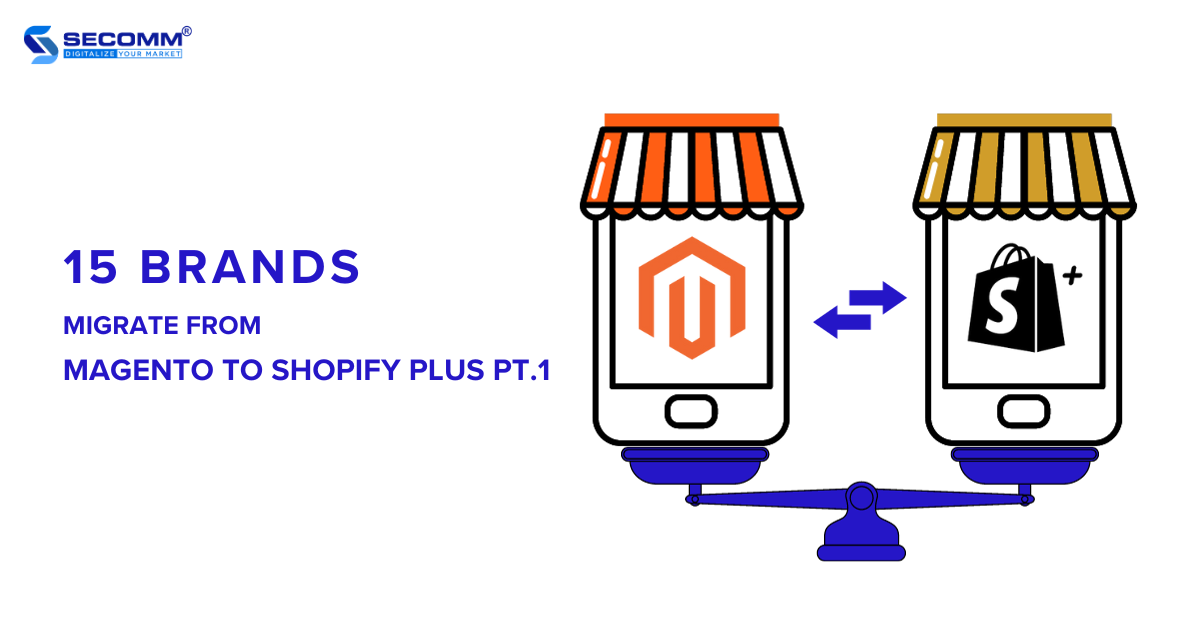
Magento is known as the ‘golden standard’ for many eCommerce businesses. With its scalability and flexible customization, Magento can provide a unique shopping experience.
However, the complexity of deploying, managing, and maintaining the system has led many brands to step out of the ‘Magento world’ in search of more optimal solutions. Shopify Plus is one of the popular choices today for streamlining the migration.
Let’s delve into why the following five brands opted to migrate from the Magento platform to Shopify Plus for their eCommerce websites, and how this strategic decision has contributed to increased conversion rates and sales.
Learn more: 15 Reasons You Should Migrate to Shopify Plus
Established in 2012, Gymshark, a renowned athletic wear retail brand, adopted Shopify Plus. However, before making the switch, the brand had built and developed its eCommerce website using Magento.
For a fashion retailer, year-end shopping seasons, especially Black Friday, represent opportunities for sales growth. Simultaneously, Gymshark’s rapid expansion since its inception required more from a platform capable of managing spikes in traffic and consistently scaling with its business objectives.
Dissatisfied with the existing system, the Gymshark team faced not only the time-consuming setup and operation but also significant costs – amounting to thousands of dollars – for repairing and maintaining the system that crashed precisely during the Black Friday event.
According to Ben Francis, the founder of Gymshark, the eCommerce website was down for about 8 hours, resulting in an estimated damage of over £100,000.
Therefore, Gymshark overhauled its platform with Plus, leveraging Shopify POS and Shopify Script solutions to bridge the gap between offline and online shopping experiences. They enhanced these shopping experiences with custom code snippets at the checkout page.
With these tools, Gymshark only needed to customize based on its specific needs and goals. In contrast, developing such features on Magento could have consumed considerable time and budget.
The platform switch to Shopify Plus helped Gymshark achieve a retail turnover of £41 million and garner over 5.1 million social media followers in 2017, propelling the business to become one of the fastest-growing brands globally.

Arising from an inspiring founding narrative, Bombas, a U.S.-based sock manufacturer and retailer, committed to donating a pair of socks for each pair sold to those facing homelessness. The company garnered successful funding on Shark Tank in 2013, capturing the interest of both investors and American consumers.
However, the joy quickly turned to dismay when Bombas secured a deal with investor Daymond John, and their Magento eCommerce website suffered not one but two crashes—first during the initial airing and then during the subsequent rerun of the episode.
Compounding the issue, the most disastrous moment for Bombas occurred when their Magento website collapsed amid the peak shopping season of Black Friday and Cyber Monday (BFCM).
The system failure hindered customers from completing transactions, resulting in Bombas incurring significant financial losses, additional expenses, and extended downtime for system repairs.
Therefore, Bombas needed a more reliable eCommerce platform that could effectively address the issues they encountered, leading them to choose Shopify Plus.
The infrastructure of Shopify Plus facilitated Bombas in effortlessly and seamlessly expanding their system. Moreover, the eCommerce website system consistently withstood the demands of major shopping events like BFCM and reruns of the Shark Tank program.
Despite the substantial cost of migrating from Magento to Shopify Plus, Bombas swiftly recovered the investment, generating $17.2 million in revenue during the first year of Shopify Plus deployment—a 300% increase compared to the same period the previous year.
The positive outcomes of transitioning to the Shopify Plus platform are evident not only in financial metrics but also in how Bombas has bolstered its reputation and image in the eyes of customers, delivering a premium shopping experience.

In 2010, from the beaches of Costa Rica, two young entrepreneurs, Griffin Thall, and Paul Goodman, started Puravida Bracelets with a mission to collaborate and provide better income opportunities for bracelet artisans in Costa Rica and around the world.
The Puravida Bracelets story gained attention on social media as customers became curious about the close-to-nature lifestyle in South America, particularly in Costa Rica. Over time, the brand expanded its product portfolio to include necklaces, anklets, earrings, and hair ties.
Similar to many other businesses, Puravida Bracelets began its eCommerce journey with the Magento platform.
However, both Thall and Goodman were ambitious young entrepreneurs who desired rapid growth and development for their bracelet brand. Therefore, the challenge was to scale the eCommerce website system while ensuring the most optimal deployment costs.
This led Thall and Goodman to deploy Shopify Plus to find a solution to seamlessly integrate and combine various tools and applications to manage business operations more efficiently, provide a more engaging shopping experience, and increase sales.
The decision to switch from the Magento platform to Shopify Plus helped Puravida Bracelets increase retail revenue by 50% compared to the same period the previous year. Email sign-ups increased by 350%, and email revenue quadrupled compared to before the platform revamp.

PittaRosso is a renowned footwear retail brand from Italy with over 150 retail stores across Europe. The brand’s goal is to provide customers with an omnichannel shopping experience and implement several enhancements for its eCommerce website.
However, issues related to poor website performance, leading to suboptimal product pages on search engines, made PittaRosso hesitate before deciding to pursue the next goal with Magento. The complexity, time, and budget associated with Magento led PittaRosso to revamp its platform with Shopify Plus.
Simultaneously, they implemented a headless architecture for the eCommerce system and redesigned the SEO architecture and content strategy.
The footwear brand customized the frontend and integrated the CMS platform into the Shopify Plus backend to improve page loading speed, user experience, and SEO results. PittaRosso’s strategic shift coincided with the significant growth of eCommerce spurred by the Covid-19 pandemic, boosting the business’s eCommerce sales in 2021.
By 2022, the sales figures even surpassed expectations, with a 37% increase in net profit compared to the same period the previous year.
Building on this success, PittaRosso implemented payment integrations and automation to optimize multichannel sales operations and the overall shopping experience.
Re-platforming from Magento to Shopify Plus helped the business maintain a steady annual increase in conversion rates, sales, and notably, Black Friday Cyber Monday (BFCM) sales.
Learn more: What is Headless Shopify?

After six years of using Magento, the world’s largest retailer of military surplus and collectibles, IMA, fell victim to a hacker attack that resulted in the theft of a considerable amount of customer credit card information.
This incident led to IMA facing substantial fines from VISA, and Alex Cranmer, the Vice President of IMA, criticized Magento for its delayed notification to merchants about this security vulnerability.
IMA spent over $50,000 and three months rectifying security flaws in its system. Shortly after, Magento announced the discontinuation of support for older versions, implying that IMA needed to upgrade to a higher version, incurring potentially tens to hundreds of thousands of dollars in expenses and an extended timeline for completion.
In response, IMA decided to replatform from Magento to Shopify Plus, seeking a more secure solution for IMA’s system and enhancing the customer experience. Besides security and customization, some unique solutions such as Shopify Flow and LaunchPad significantly boosted IMA’s profit margins.
The costs associated with platform usage, maintenance, operations, and updates were notably reduced compared to deploying Magento.
Cranmer admitted to being complacent, thinking that Shopify was only suitable for individuals selling a small volume of products.
However, the Plus version surprised him with its specialized solutions and features designed explicitly for large, unlimited-growth businesses on their journey.

Here are five brands that have witnessed a remarkable change in sales by migrating to Shopify Plus. An important point to note is that while Magento provides high scalability and customization, the process demands a substantial budget and an extended deployment timeline.
Additionally, there is a need for technical expertise to determine when and how the system should expand. Sometimes, businesses may even face security vulnerabilities, as in the case of IMA.
On the other hand, Plus provides flexible customization with optimized costs, a faster time to market, and simplified maintenance and updates, following the platform’s rules.
Through accumulated experience in numerous eCommerce platform migrations, SECOMM is not only a solution provider but also a reliable partner for every business on its eCommerce journey.
Contact SECOMM or call directly on the hotline (028 7108 9908) for professional advice on planning the migration from Magento to Shopify Plus, unlocking unlimited development opportunities in the digital age.
 2
2
 5,023
5,023
 0
0
 1
1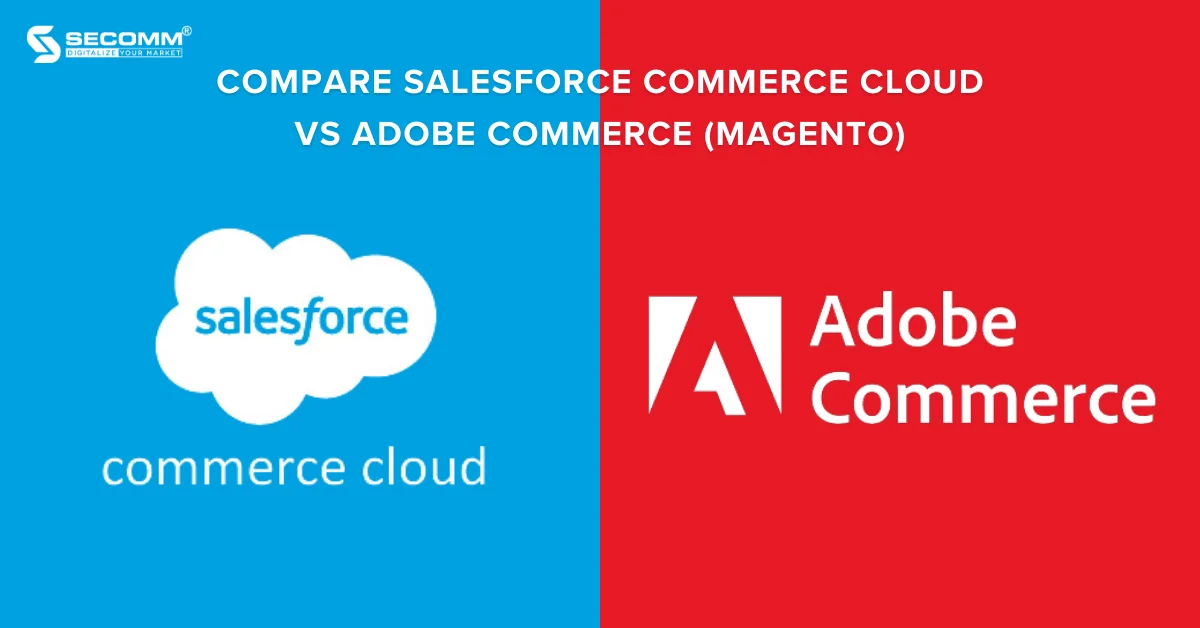
Salesforce Commerce Cloud and Adobe Commerce (Magento) are two leading platforms in the field of eCommerce, trusted by many large enterprises. However, both of these platforms have significant differences.
Let’s explore the important aspects of both with SECOMM to help businesses decide which platform is suitable for the brand’s business needs.
Salesforce Commerce Cloud, formerly known as Demandware, is a cloud-based eCommerce platform. Salesforce Commerce Cloud operates on the SaaS (Software-as-a-Service) model, providing high scalability and a range of features and capabilities to help businesses create a seamless and effective shopping experience for their customers.
Within Salesforce Commerce Cloud, there are three main editions for building eCommerce websites: Salesforce B2C Commerce, Salesforce B2B Commerce, and most recently, Salesforce B2B2C Commerce.
In the B2C model, there are three solution packages:

Similarly, the B2B model is also divided into 2 solution packages, including:
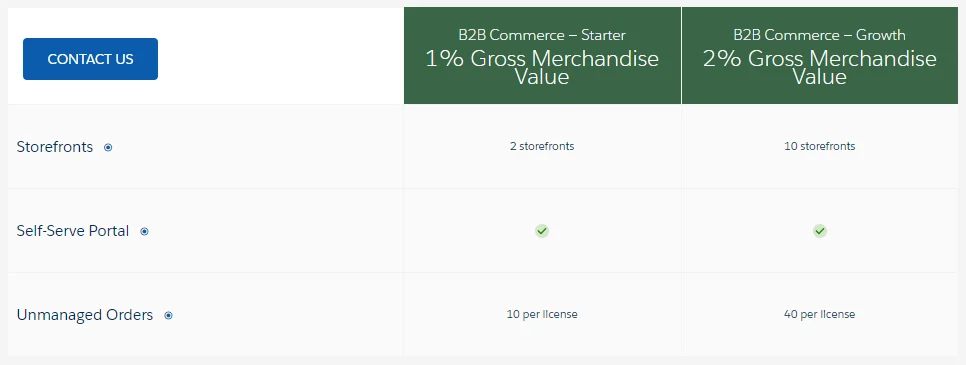
For the B2B2C model, it will be calculated based on 1% Gross Merchandise Value (GMV).
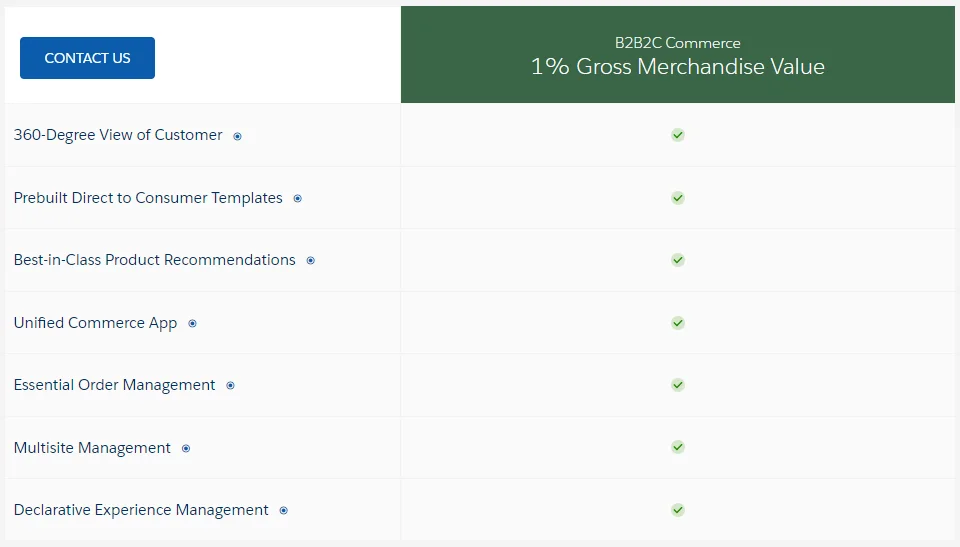
Related article: Top 10 Websites Built On Salesforce Commerce Cloud
Adobe Commerce (formerly known as Magento) is an open-source eCommerce platform designed under the PaaS (Platform-as-a-Service) model, assisting businesses in constructing professional eCommerce websites.
Adobe Commerce can be categorized into two main types:
Additionally, Adobe Commerce still supports the Magento Open Source version – a free version that can be downloaded and used by anyone.
Related article: Top 20 eCommerce Websites Using Adobe Commerce (Magento)
In summary, Salesforce Commerce Cloud and Adobe Commerce are two leading eCommerce platforms with significant differences.
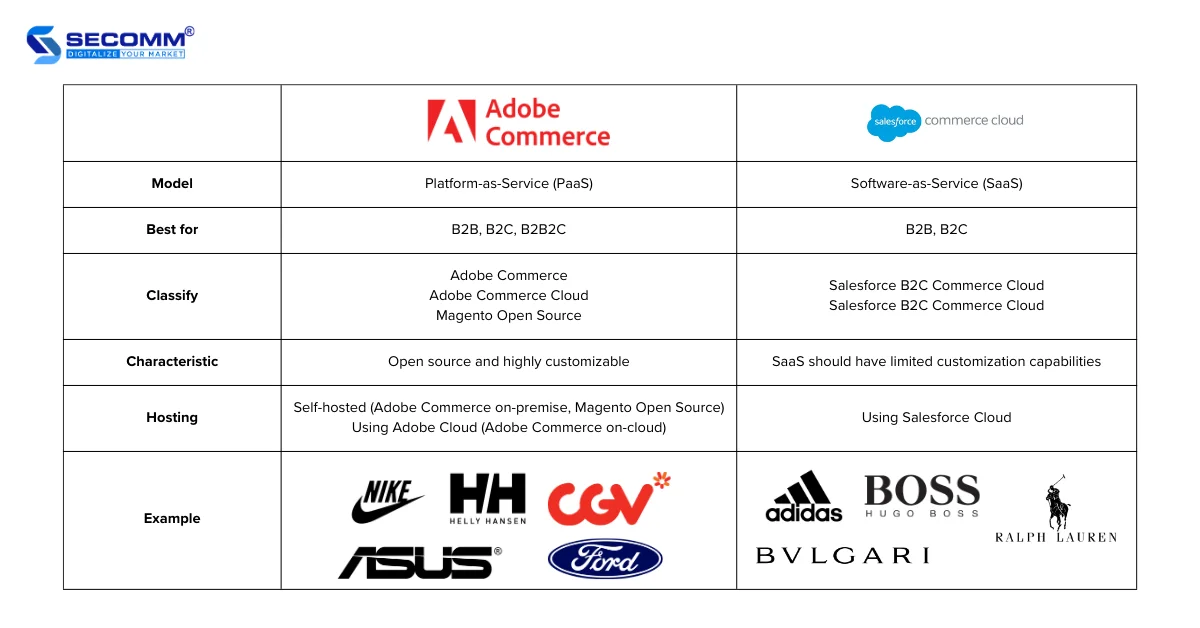
The cost of Salesforce Commerce Cloud depends on various factors but largely hinges on the scale of the business.
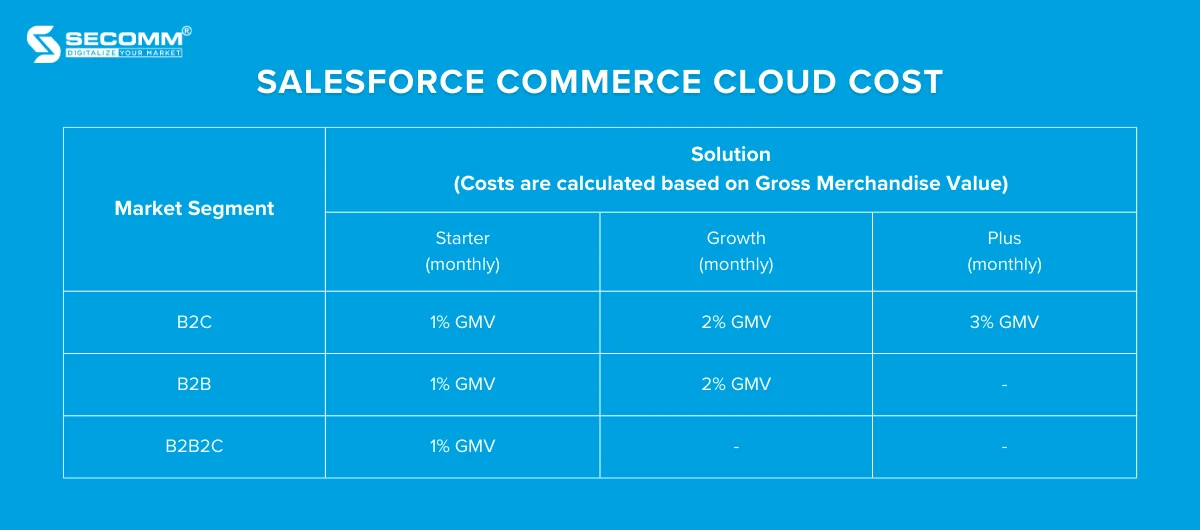
Operating as a SaaS solution, businesses pay a monthly fee based on the number of users and the revenue generated by the website. Costs start from depending on the GMV, averaging around $2,500 per month and can increase to tens of thousands of dollars for larger enterprises.
The cost of Adobe Commerce (Magento) also depends on various factors, including the chosen version and the monthly revenue of the business.
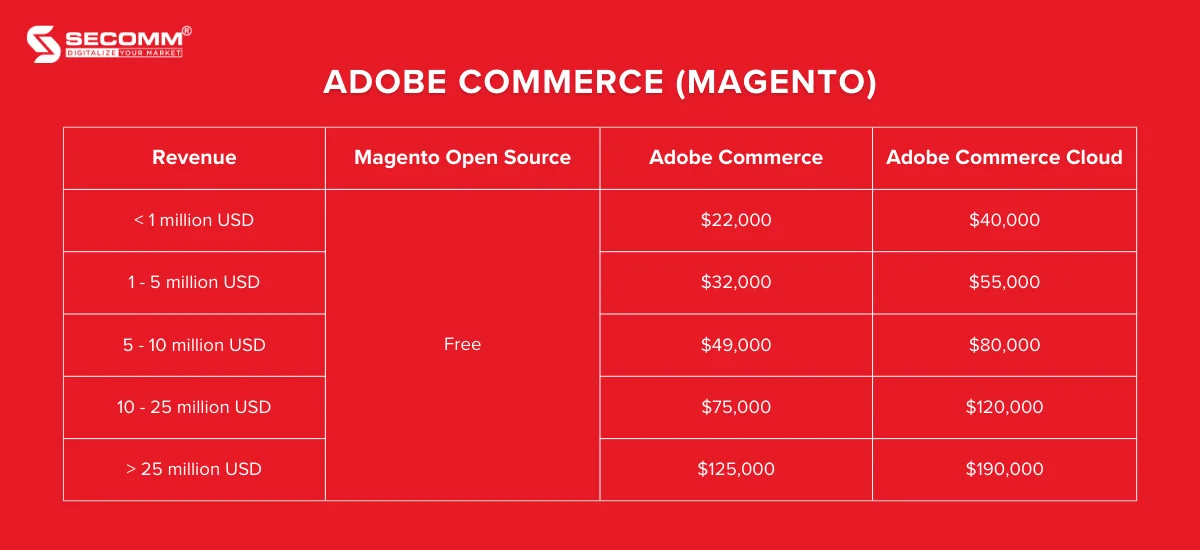
Adobe Commerce is a PaaS solution, meaning businesses must purchase software licenses annually and then pay a monthly fee for hosting and support if needed. License costs start from around $22,000, and hosting costs start from approximately $3,000 per year.
It can be observed that the costs of Salesforce Commerce Cloud and Adobe Commerce (Magento) may vary depending on the business scale, specific requirements, and customization levels.
For instance, for a business with a GMV of $25 million, the platform usage cost for Salesforce Commerce Cloud might be around $250,000/month, whereas for Adobe Commerce Cloud, it could be approximately $120,000/month.
In general, Salesforce Commerce Cloud tends to have higher costs compared to Adobe Commerce.
Related article: The Cost Of Building An Adobe Commerce (Magento) Website
Adobe Commerce (Magento) is built on an open-source architecture, allowing high customization and flexibility. Users can modify a significant amount of source code, making this platform suitable for complex eCommerce needs.
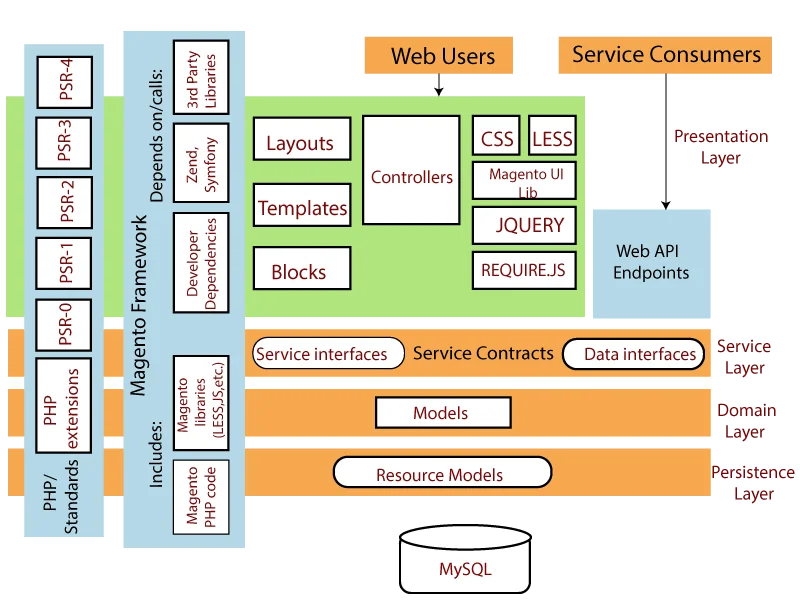
Salesforce Commerce Cloud utilizes a cloud-native, multi-tenant architecture. While this architecture provides significant customization capabilities, it is less flexible for modifying deep code segments compared to open-source architectures like Adobe Commerce (Magento).
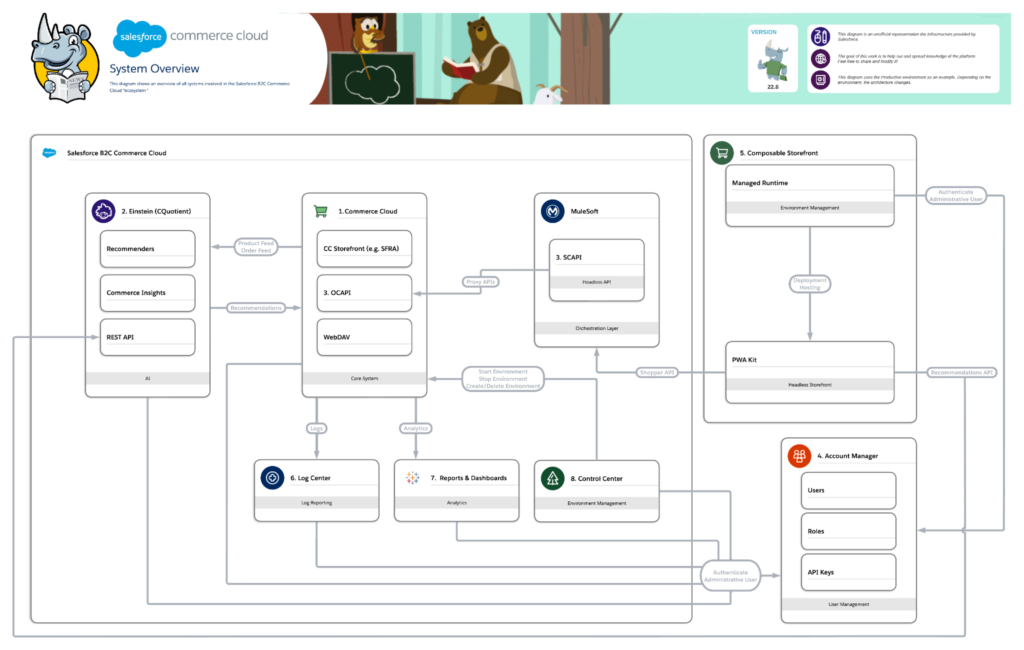
Salesforce Commerce Cloud is part of Salesforce, the leading Customer Relationship Management (CRM) platform today. Salesforce is renowned for its CRM services, including sales, customer, and marketing management.
Consequently, Salesforce Commerce Cloud seamlessly integrates with Salesforce CRM, providing a unified platform for managing and interacting with customers. This tight integration can be a significant advantage for companies heavily reliant on Salesforce for customer management.
Additionally, Salesforce Commerce Cloud seamlessly integrates with the Customer 360 ecosystem, including business management software like data, AI, or third-party utilities partnered with Salesforce.

On the other hand, Adobe Commerce Cloud is part of the Adobe Experience Cloud, a comprehensive set of solutions for marketing and customer experience.
Thus, Adobe Commerce Cloud integrates with other Adobe tools to support seamless multi-channel customer experience and marketing.
Some commonly used utilities in Adobe Experience Cloud include:
Moreover, Adobe Commerce Cloud offers various integration options and supports third-party extensions and plugins. This means Adobe Commerce can integrate with a wide range of systems such as CRM, POS, WMS, OMS, ERP, etc.
Salesforce Commerce Cloud and Adobe Commerce (Magento) are two widely used leading eCommerce platforms in the market, partially due to their incredibly powerful and diverse feature sets.
Below is a comparison of features between Salesforce Commerce Cloud and Adobe Commerce:
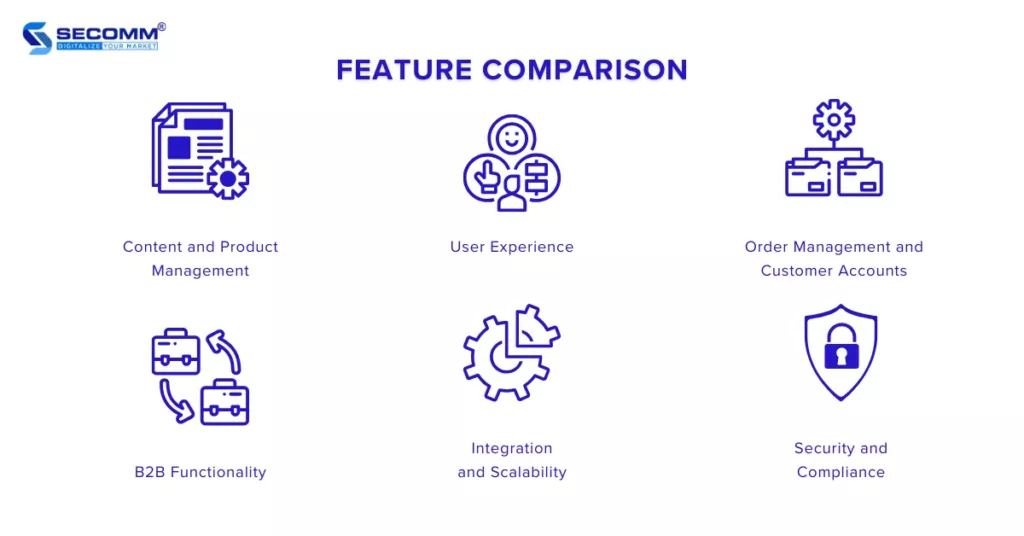
Content and Product Management:
User Experience:
Order Management and Customer Accounts:
B2B Functionality:
Integration and Scalability:
Security and Compliance:
Salesforce Commerce Cloud and Adobe Commerce (Magento) are both powerful eCommerce platforms. However, Salesforce Commerce Cloud is suitable for large enterprises seeking a tightly integrated eCommerce solution with their CRM system.
On the other hand, Adobe Commerce would be a better choice for businesses with high customization needs and a desire for more control over the eCommerce platform.
The selection of the most suitable eCommerce platform for each business will depend heavily on the core needs of the brand.
With deep expertise and the development of complex eCommerce systems for clients such as Changi Airport Group (Singapore), Trentham Estate (Australia), and The Warehouse (Vietnam), SECOMM understands the challenges in choosing a platform and deploying eCommerce that businesses are facing.
Contact SECOMM now or call directly at the hotline number (028 7108 9908) for free advice on the eCommerce website building roadmap!
 2
2
 3,911
3,911
 0
0
 1
1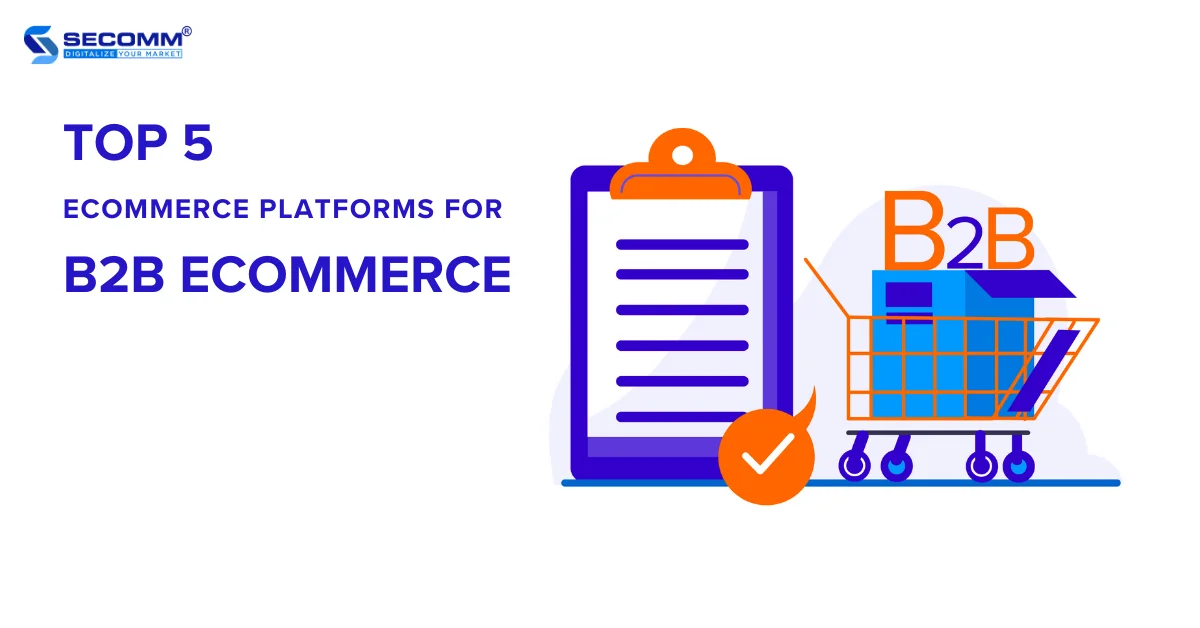
The global B2B eCommerce market is expected to reach $18.771.4 trillion by 2027.
According to McKinsey & Company, B2B enterprises are expanding their touchpoints in eCommerce, with 80% making online channels perform better than offline channels.
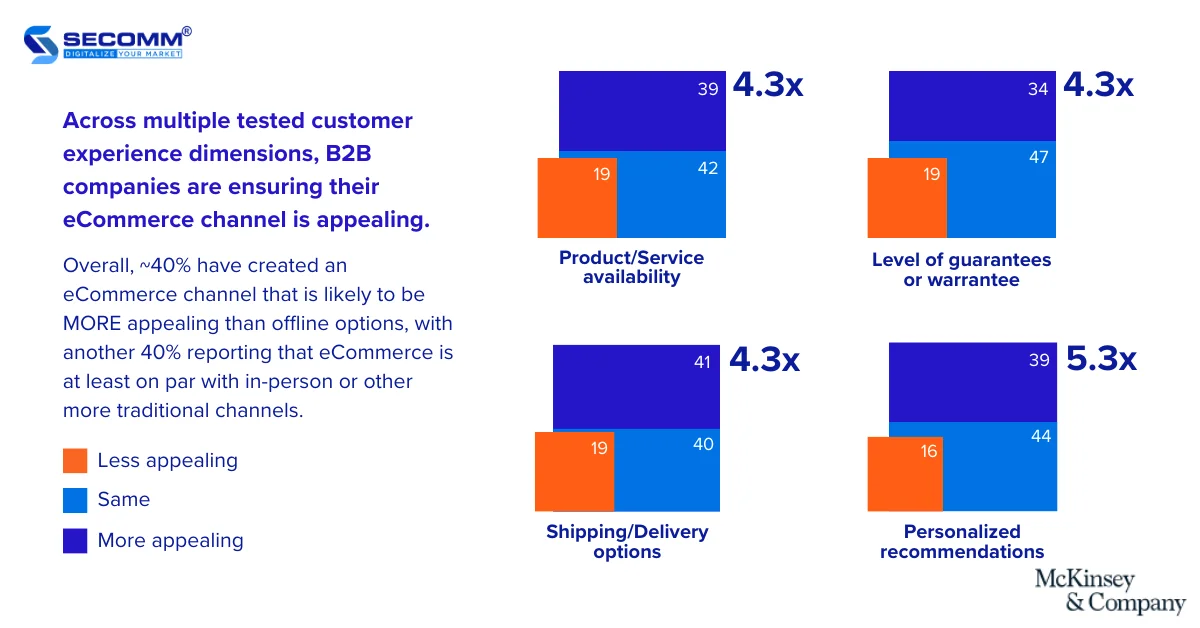
Therefore, B2B eCommerce is a rapidly growing market, with projected sales expected to reach 12.2 trillion USD by 2023. To succeed in this market, businesses always need a robust eCommerce platform.
It is crucial for businesses to clearly define the specificities and considerations of B2B eCommerce before deciding on which eCommerce platform to implement.
Specifically, Business-to-Business (B2B) eCommerce involves commercial transactions between businesses. As a result, B2B eCommerce has distinct characteristics compared to Business-to-Consumer (B2C) eCommerce, namely:
To succeed in B2B eCommerce, businesses need to take note of the following considerations:
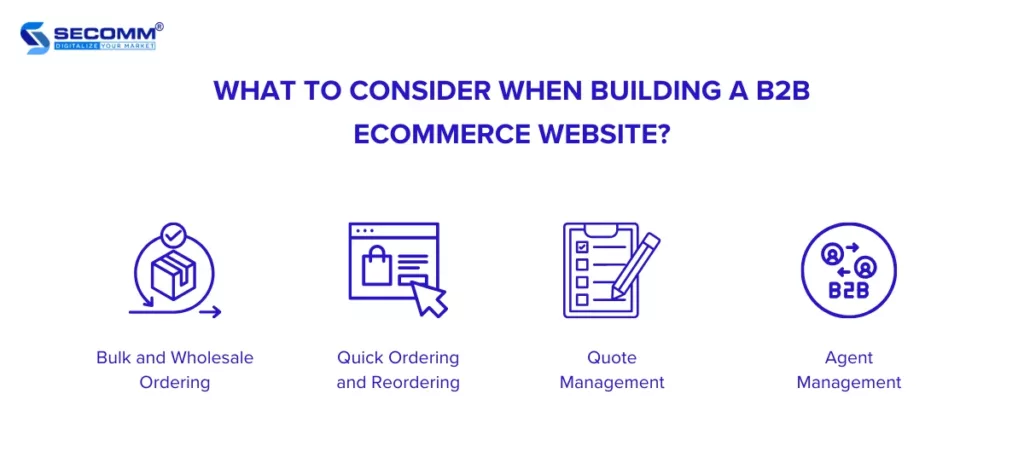
Bulk and wholesale ordering are crucial factors in the revenue of B2B businesses. The quantity and pricing can vary for each business depending on the customer group and the purchased product categories.
To efficiently handle these orders in B2B eCommerce, businesses need to use order management systems and establish clear, detailed, and appropriate order processing workflows.
The feature of quick ordering is often provided by B2B eCommerce platforms, allowing customers to create and place orders with just a few clicks. Quick ordering can be implemented through various methods, such as:
Unlike individual customers, B2B customers often repeat purchases of specific product categories in seasonal quantities. Therefore, B2B businesses should also incorporate a feature to remember previous orders for quick reordering.
Quote management in B2B eCommerce is a crucial process that helps businesses provide accurate and timely pricing information to customers, ultimately increasing sales and improving profits.
Specifically, in quote management, negotiating prices with multiple quote versions or from different suppliers is an important part of many B2B eCommerce models, allowing businesses to negotiate prices for large or complex transactions.
Managing information about agents, such as agent details, agent approval processes, agent hierarchies, credit limits, stock management for each agent, and managing discounts/commissions for agents, is essential.
Additionally, for B2B models involving multiple manufacturers and distributors, there may be a need for additional management of relationships between these entities and agents.
Therefore, depending on the current offline business model and the B2B eCommerce business model that the business aims to establish the most effective agent management process should be detailed.
Below are the top 5 eCommerce platforms for B2B businesses, capable of addressing the specificities of B2B eCommerce.
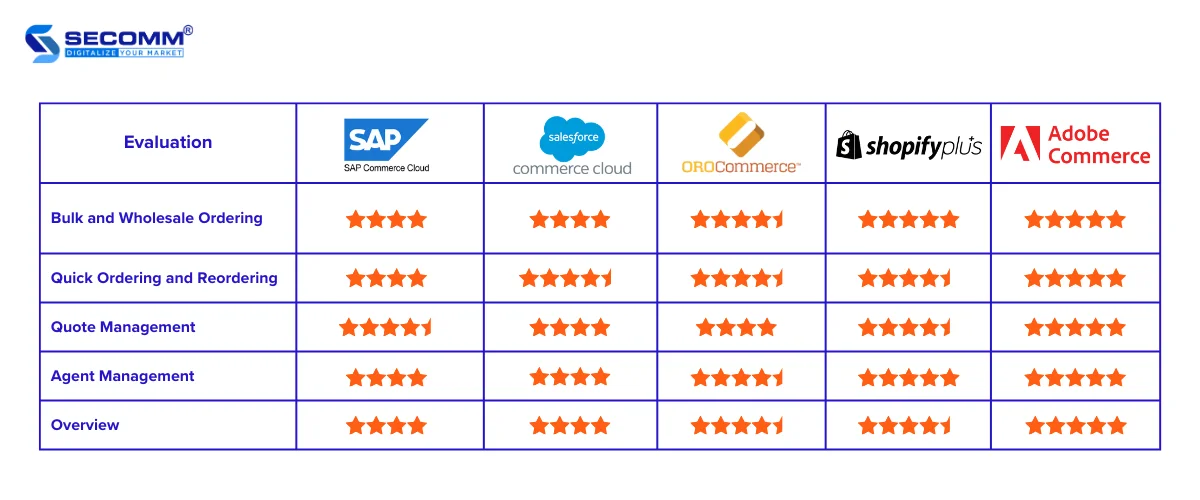
SAP Commerce Cloud is a powerful eCommerce platform suitable for B2B eCommerce businesses.
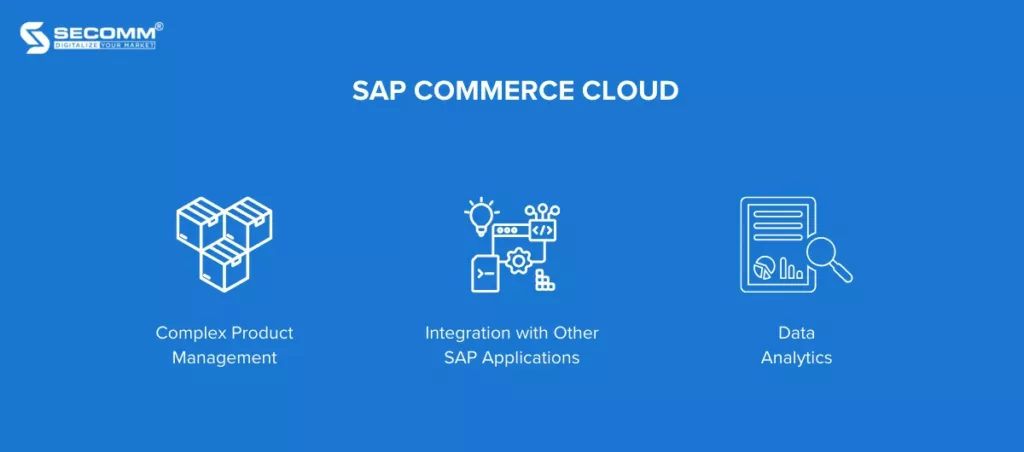
Here are some ways in which SAP Commerce Cloud can cater to B2B eCommerce:
Therefore, SAP Commerce Cloud can align with B2B eCommerce by offering features and customization capabilities to meet the specific requirements of businesses in the B2B industry.
Salesforce B2B Commerce is an eCommerce platform designed for large enterprises, including B2B businesses.
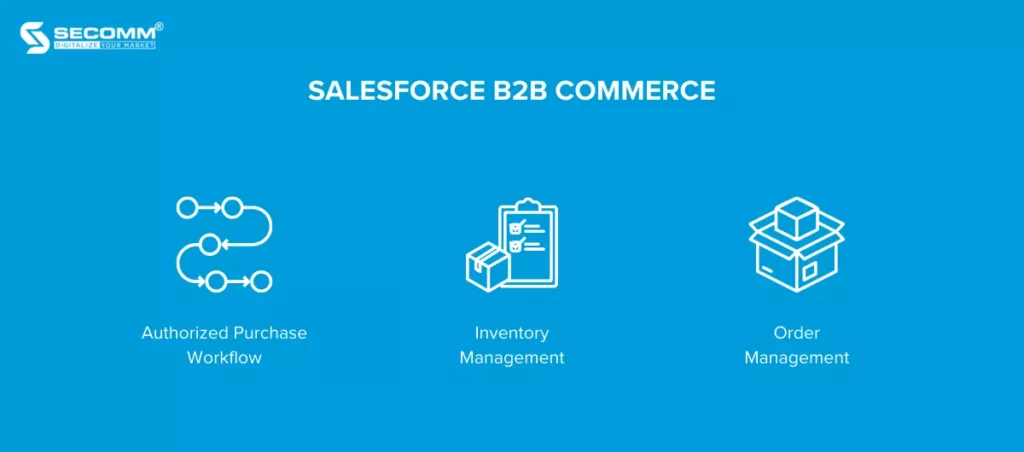
Here are some specific features and functionalities of Salesforce B2B Commerce that are suitable for B2B eCommerce:
In summary, the B2B functionalities of Salesforce B2B Commerce help B2B businesses enhance sales and customer service effectiveness.
OroCommerce is an open-source eCommerce platform designed for B2B enterprises. This platform provides powerful and flexible features, catering to the needs of B2B businesses of all sizes.
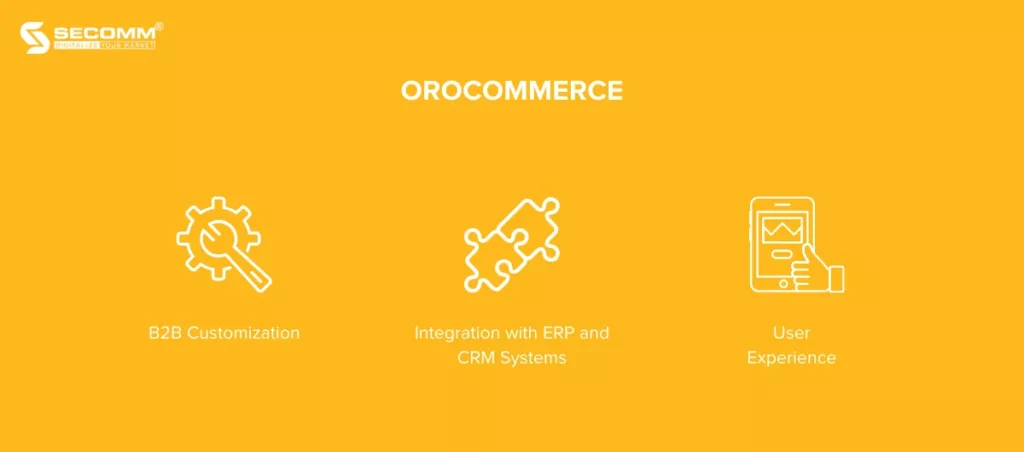
OroCommerce offers several features and functionalities specifically suitable for B2B eCommerce, including:
Overall, OroCommerce is a robust eCommerce platform worth considering for B2B enterprises.
Shopify Plus is a cloud-based SaaS eCommerce platform designed for large enterprises, especially B2B businesses.
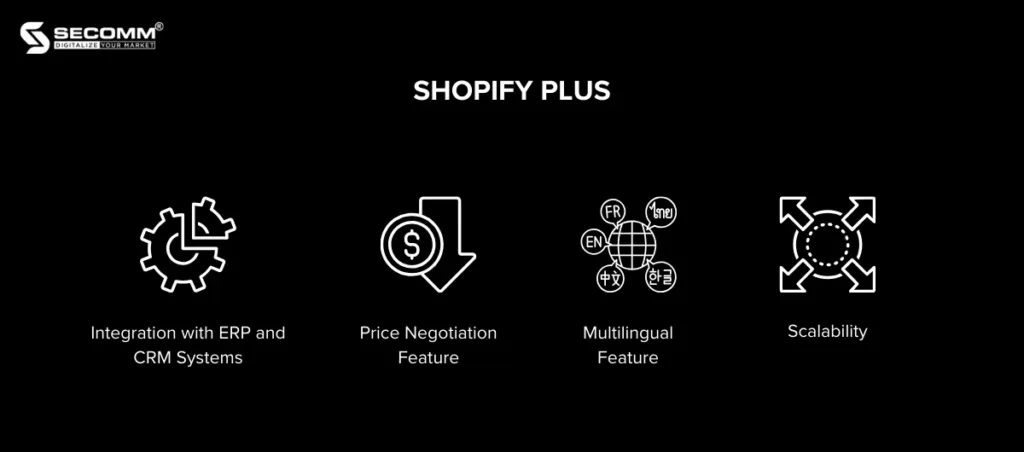
Shopify Plus provides powerful features and functionalities to meet the needs of B2B enterprises, including:
Some notable features of Shopify Plus that businesses can leverage include Shopify Flow, Shopify Launchpad, Shopify Payments, Shopify POS, etc.
Therefore, Shopify Plus is also an excellent choice for B2B businesses looking for a robust, flexible, and scalable eCommerce platform.
Xem thêm: 15 Lý do để chuyển đổi sang nền tảng Shopify Plus
Adobe Commerce (Magento) is a powerful and flexible eCommerce platform suitable for various types of businesses, including B2B enterprises.
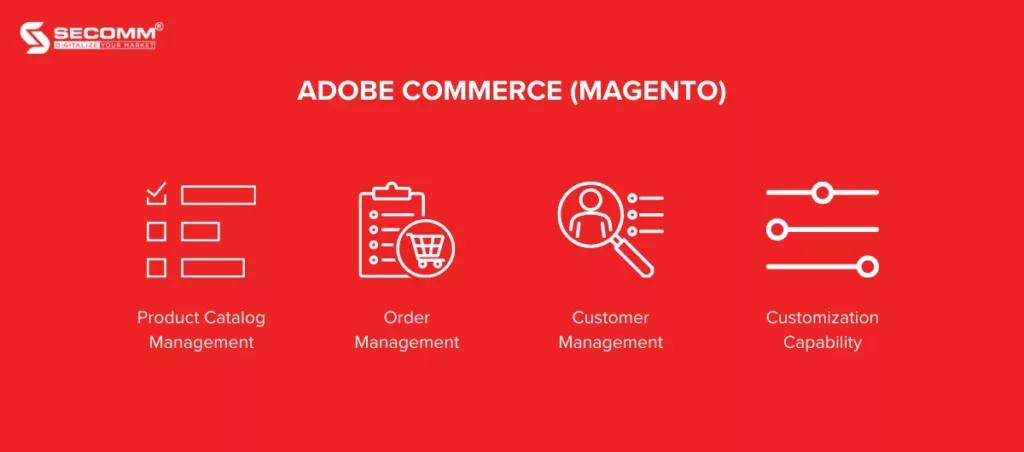
Adobe Commerce offers many features and functionalities that are well-suited for B2B eCommerce, including:
Moreover, Adobe Commerce can quickly deploy B2B-specific features thanks to its diverse ecosystem. It is also the most customizable platform among the five mentioned.
Additionally, Adobe Commerce has a large and active user community, providing support and resources for B2B businesses.
Read more: Shopify Plus vs Adobe Commerce: Key Differences 2023
Above are 5 popular platforms preferred by B2B businesses to build eCommerce websites, serving online business goals for brands.
However, choosing the most suitable platform for each business will depend on various factors, including business strategy, budget, deployment timeline, and the long-term direction set by business managers.
With deep expertise and the development of complex eCommerce systems for clients such as Changi Airport Group (Singapore), Trentham Estate (Australia), and The Warehouse (Vietnam), SECOMM understands the challenges in choosing a platform and deploying eCommerce that businesses are facing.
Contact SECOMM now or call directly at the hotline number (028 7108 9908) for free advice on the eCommerce website building roadmap!
 2
2
 7,743
7,743
 0
0
 1
1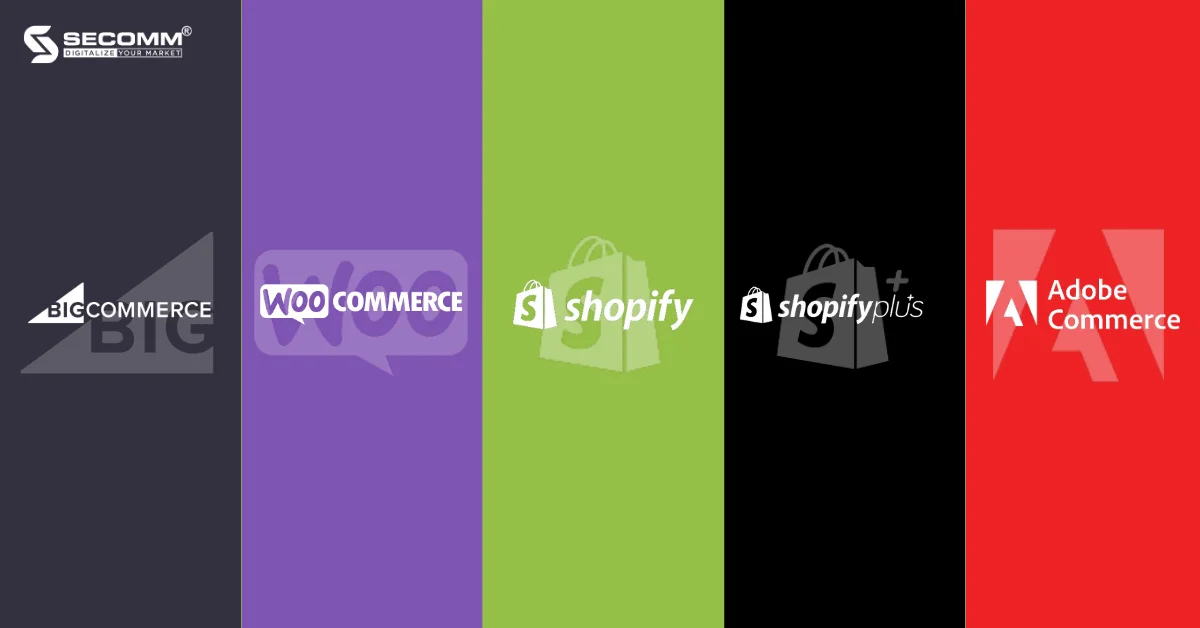
The global B2C eCommerce market is valued at 4.44 trillion USD in 2023 and is projected to reach 7.45 trillion USD by 2030, with a compound annual growth rate (CAGR) of 7.6% during the forecast period from 2021 to 2030.
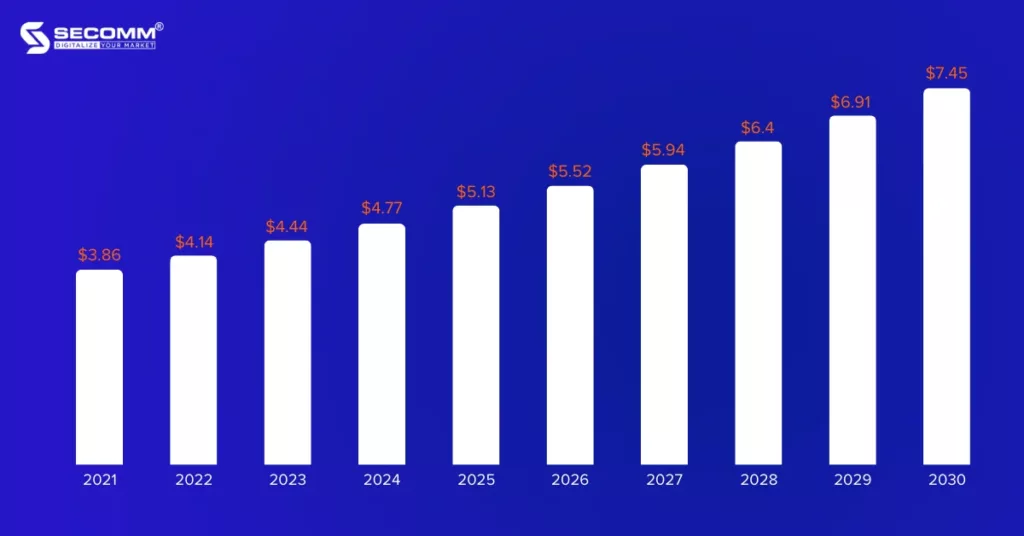
This demonstrates that eCommerce is increasingly thriving, becoming a crucial sales channel for B2C businesses. To build and develop a successful online store, businesses need to choose an eCommerce platform that aligns with their needs and business objectives.
B2C eCommerce platforms typically provide a seamless shopping journey, and user-friendly interfaces, allowing customers to easily navigate, search for items, and complete transactions quickly.
This is achieved through professional UI/UX design and advanced functionality systems for eCommerce websites.
An exemplary example is CHARLES & KEITH, a fashion eCommerce website, designed with sophistication and appeal, along with easy navigation and search capabilities.

According to Statista’s statistics, the expected number of smartphone users worldwide is projected to reach 4.96 billion by 2025. This indicates that mobile commerce is virtually indispensable in B2C eCommerce strategies.
Consumers increasingly desire the ability to shop anytime, anywhere, even while on the move, and optimizing eCommerce websites for mobile devices will meet this consumer demand.
Choosing a suitable eCommerce platform will support a range of mobile-optimized themes catering to various industries and preferences, enabling businesses to establish an effective online store and navigate for mobile users.
Leading B2C eCommerce platforms will have a streamlined order processing system, ensuring a hassle-free payment experience for both business owners and buyers.
OneStep Checkout is a typical example that allows customers to complete their order payment on a single page. This simplifies and facilitates the payment process for customers, potentially increasing conversion rates.
Businesses can refer to PNJ’s Checkout page for comprehensive information on streamlining the shipping process all within one webpage.
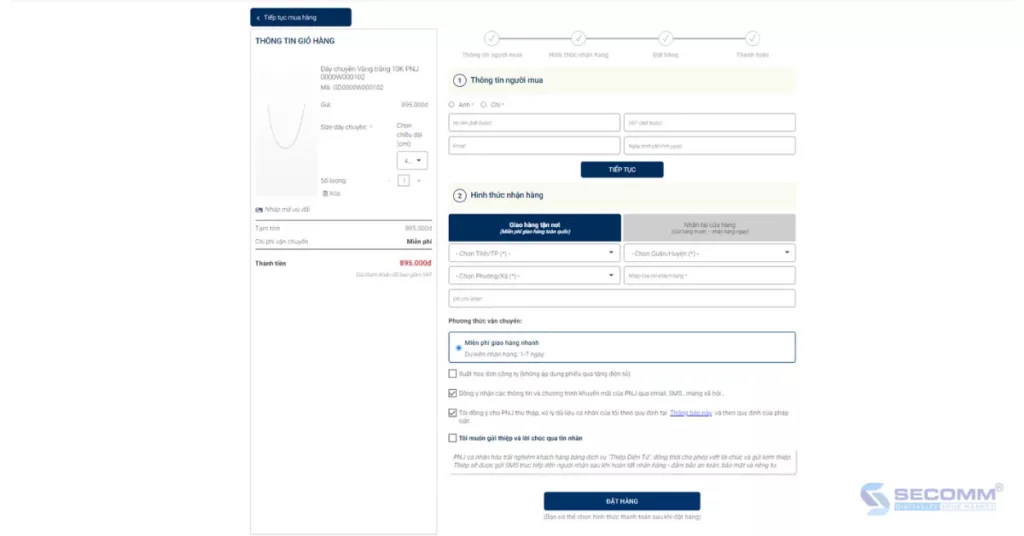
Personalization tools allow businesses to tailor content and promotions based on consumer behaviour and preferences, supported by AI.
By integrating personalized features at relevant touchpoints within an eCommerce website, businesses can enhance conversion rates and ROI (Return on Investment).
Major eCommerce brands like Amazon, Alibaba, Best Buy, etc., consistently incorporate product recommendation features to encourage shopping behaviour from customers.
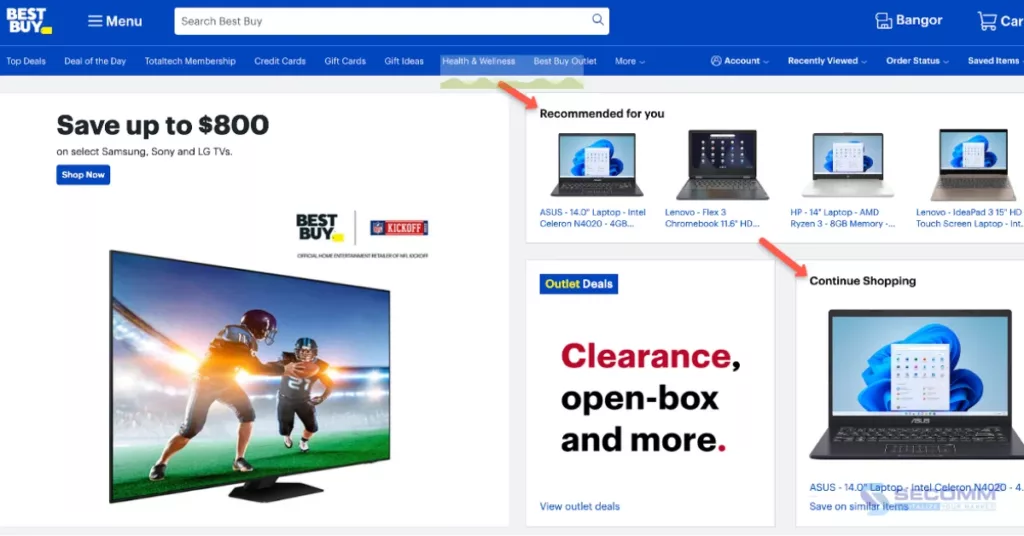
Another crucial aspect of B2C eCommerce is the ability for pages to load quickly and efficiently, ensuring the website maintains stable performance and effectively delivers content on all devices.
To ensure website performance, businesses should opt for major eCommerce platforms such as Adobe Commerce (Magento), Shopify Plus, BigCommerce Enterprise, etc. These platforms offer advanced performance features and robust caching mechanisms, tailored for various industries and preferences, enabling businesses to establish online stores with responsive feedback and faster page loading.
Below are the top 5 eCommerce platforms that SECOMM has evaluated as suitable for businesses following the B2C model.
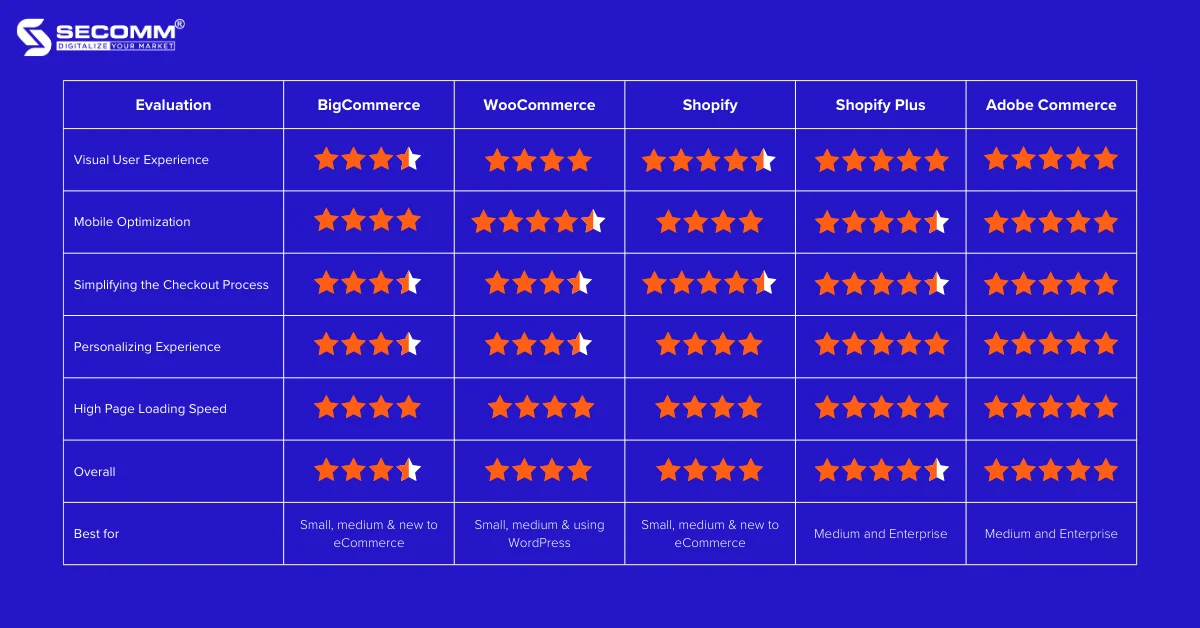
BigCommerce is an eCommerce platform designed for ease of use to assist businesses in initiating their journey to build an eCommerce website.
After years of development, BigCommerce has become one of the feature-rich platforms available for creating websites, optimizing search tools, marketing, etc., with reasonable deployment costs.
Compared to other popular platforms mentioned in this article, the performance, features, and application ecosystem of BigCommerce are not overly outstanding. However, BigCommerce remains a good choice for small, and medium-sized businesses, or those entering the market.
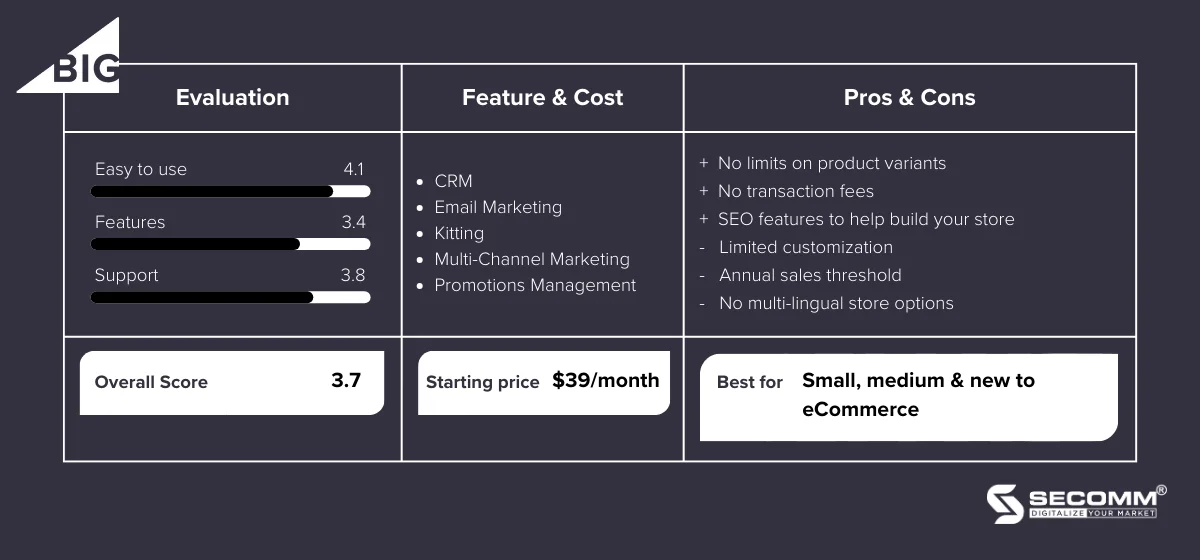
Read more: Shopify vs BigCommerce: Which platform is right for you?
WooCommerce is a free WordPress plugin that enables brands to establish an eCommerce website by adding eCommerce functionality to an existing WordPress site. The WooCommerce plugin helps transform a regular WordPress website into an eCommerce site with all the necessary features, easily customizable with just a few clicks.
Businesses can leverage the extensive ecosystem of WooCommerce to upgrade both functionality and design for the most suitable interface. Therefore, WooCommerce is also a good choice for small or medium-sized B2C businesses, especially those that have previously used WordPress.
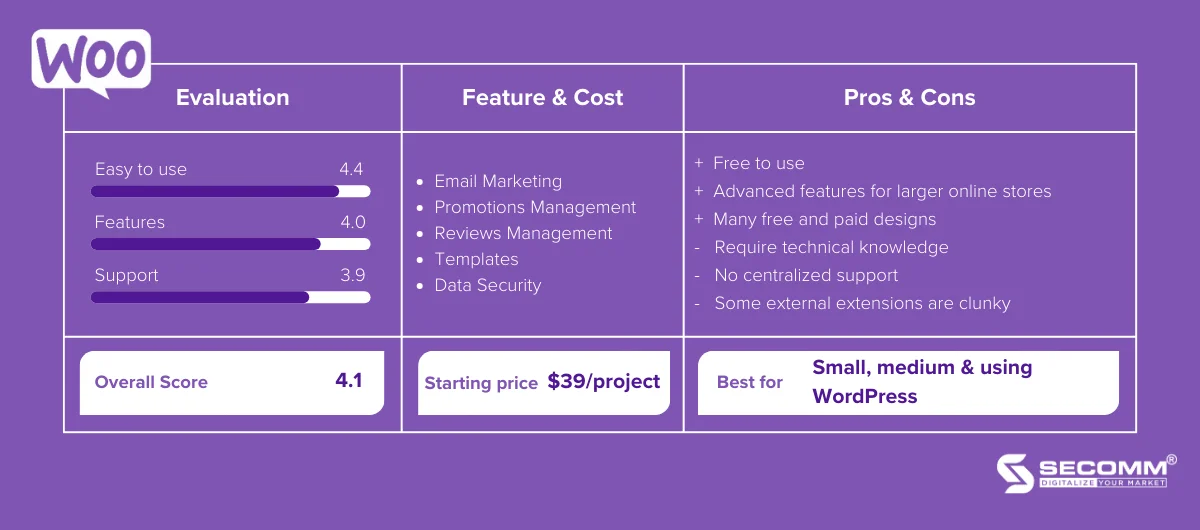
Shopify is one of the popular eCommerce platforms that businesses can use to build, develop, and manage online stores.
Shopify operates on the SaaS (Software as a Service) model, so businesses pay a monthly fee to use the platform and must adhere to its regulations.
However, Shopify manages hosting and takes responsibility for technical issues to ensure the safety and efficient operation of the business’s eCommerce website.
The platform provides the necessary features and benefits for businesses to successfully build and develop an online store. In terms of suitability for B2C businesses, Shopify is most suitable for small to medium-sized enterprises or those entering the eCommerce market.
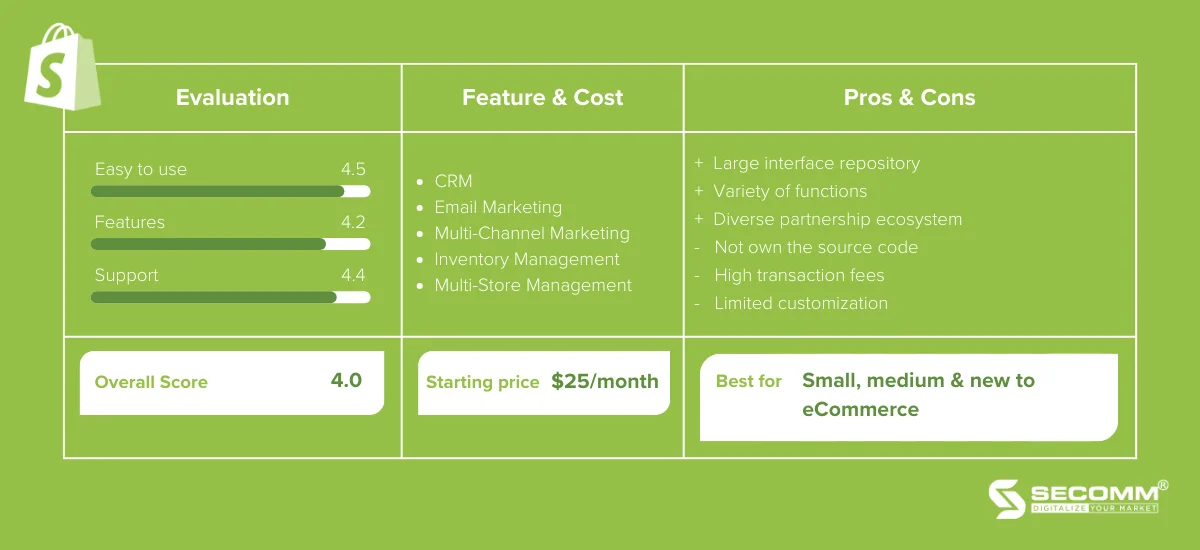
Shopify Plus is the enterprise-level version of the eCommerce platform provided by Shopify, specifically designed for large brands with an annual transaction value of over 1 million USD and high growth rates.
Unlike Shopify, Shopify Plus follows the PaaS (Platform as a Service) model, allowing businesses to utilize the development environment of Shopify Plus to develop databases, web servers, functionality, etc., for their eCommerce system.
The initial cost for using Shopify Plus is around $2,000 per month and increases gradually based on revenue. Therefore, using this platform to meet the needs of B2C eCommerce or any industry-specific requirements is relatively straightforward.
However, Shopify Plus is more suitable for medium to large-scale businesses as it requires technical knowledge and involves relatively high usage costs.
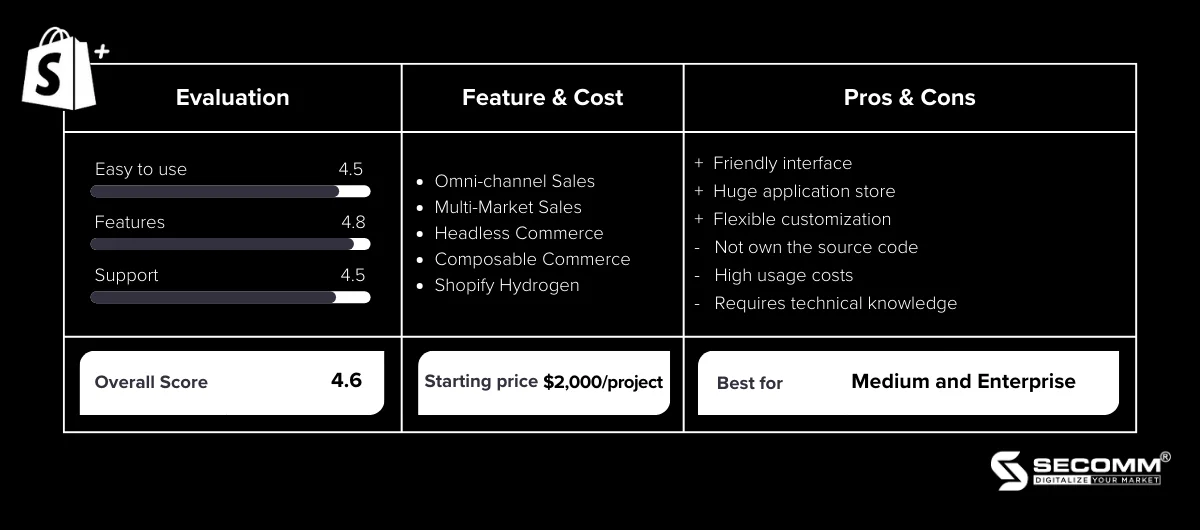
Read more:
Adobe Commerce is an open-source eCommerce platform specially designed to serve medium to large-scale businesses, offering high customization and scalability. Currently, Adobe Commerce has two main versions: Adobe Commerce Cloud and Magento Open Source.
As one of the leading platforms in eCommerce, Adobe Commerce is consistently highly regarded across all scales and industries, including B2C eCommerce businesses.
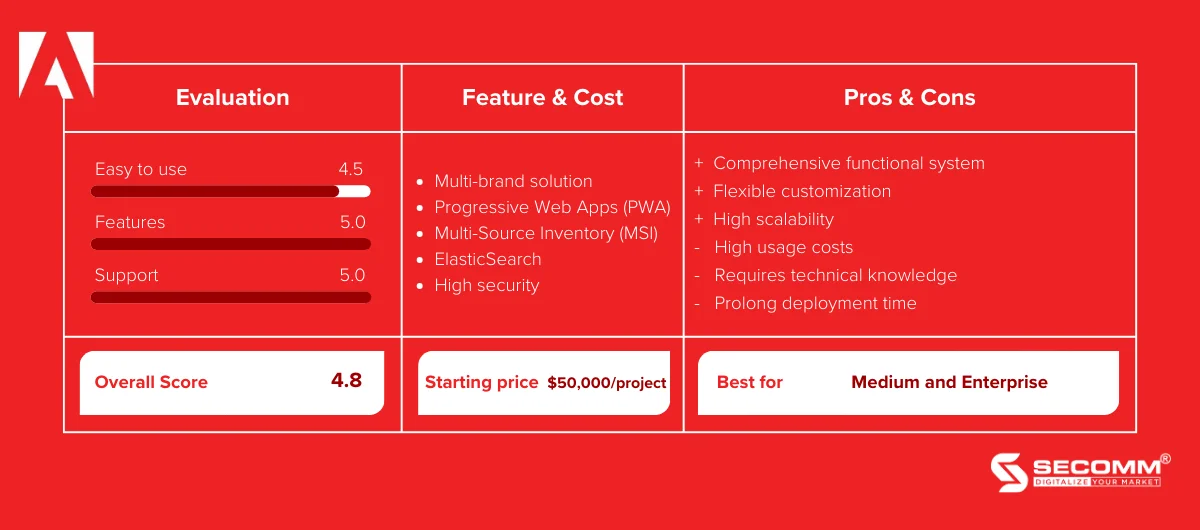
Read more:
Above are the 5 popular platforms that B2C businesses prefer to use for building eCommerce websites, catering to online business goals for their brands.
However, choosing the most suitable platform for each business will depend on various factors such as business strategy, budget, deployment time, and the long-term direction set by business managers.
With deep expertise and the development of complex eCommerce systems for clients such as Changi Airport Group (Singapore), Trentham Estate (Australia), and The Warehouse (Vietnam), SECOMM understands the challenges in choosing a platform and deploying eCommerce that businesses are facing.
Contact SECOMM now or call directly at the hotline number (028 7108 9908) for free advice on the eCommerce website building roadmap!
 2
2
 8,779
8,779
 0
0
 1
1Subscribe to get the latest eBook!
Hotline